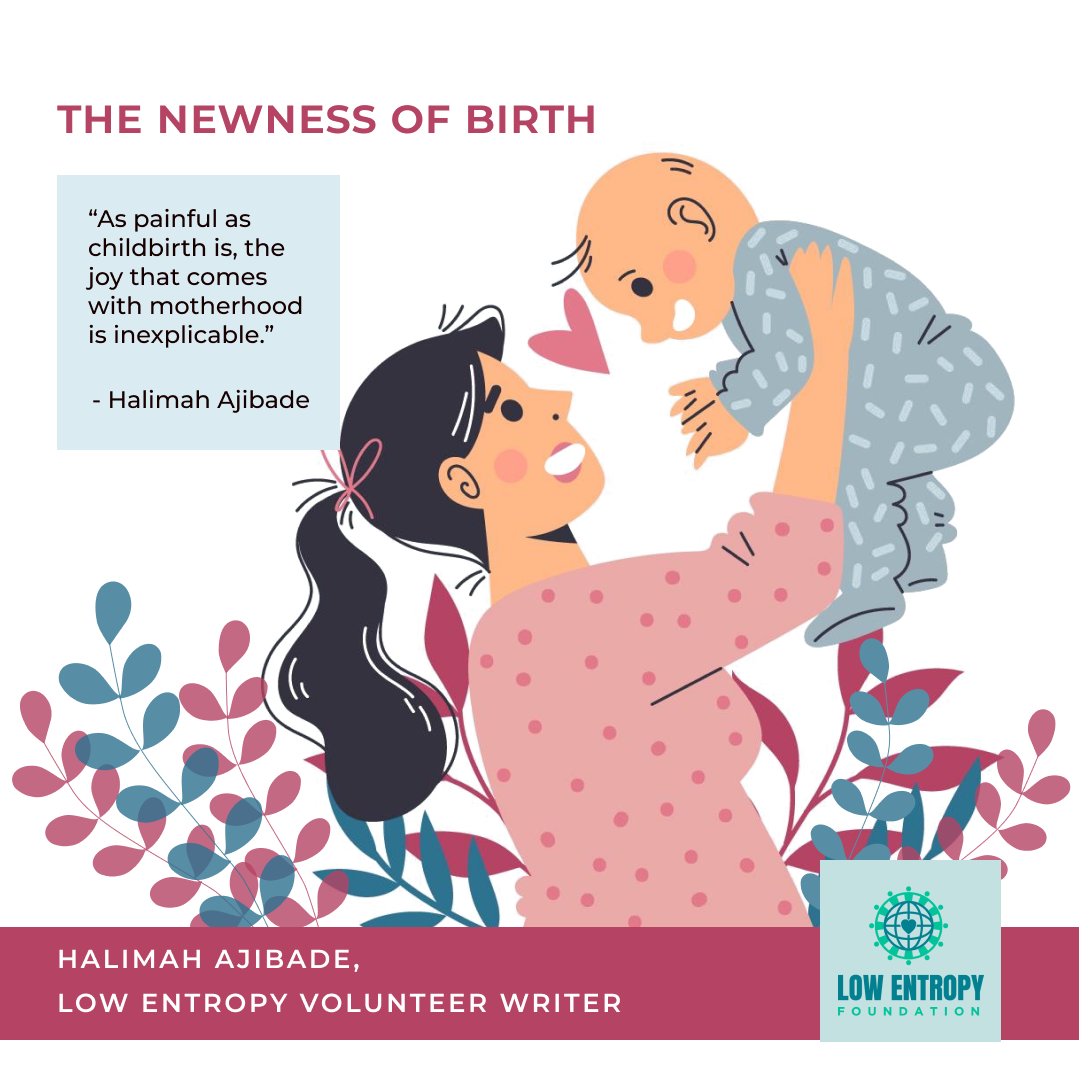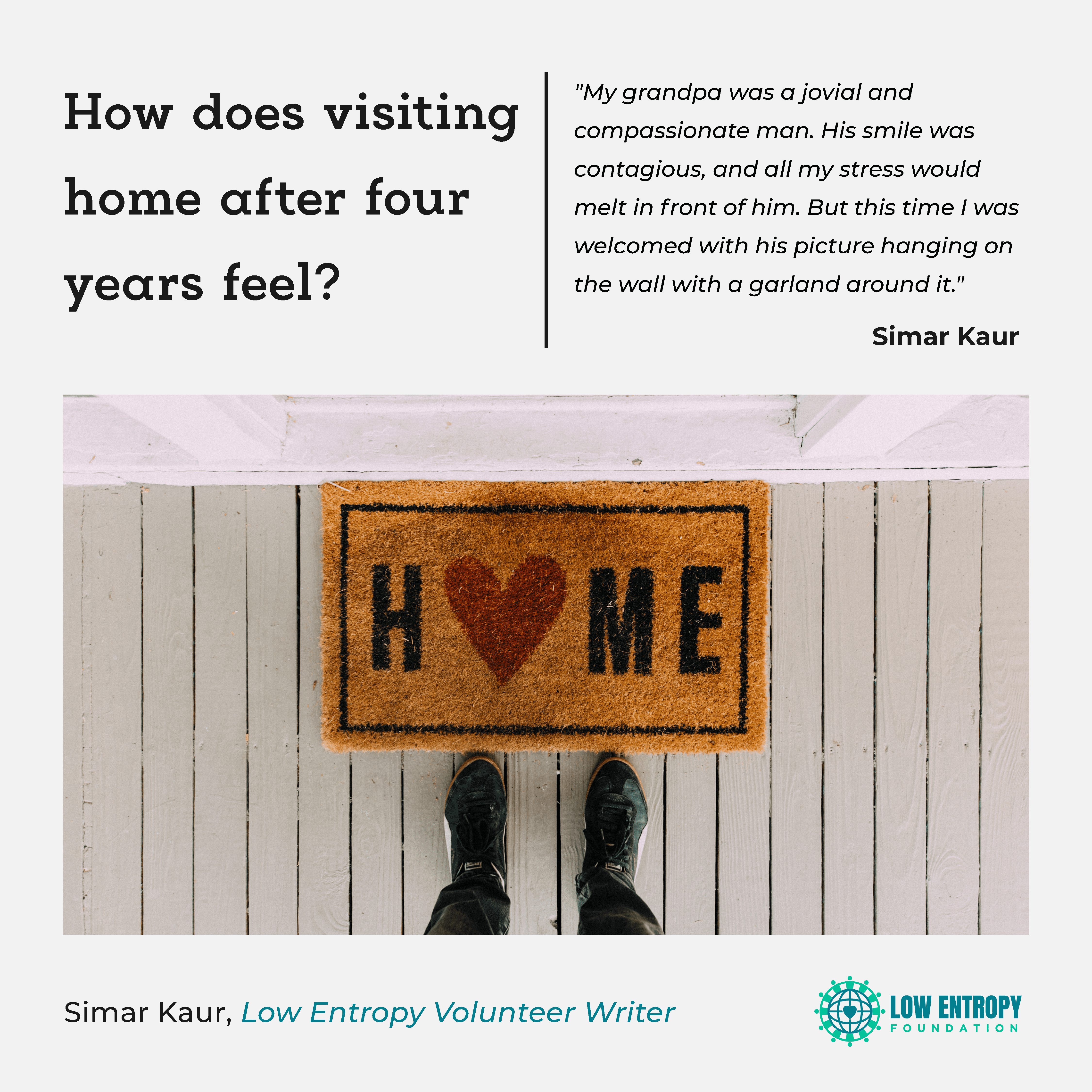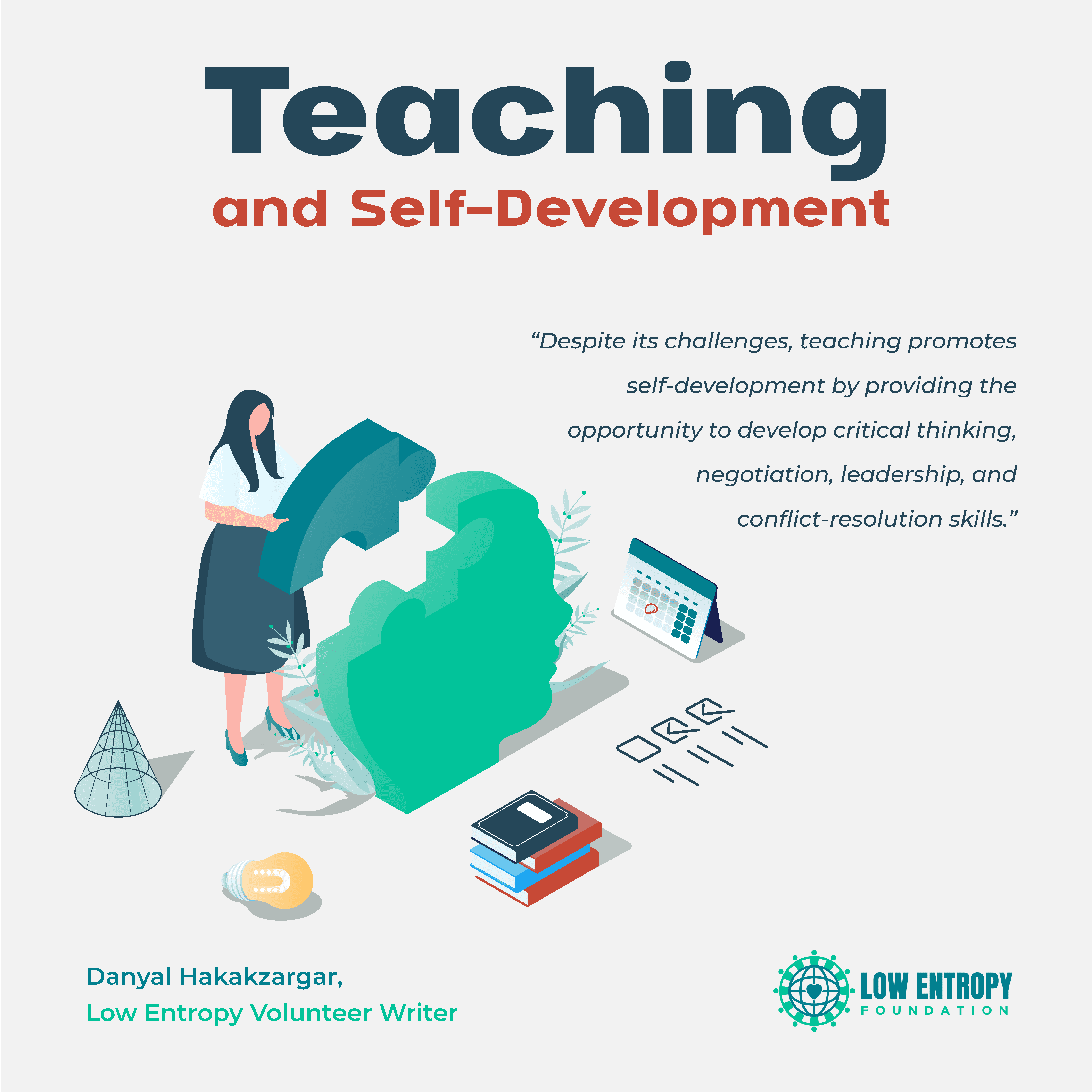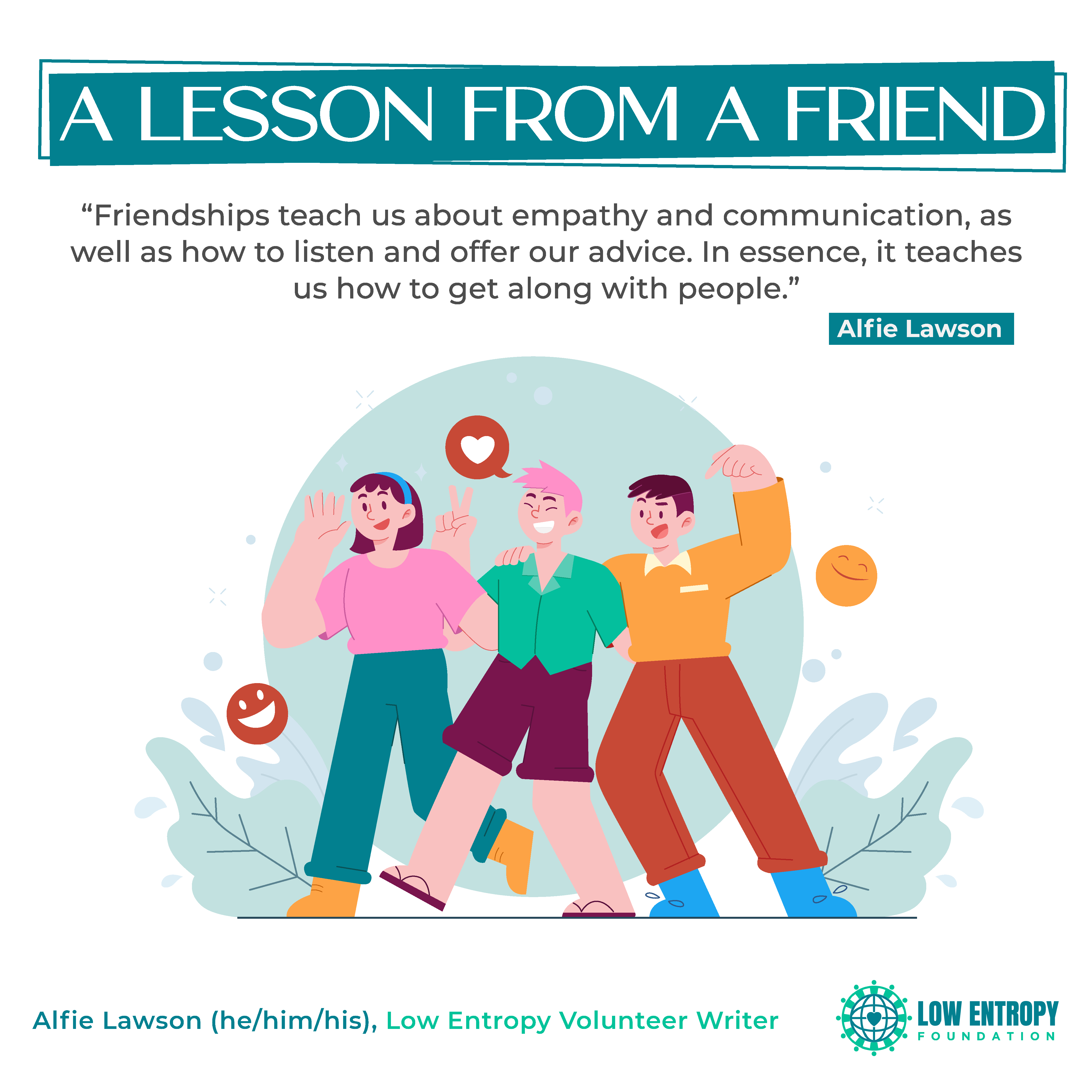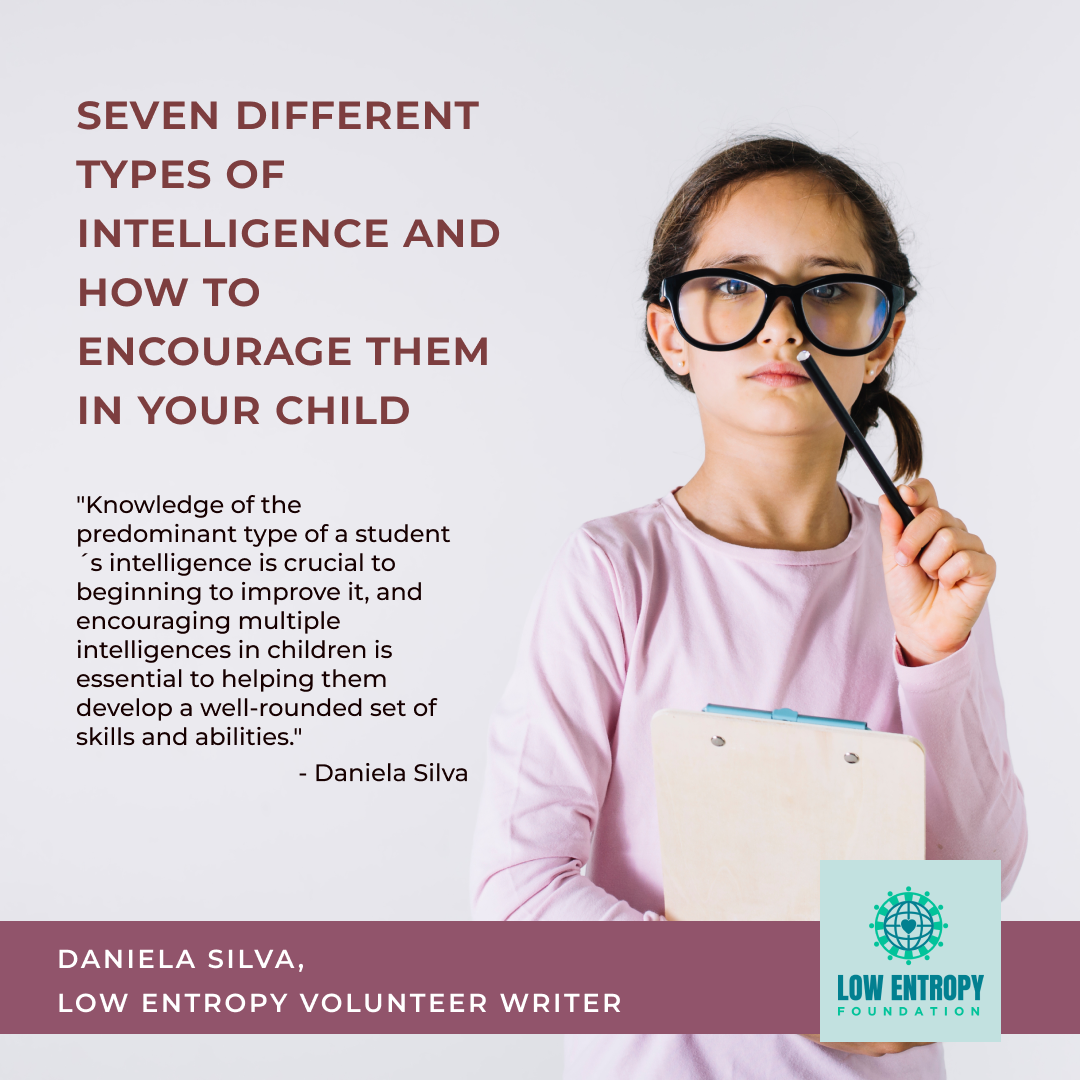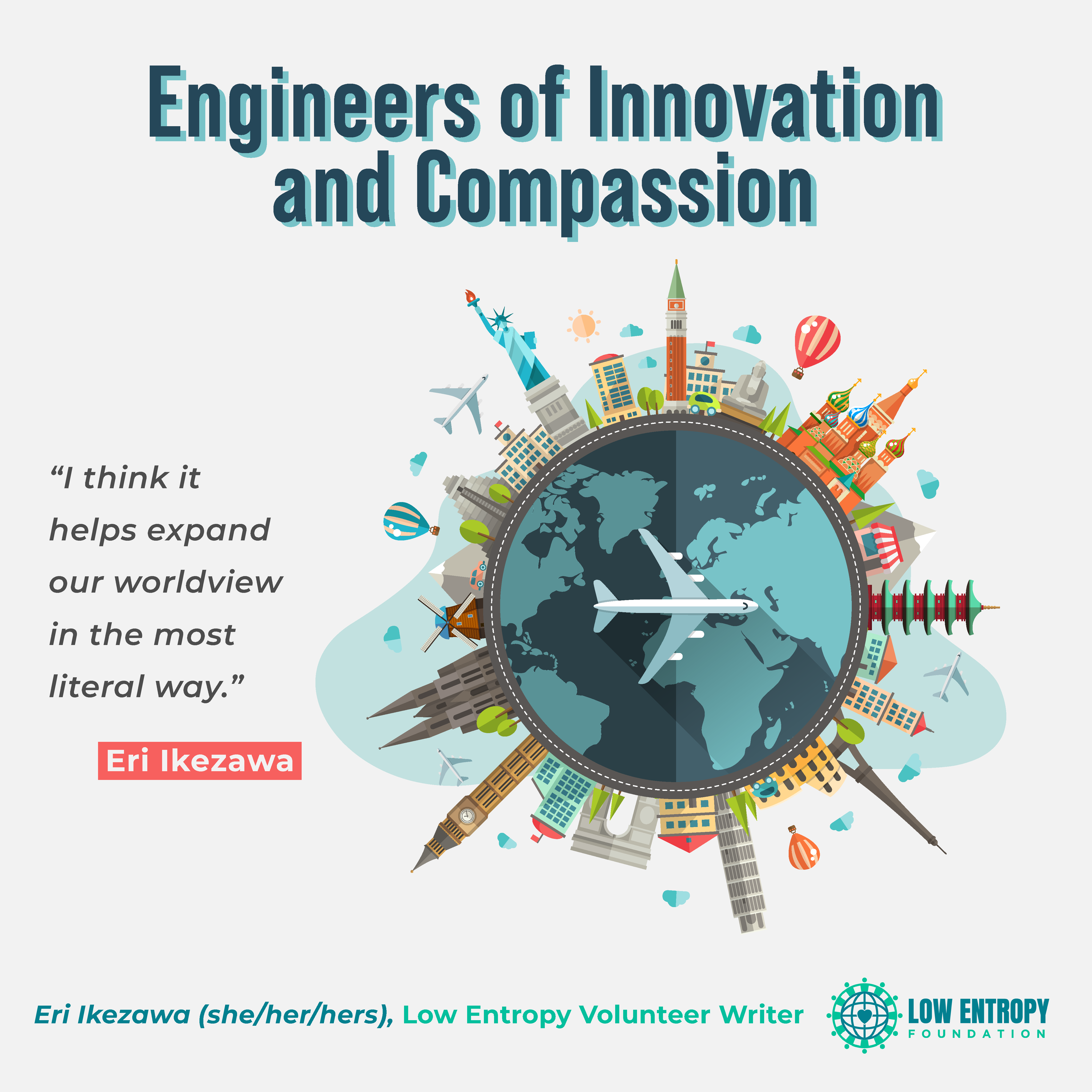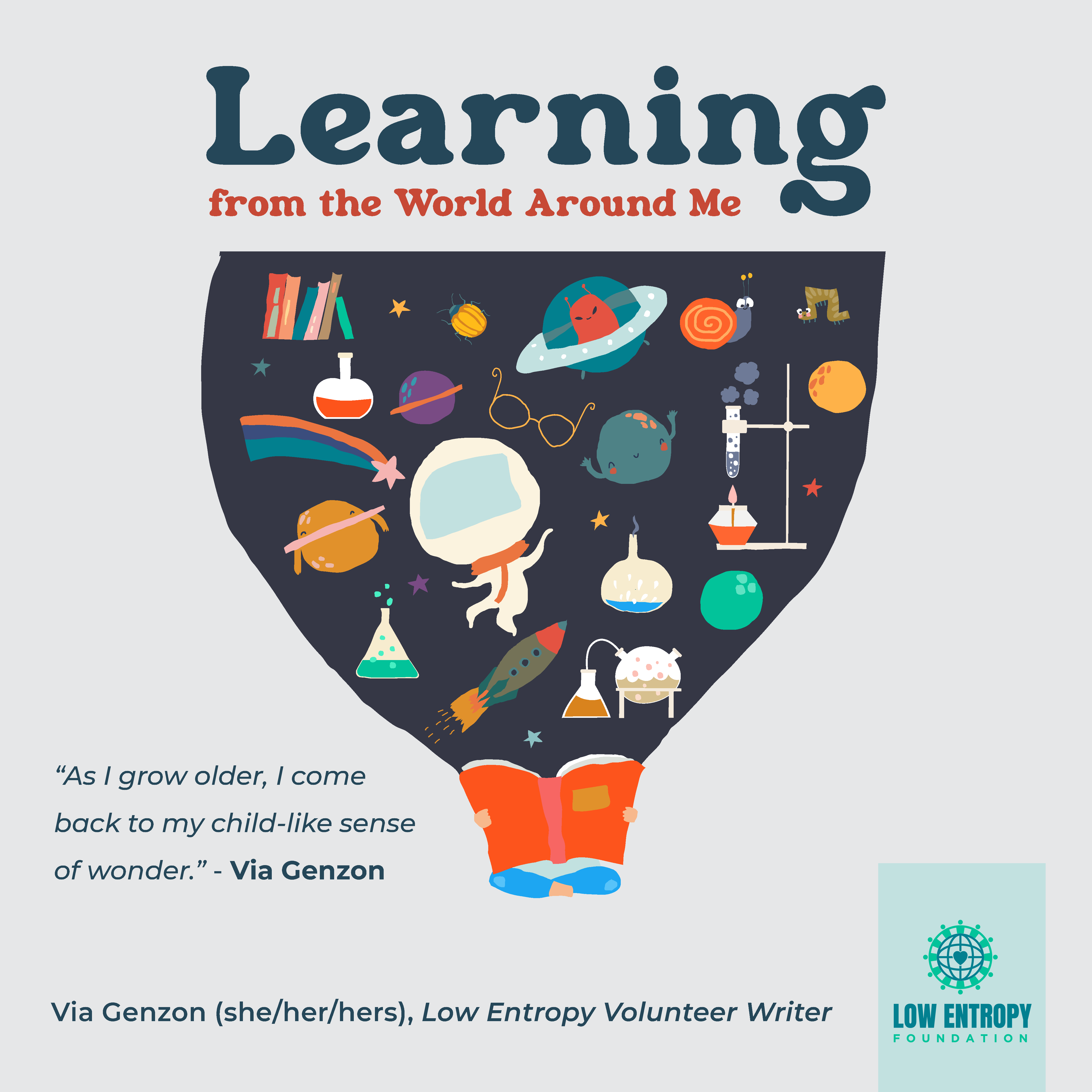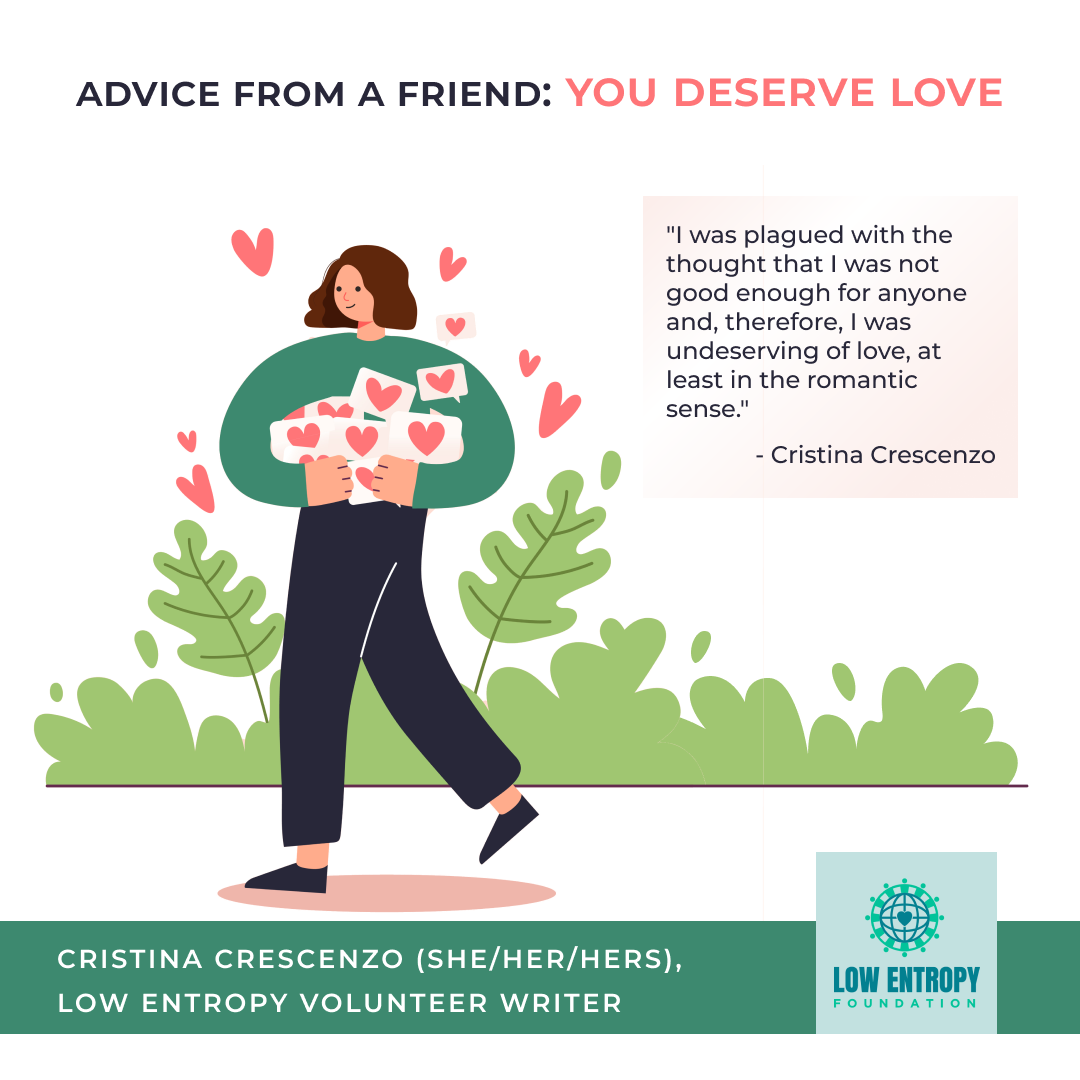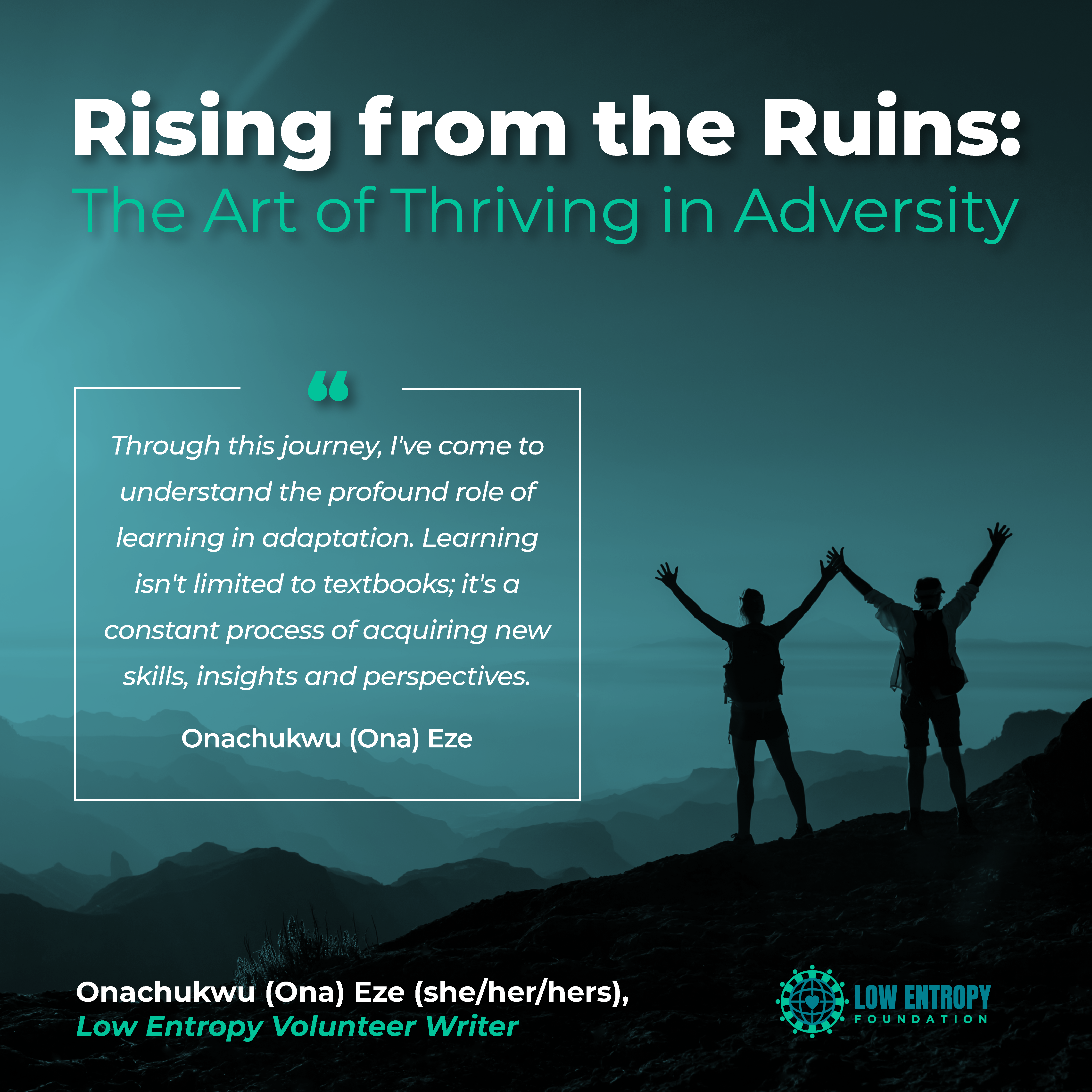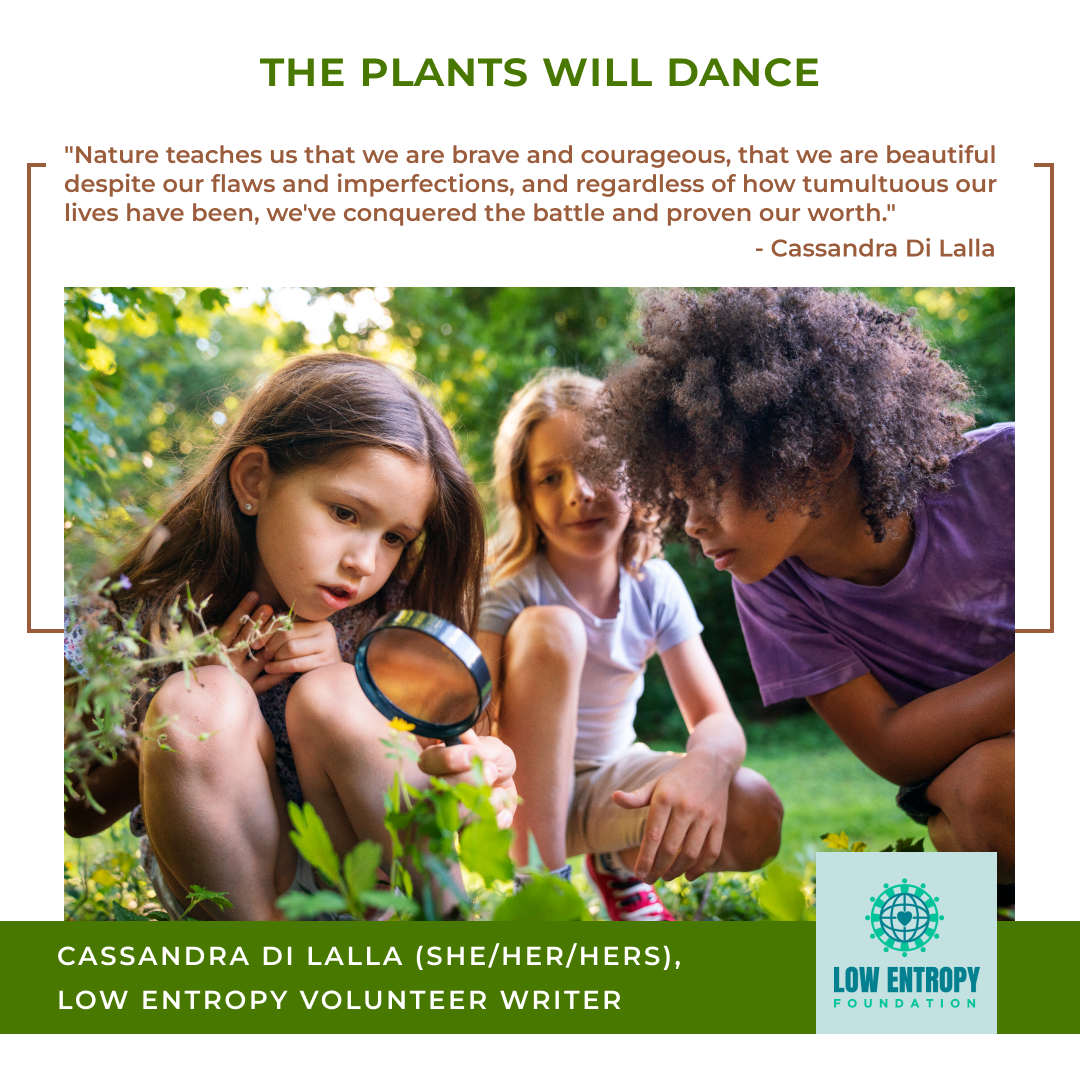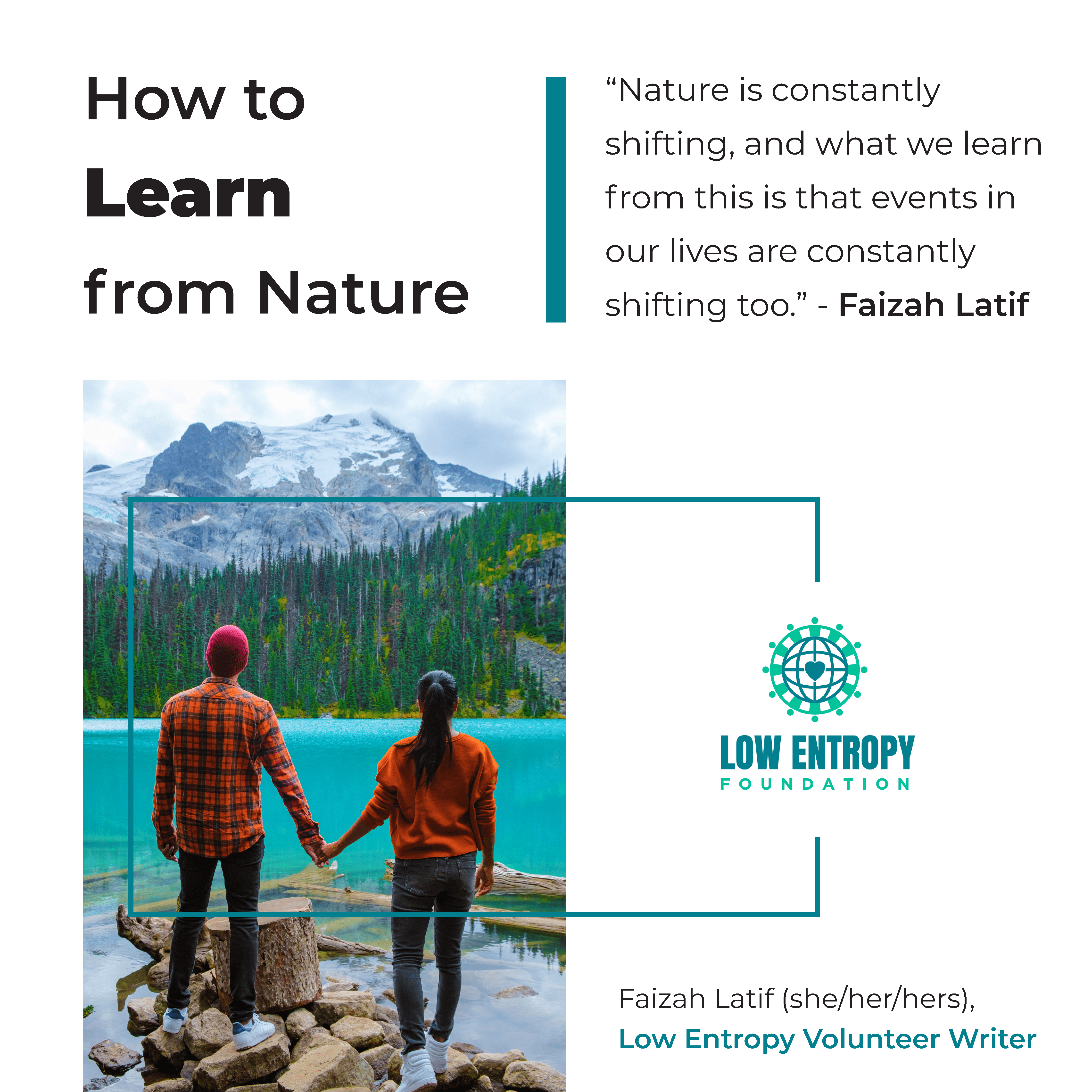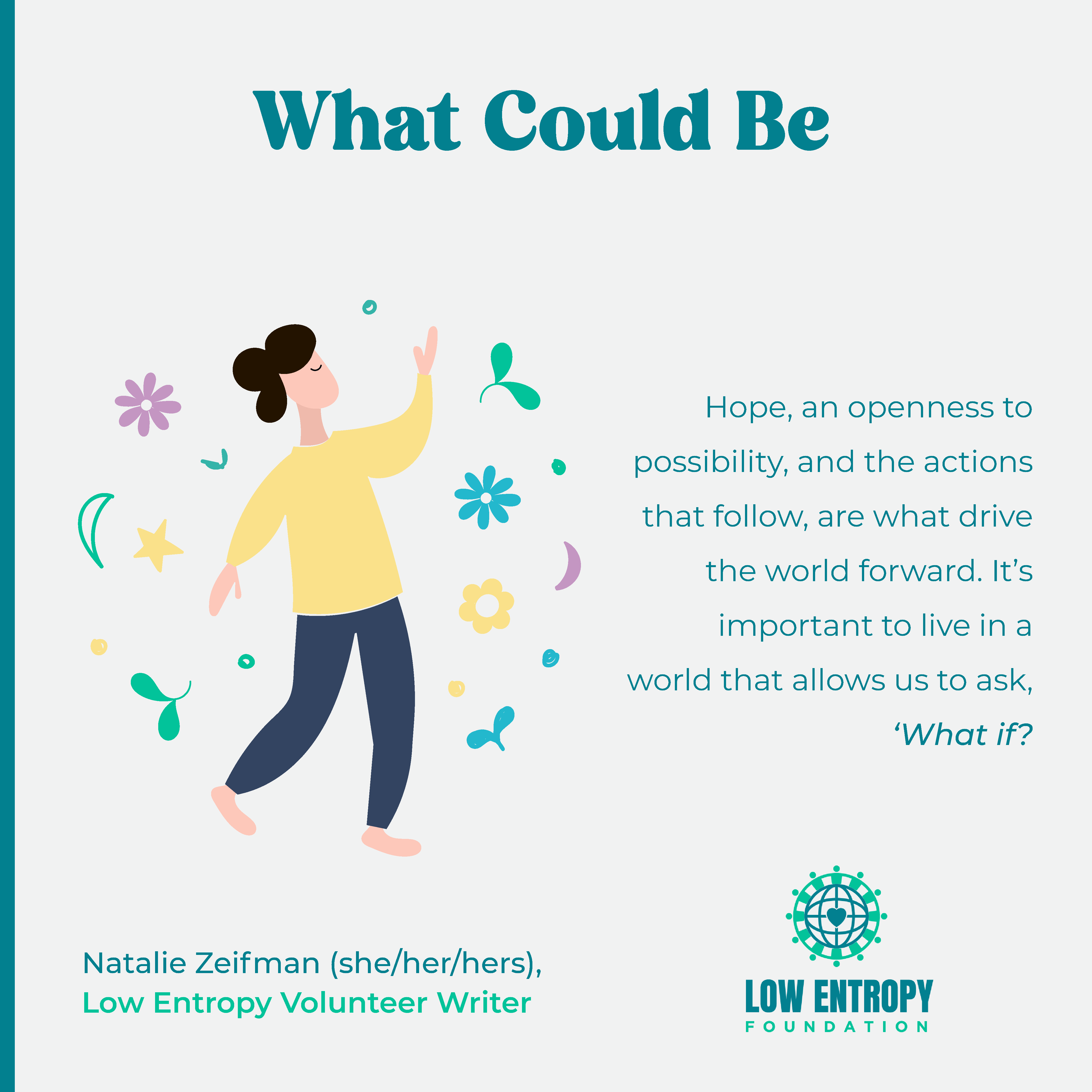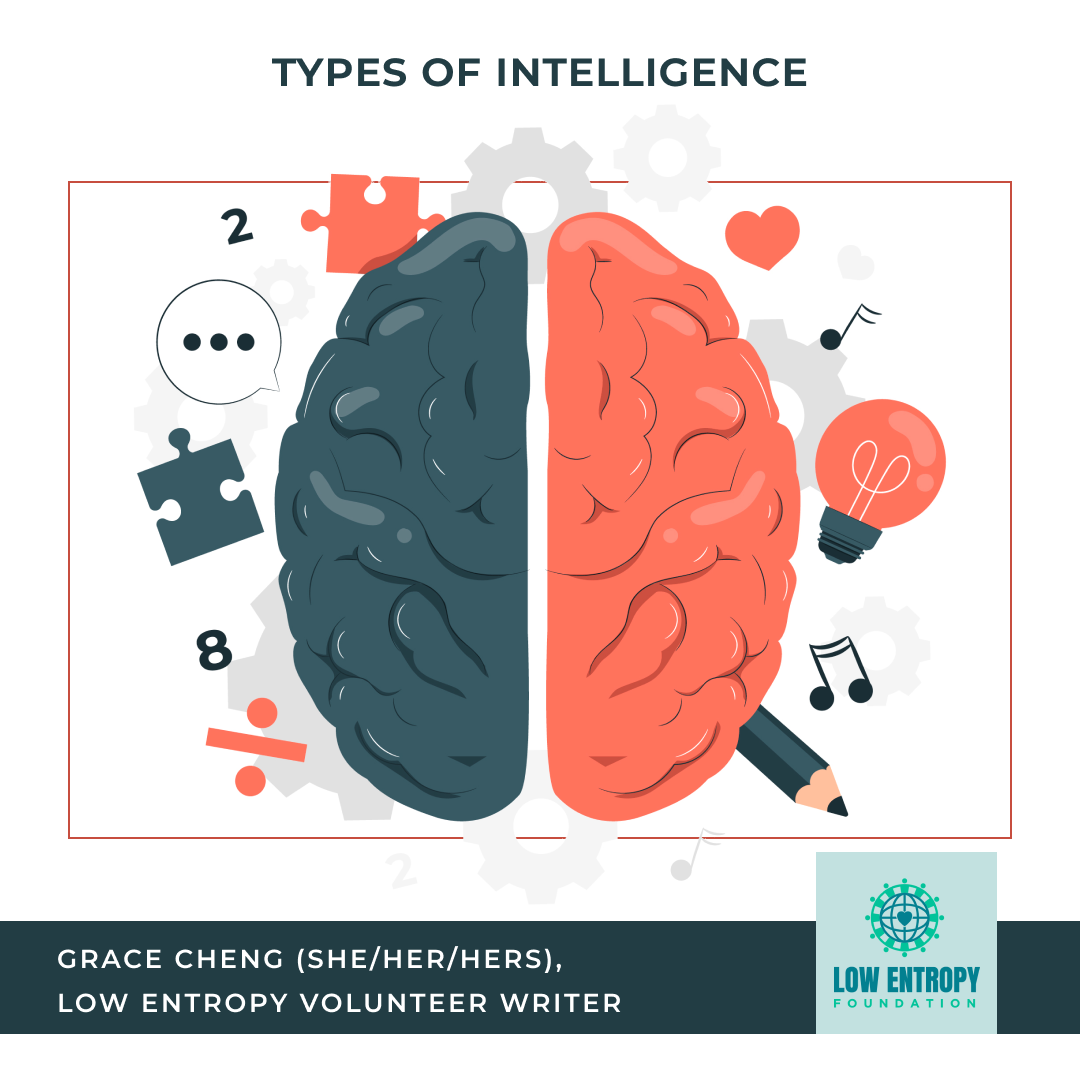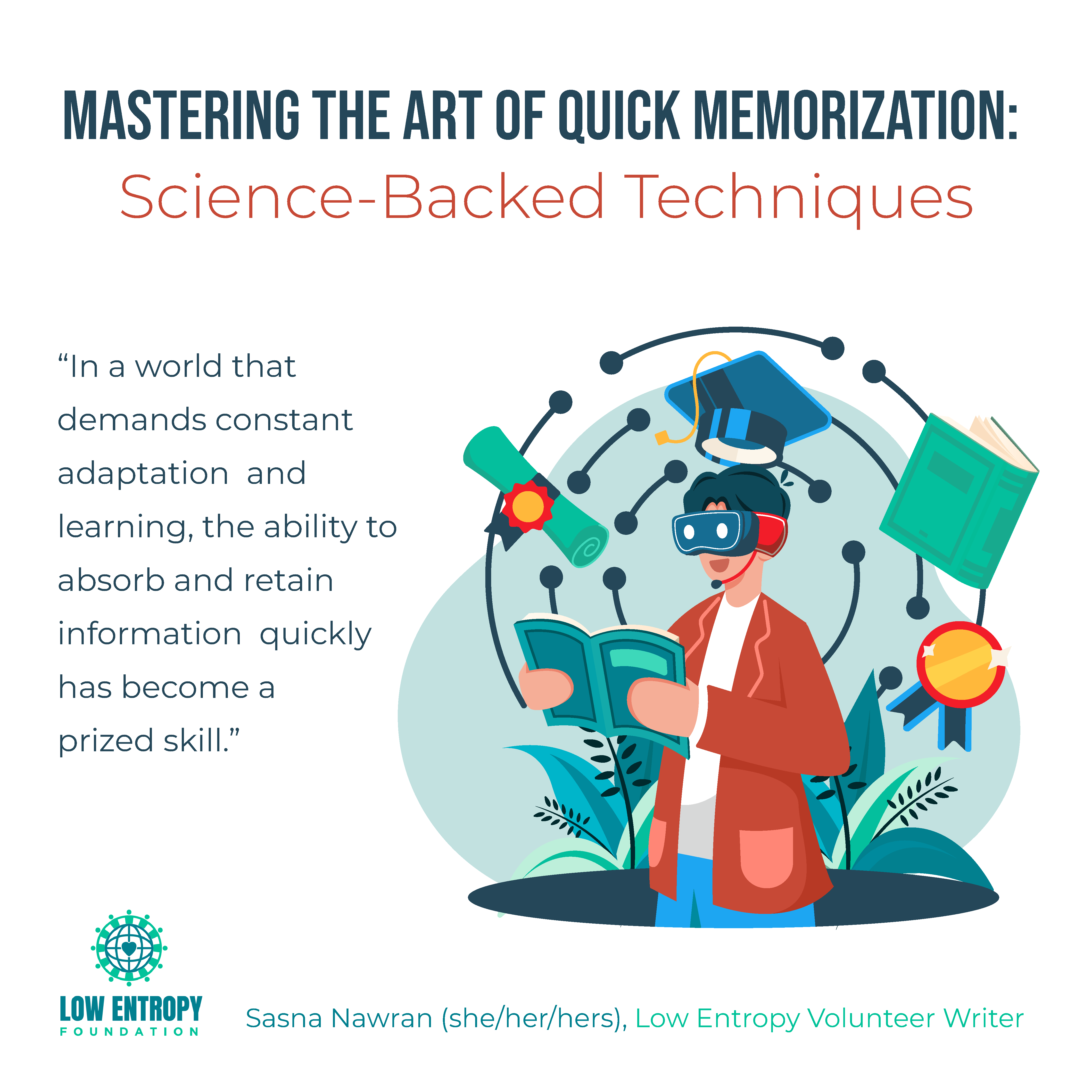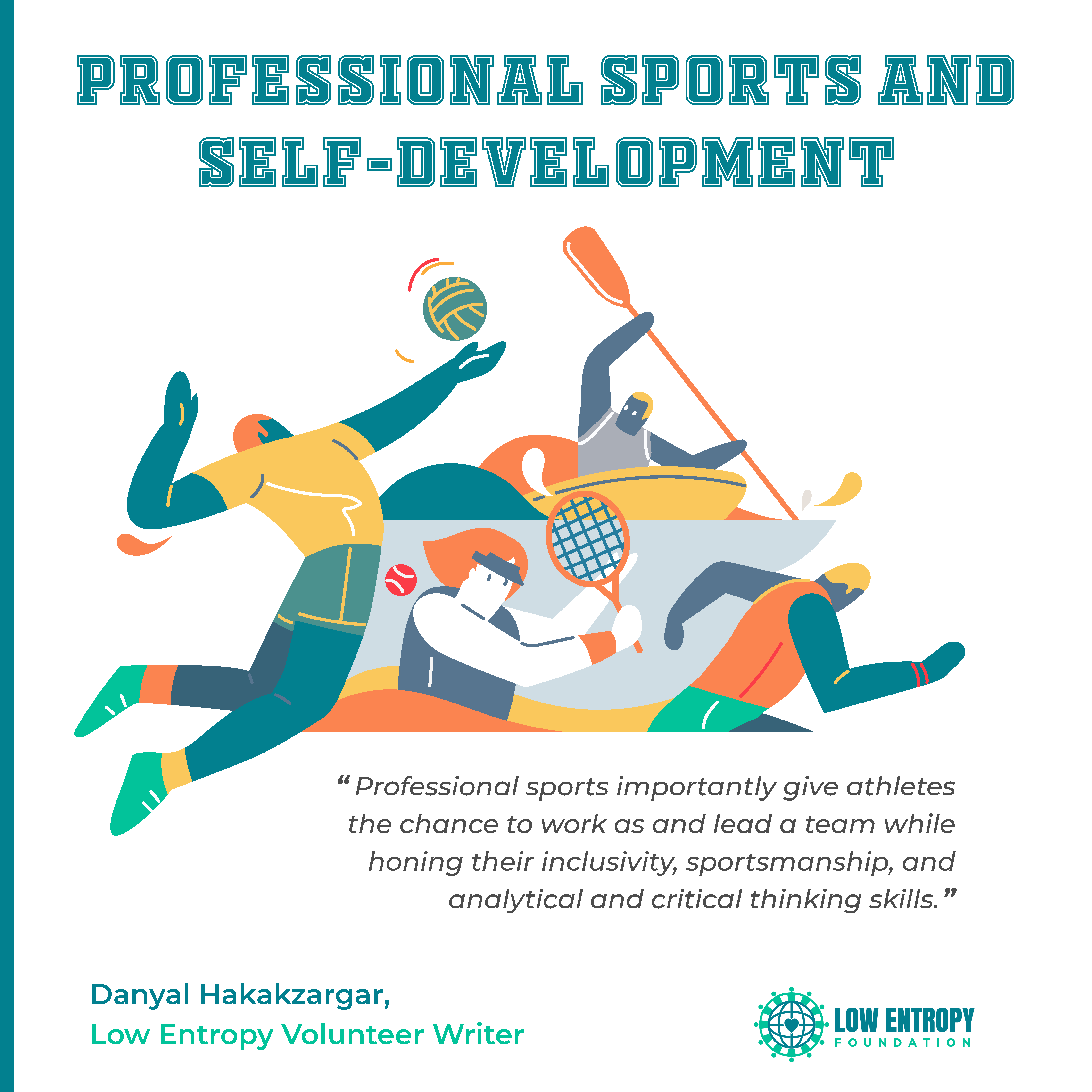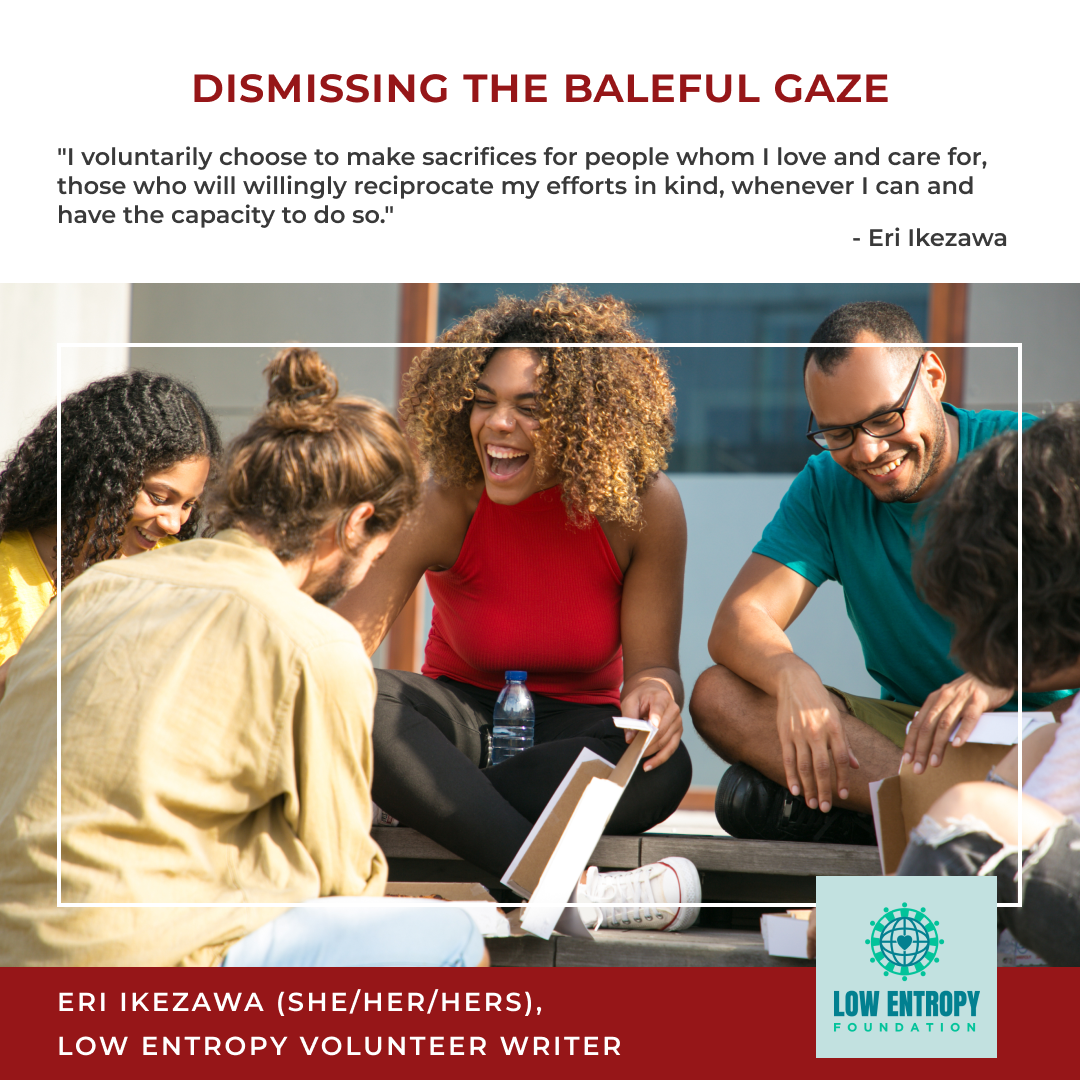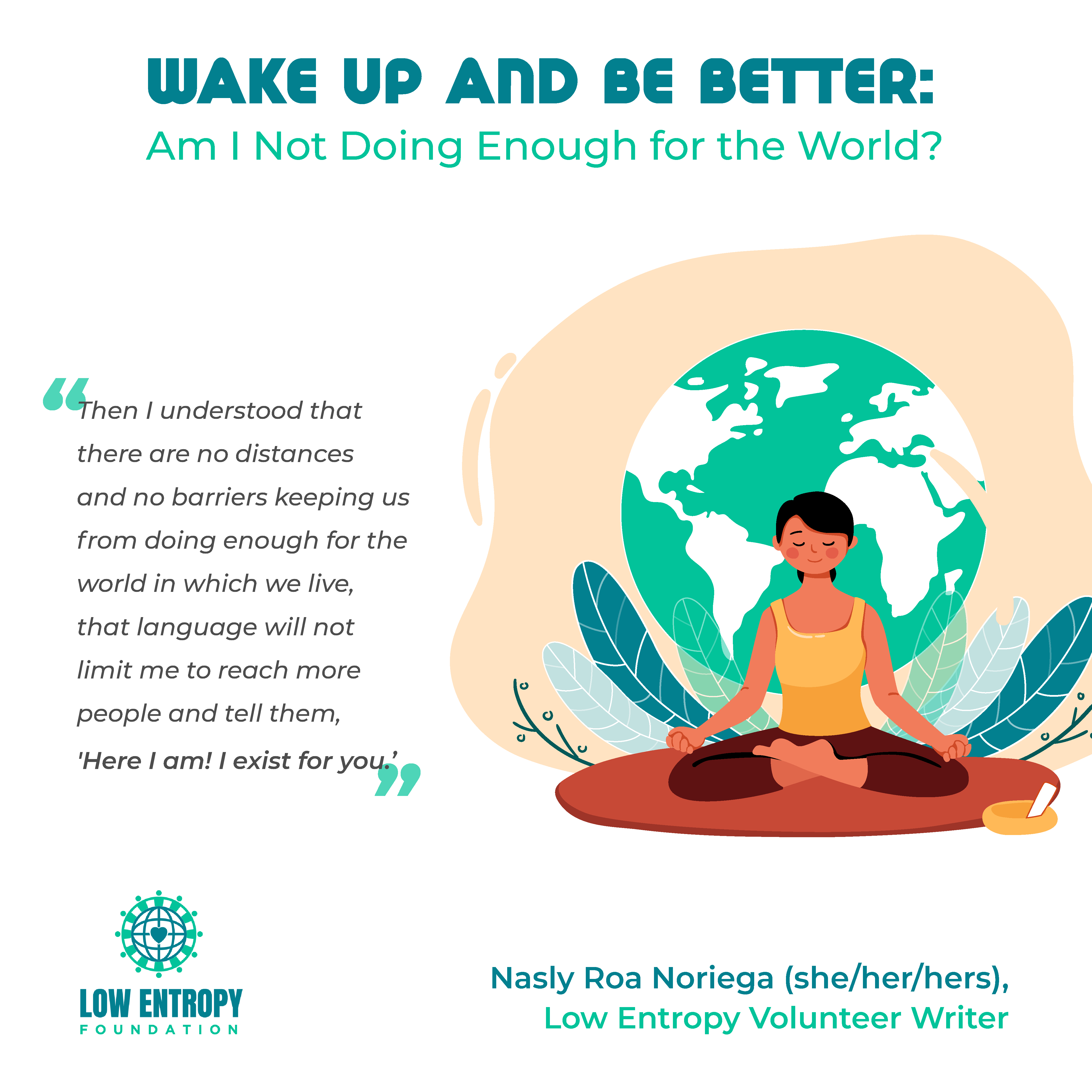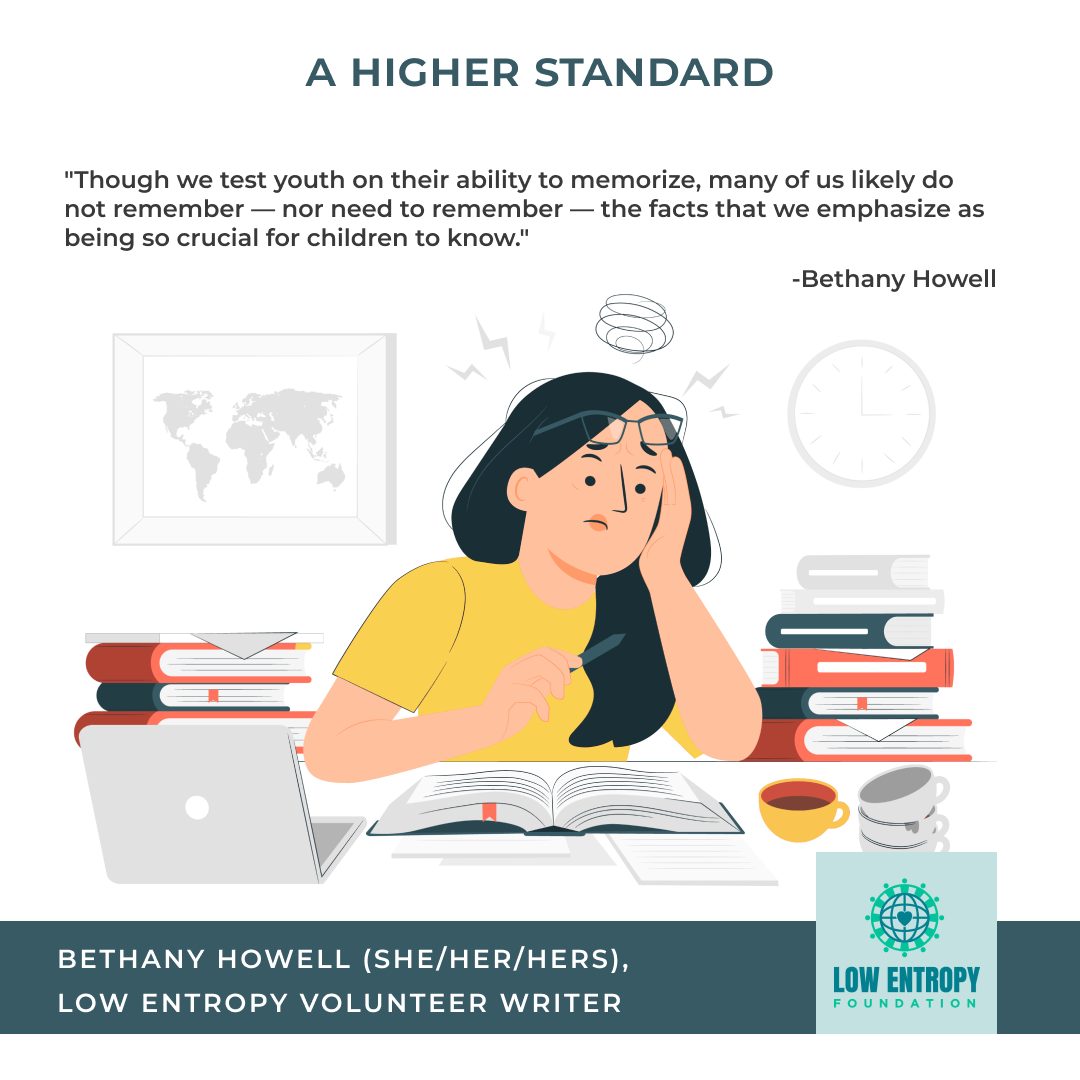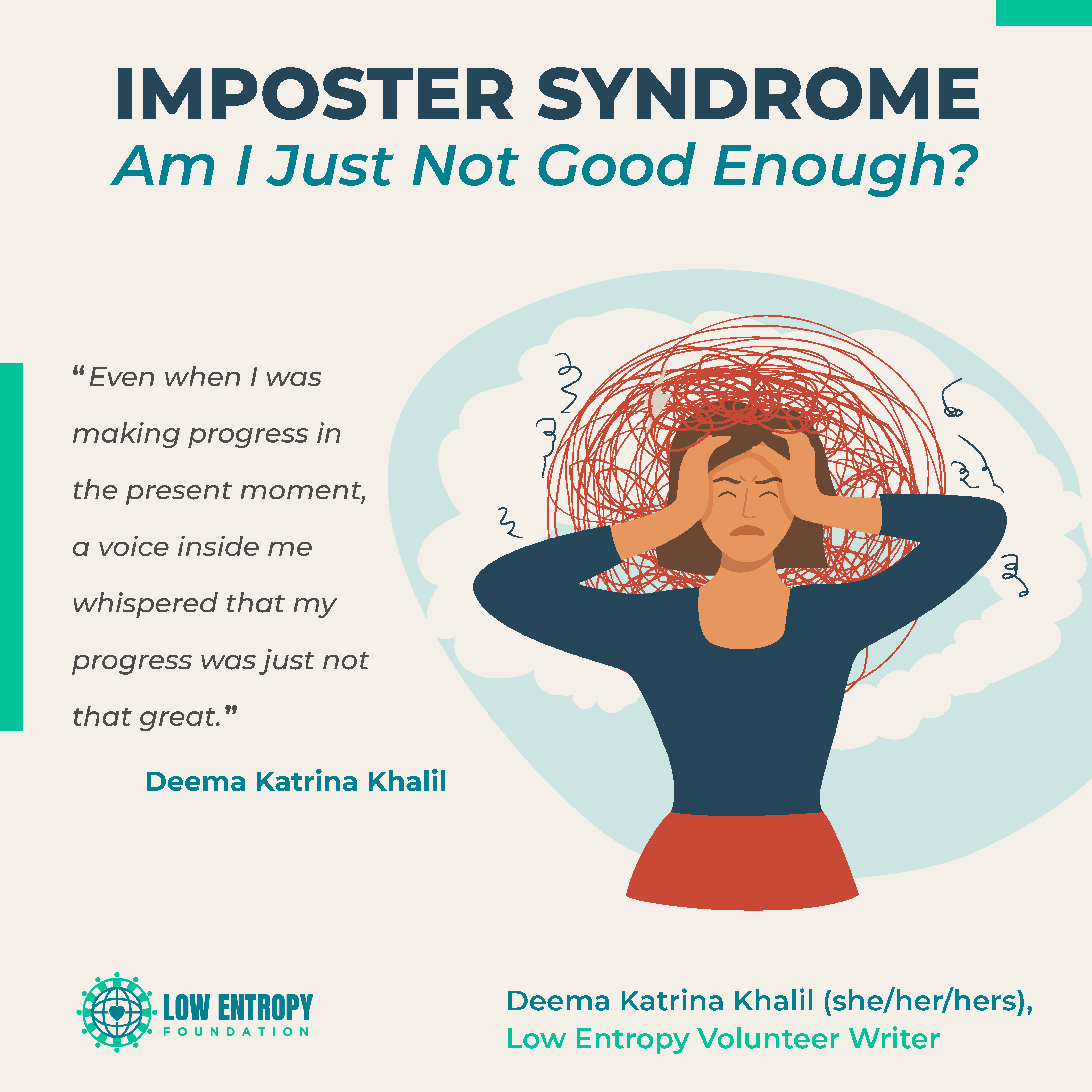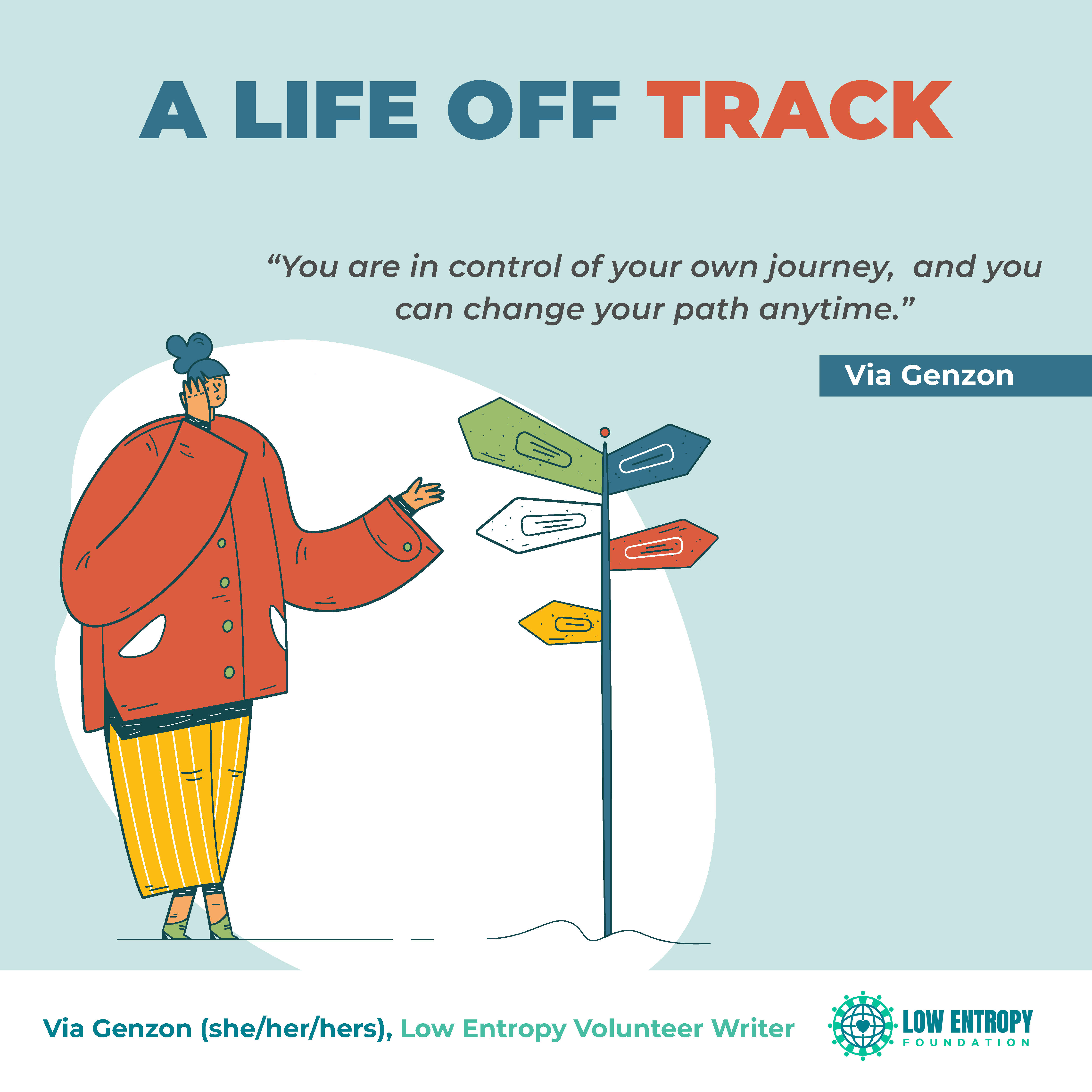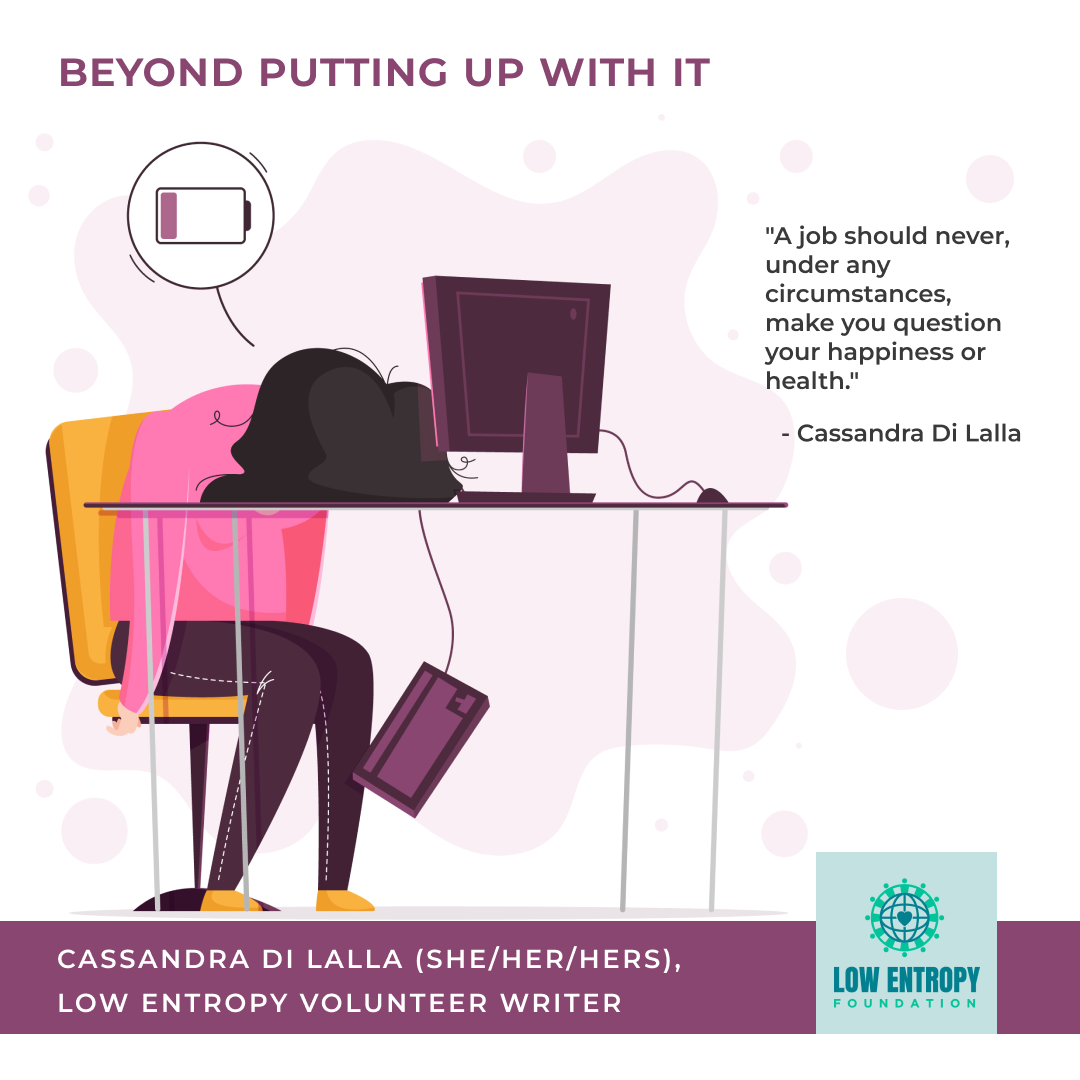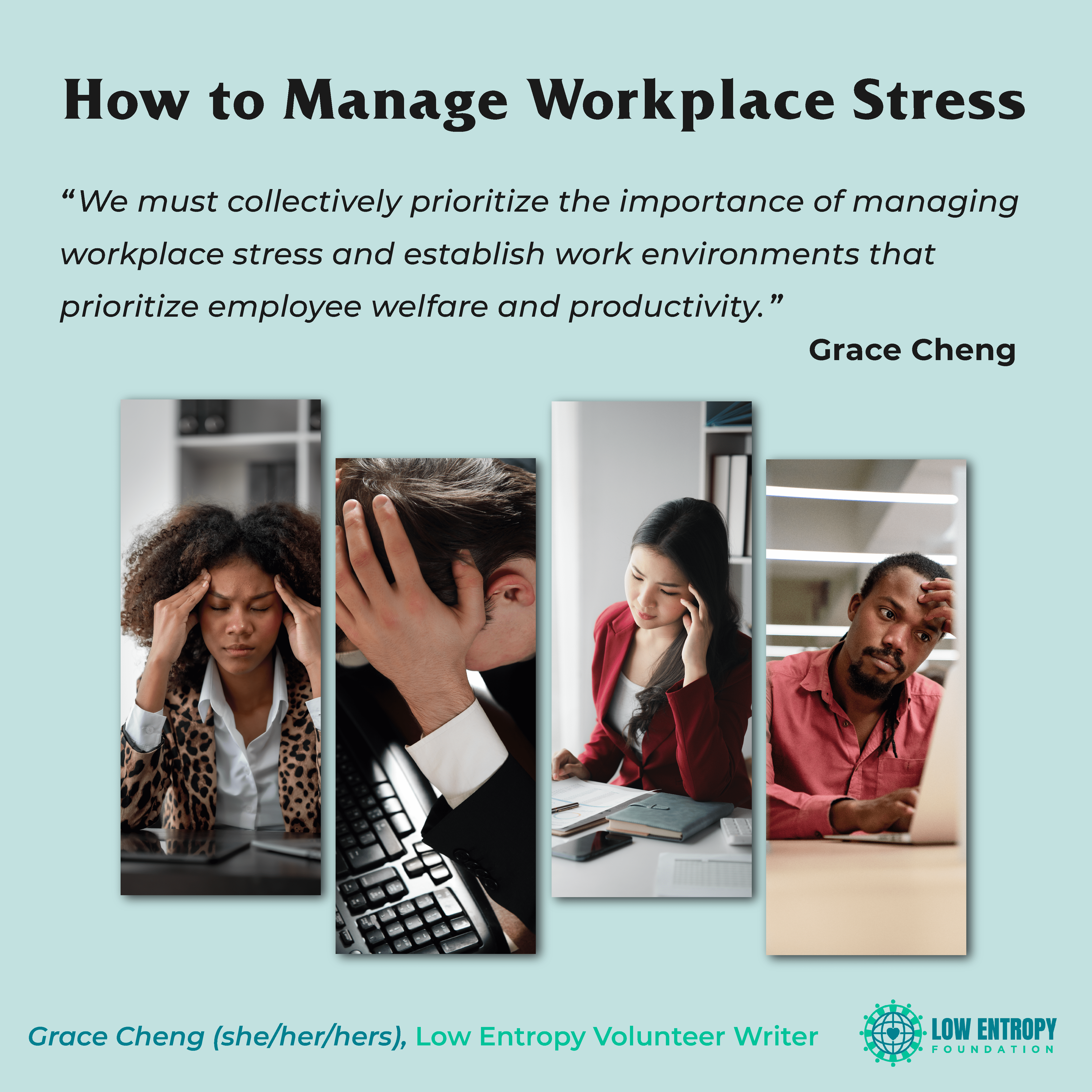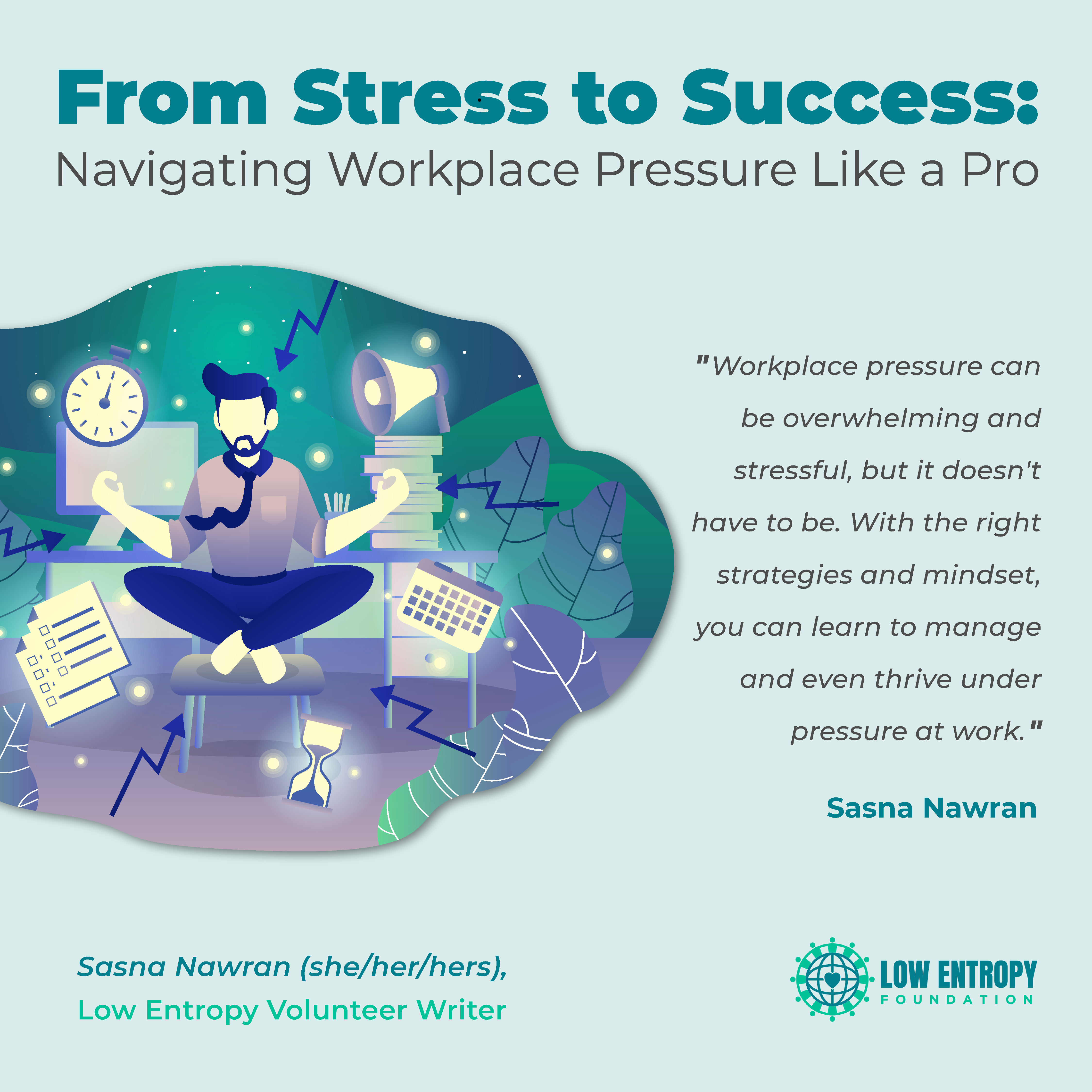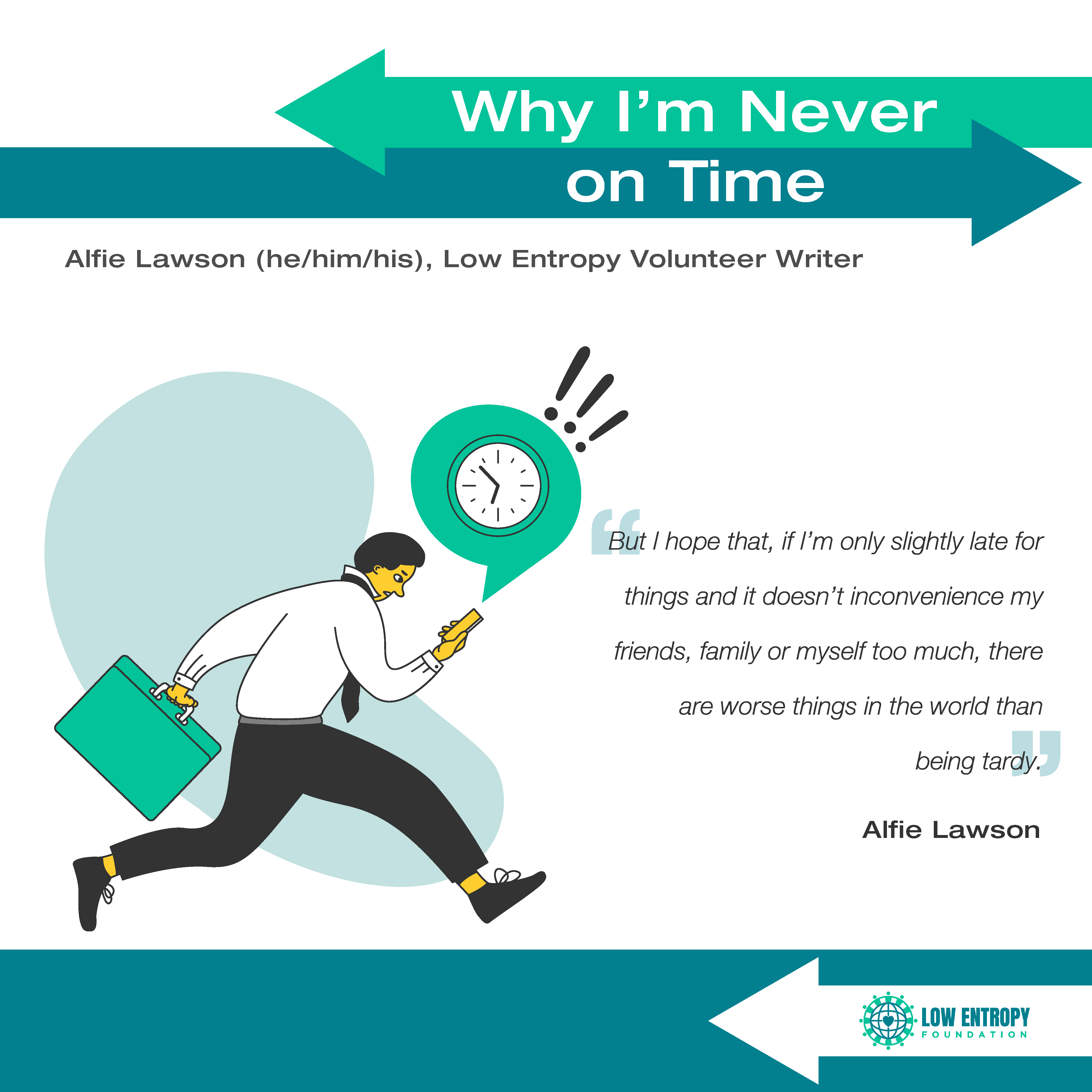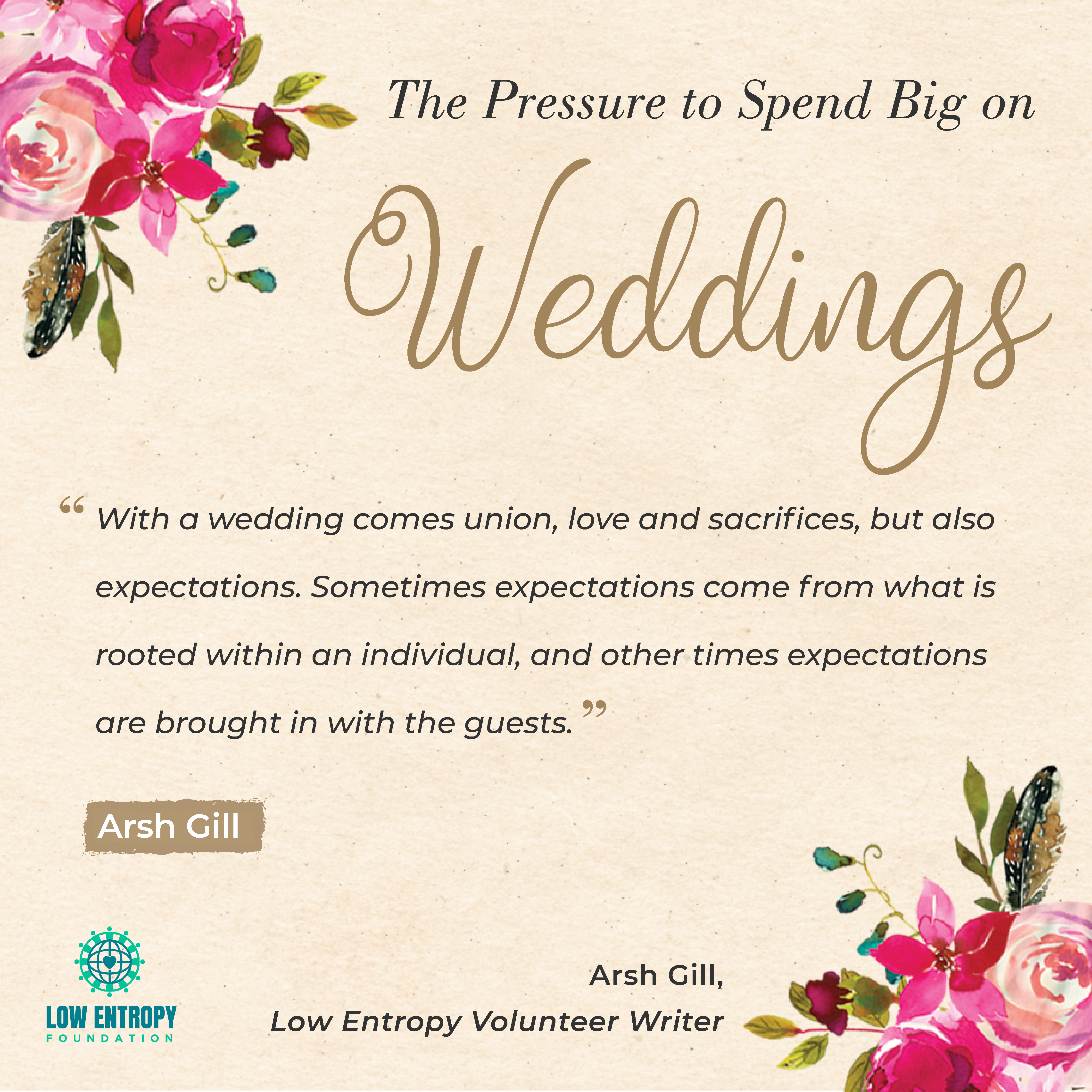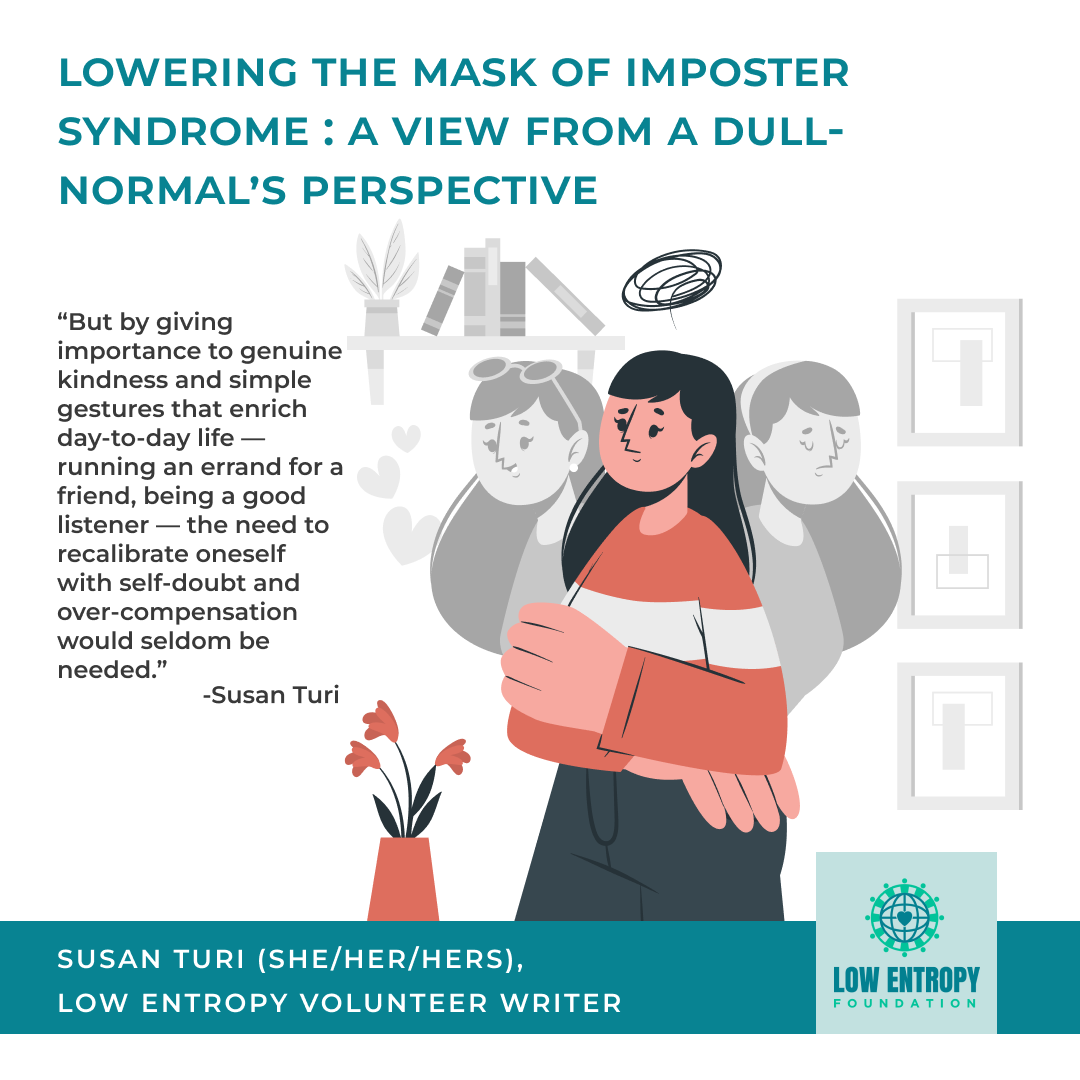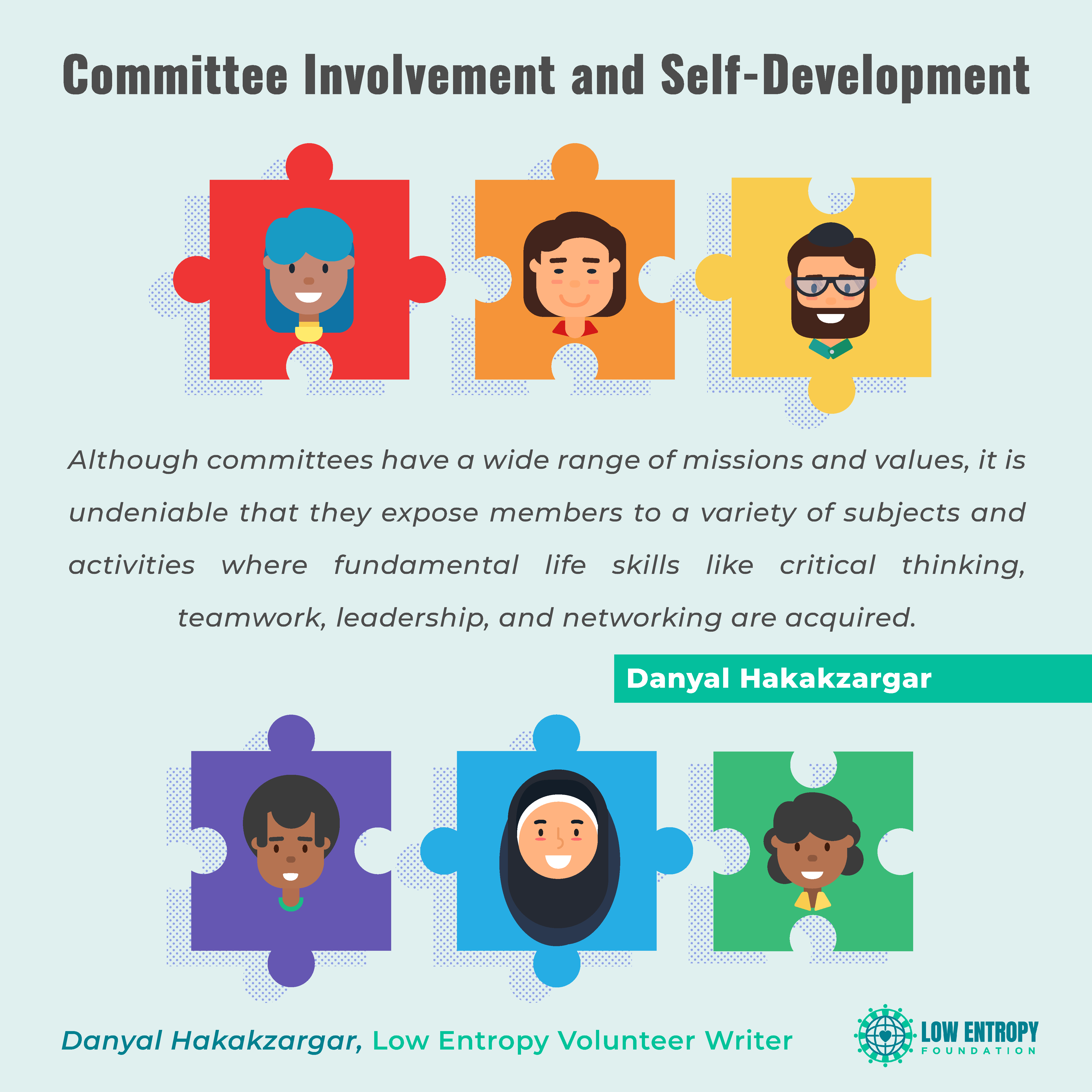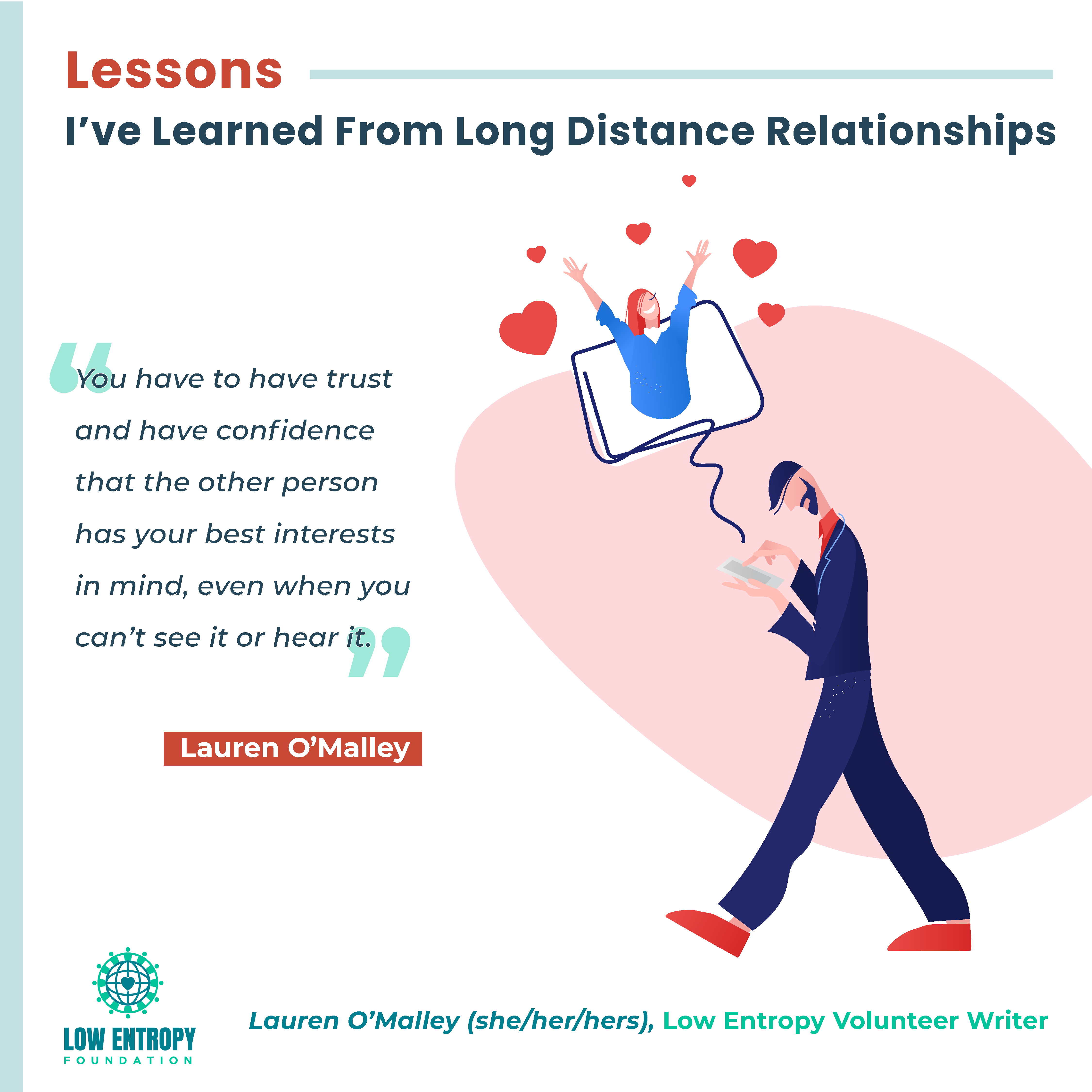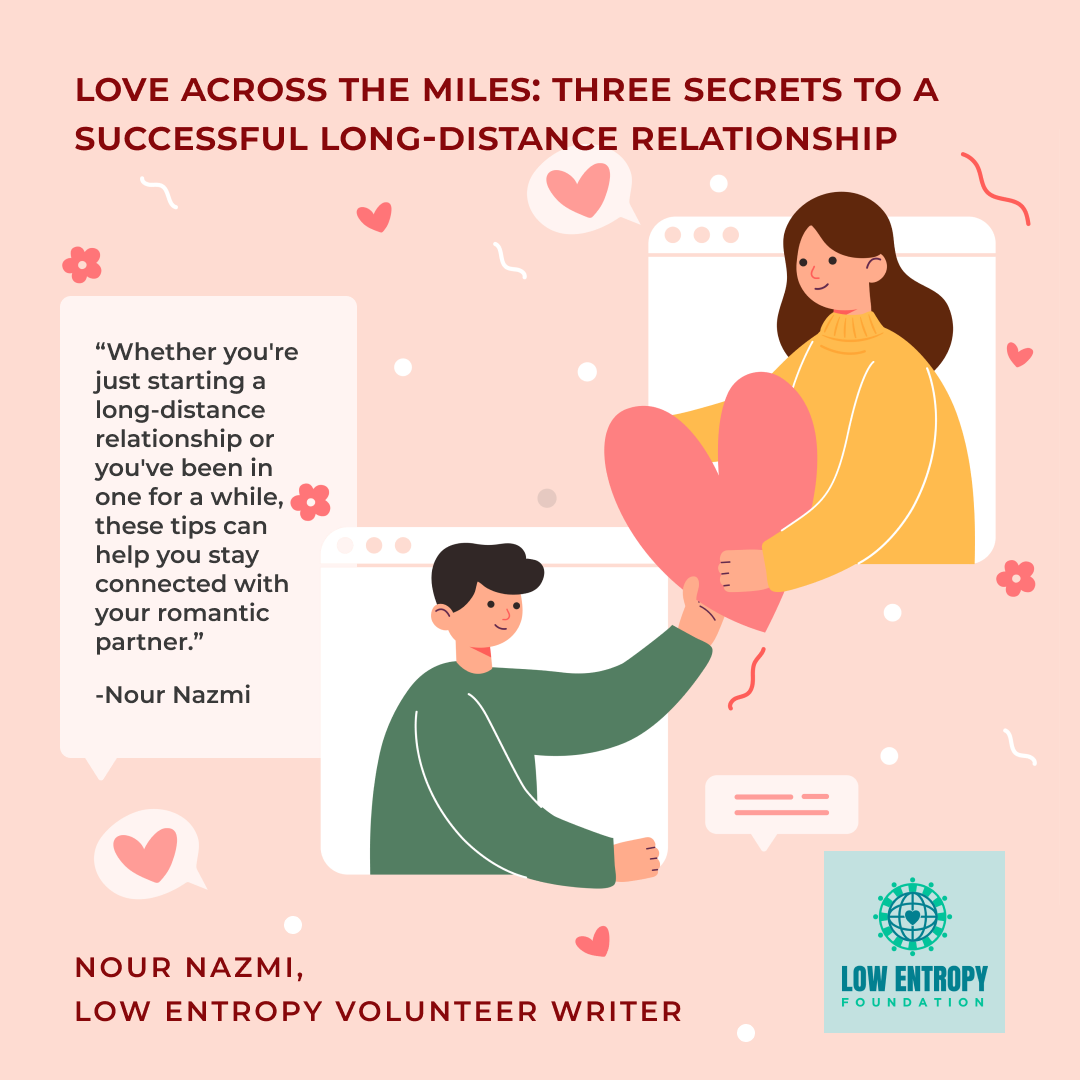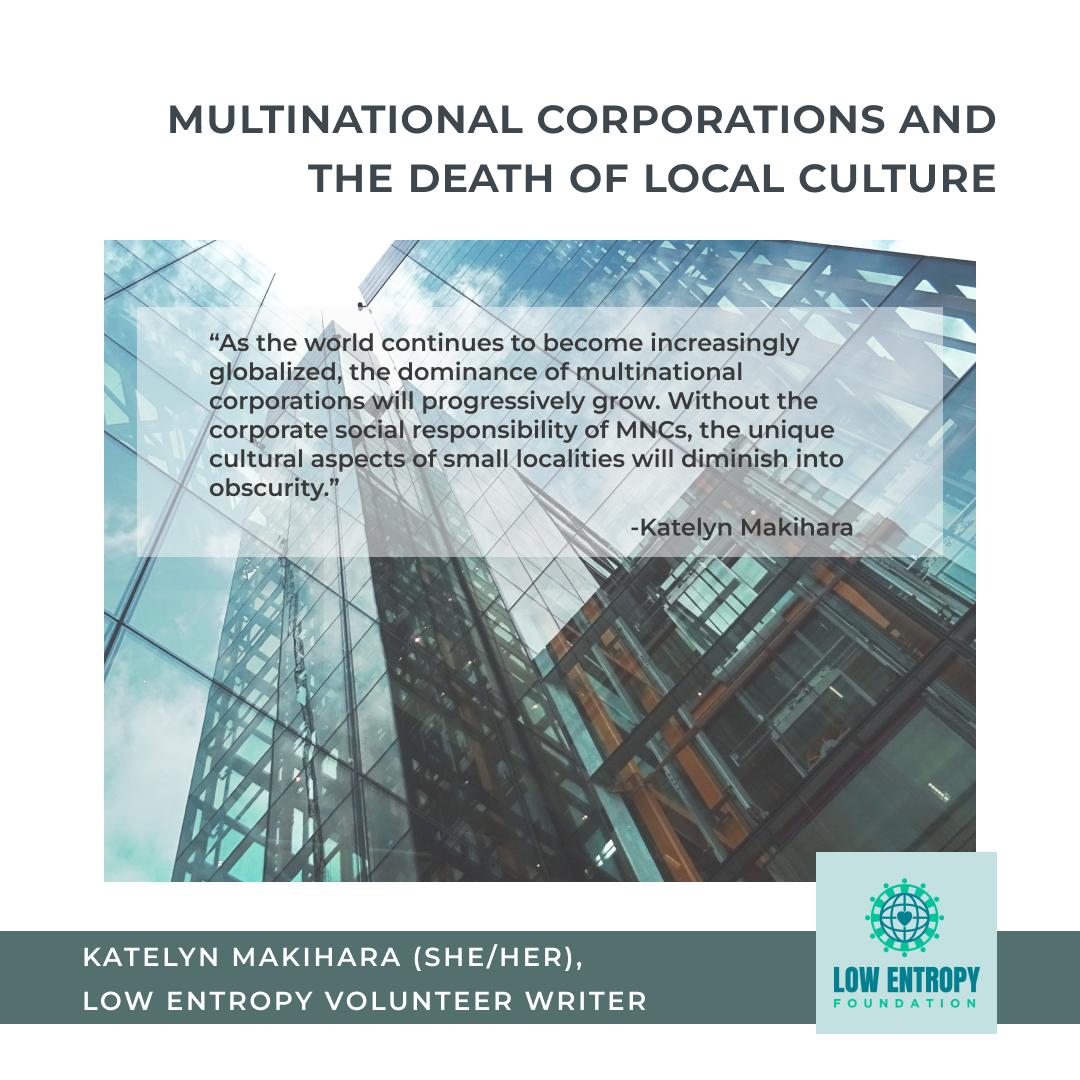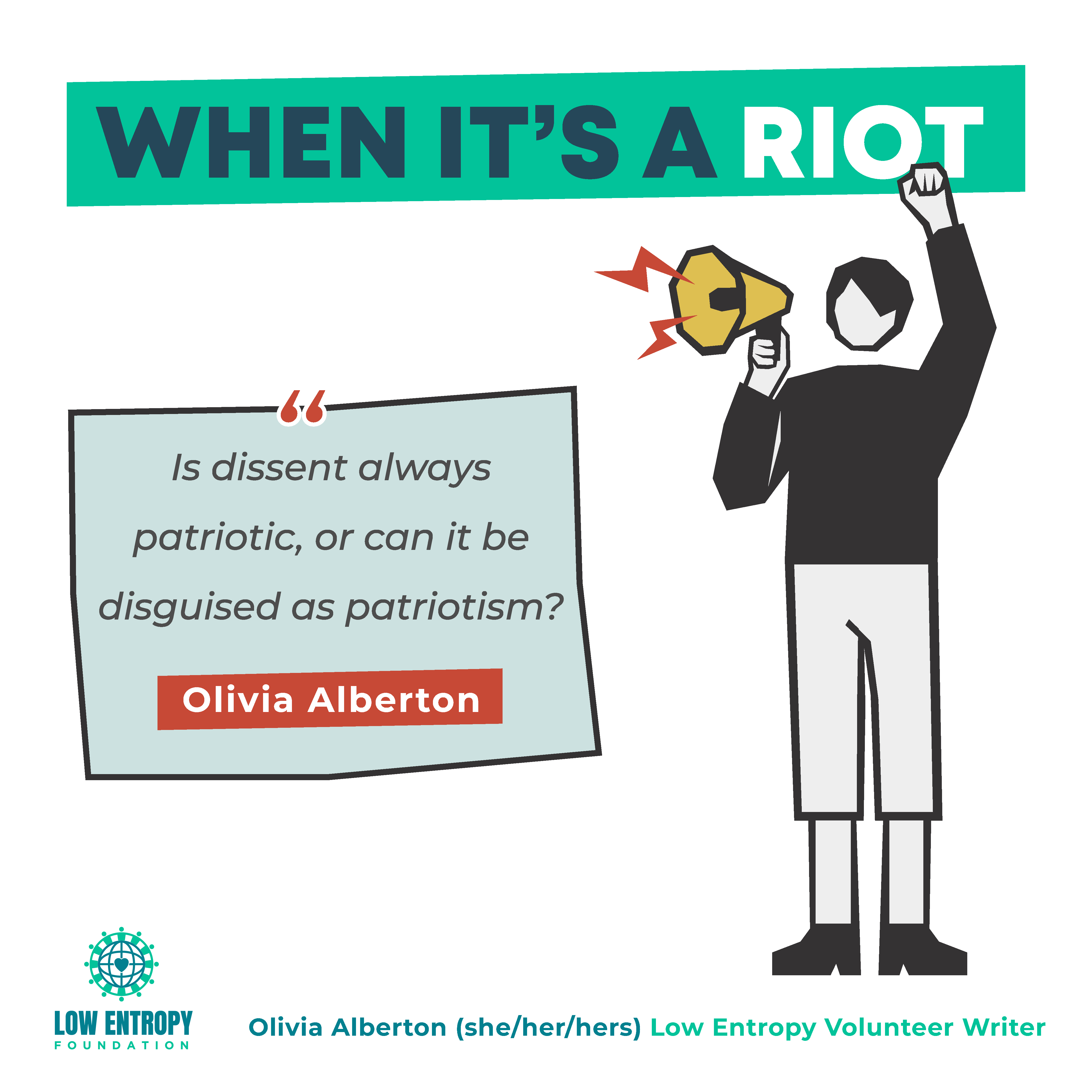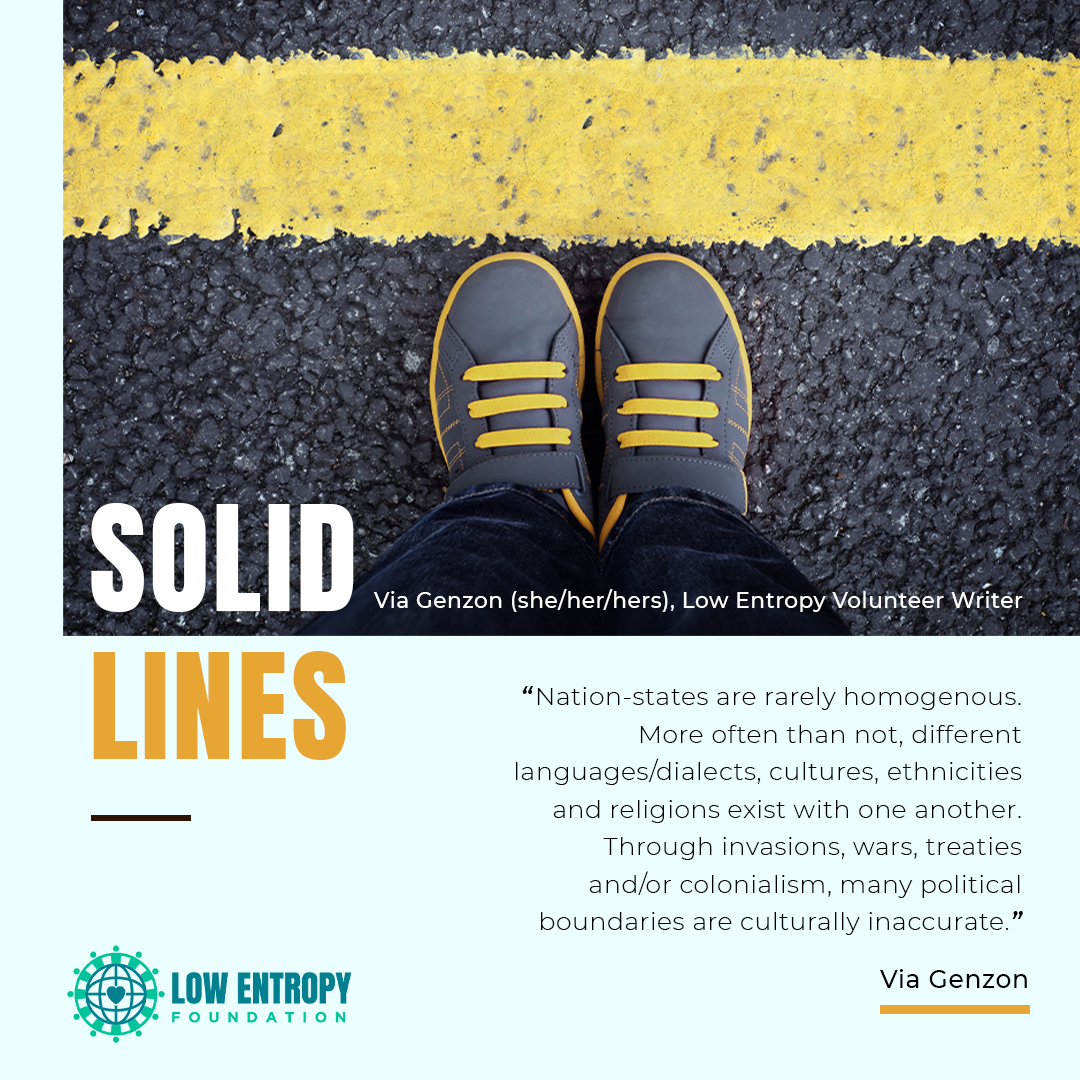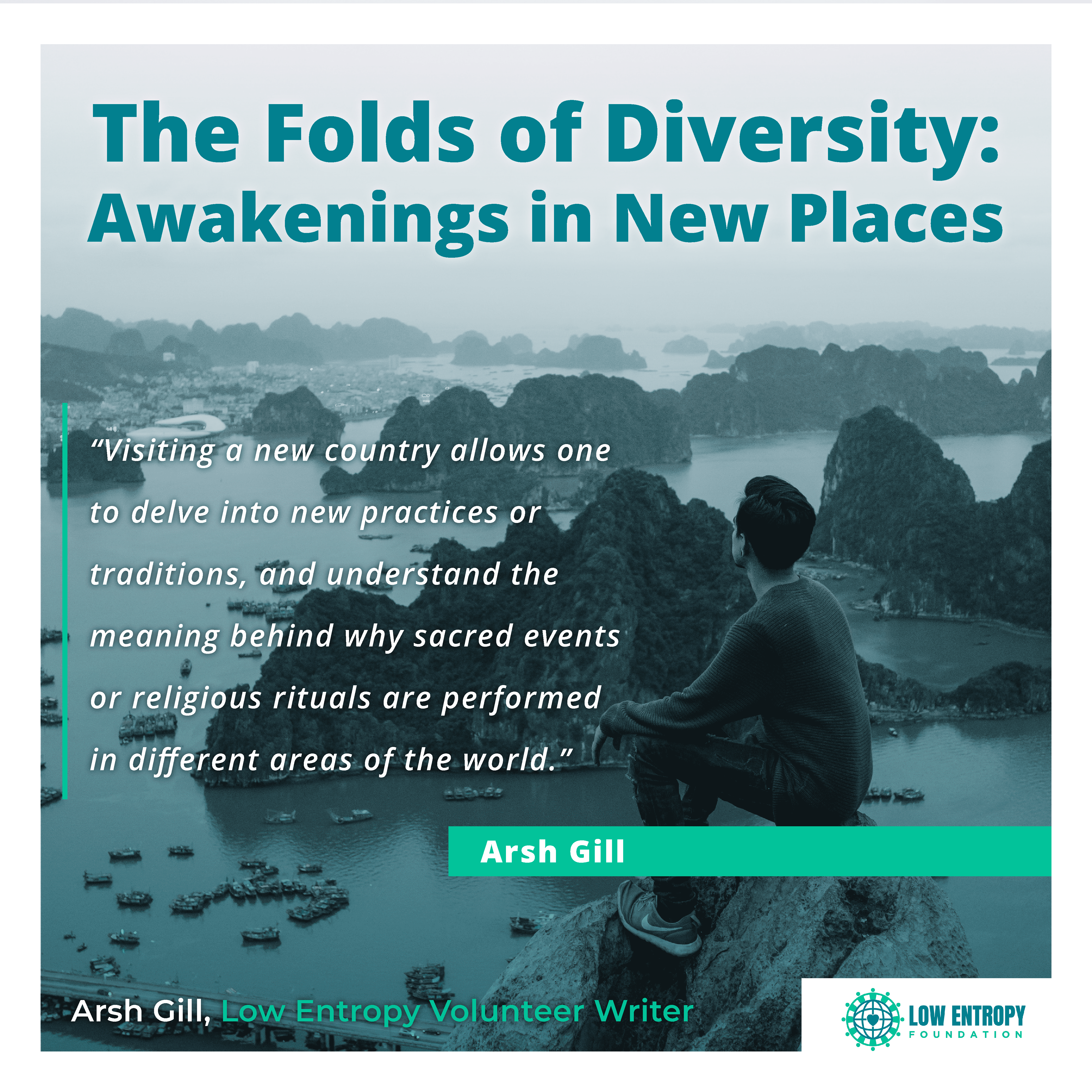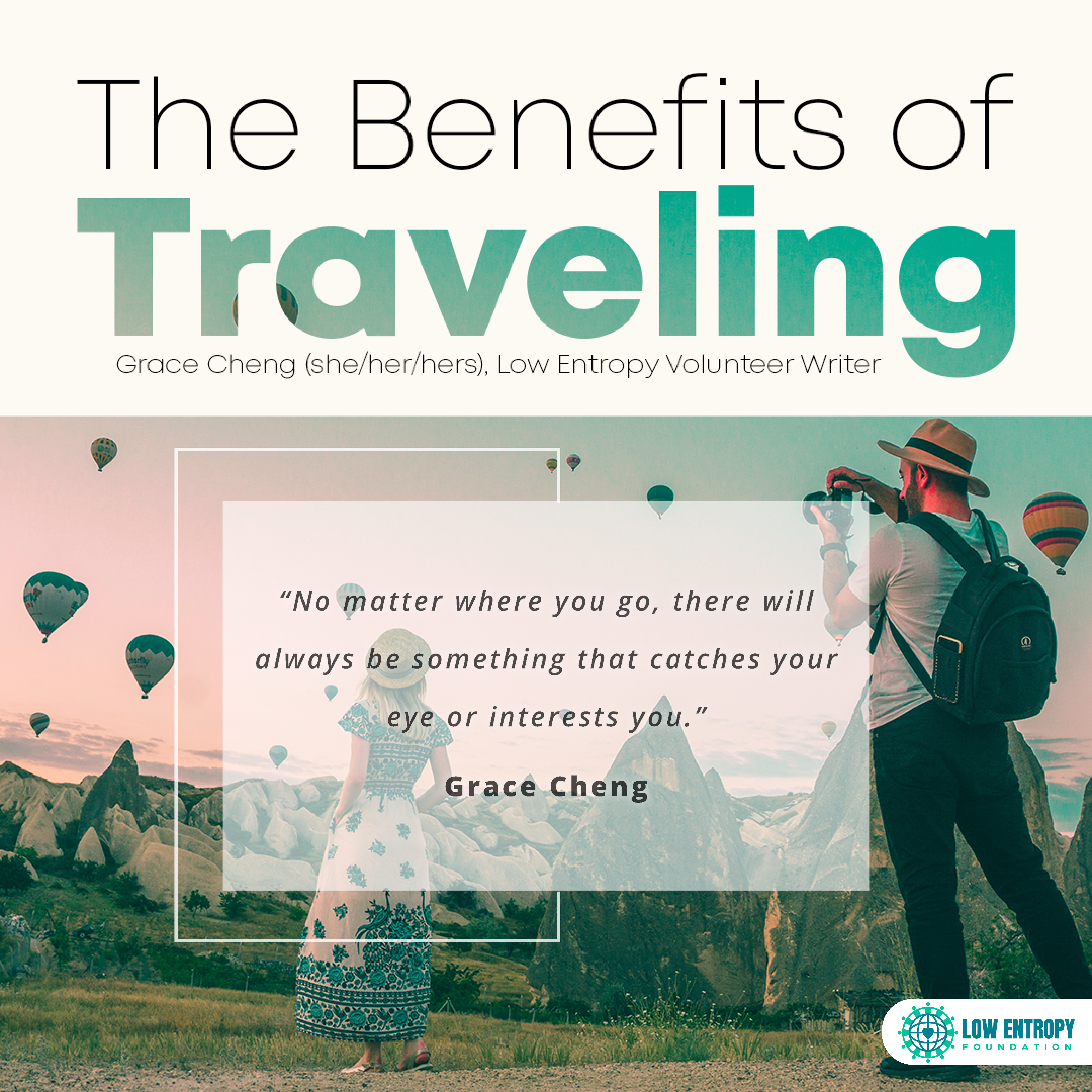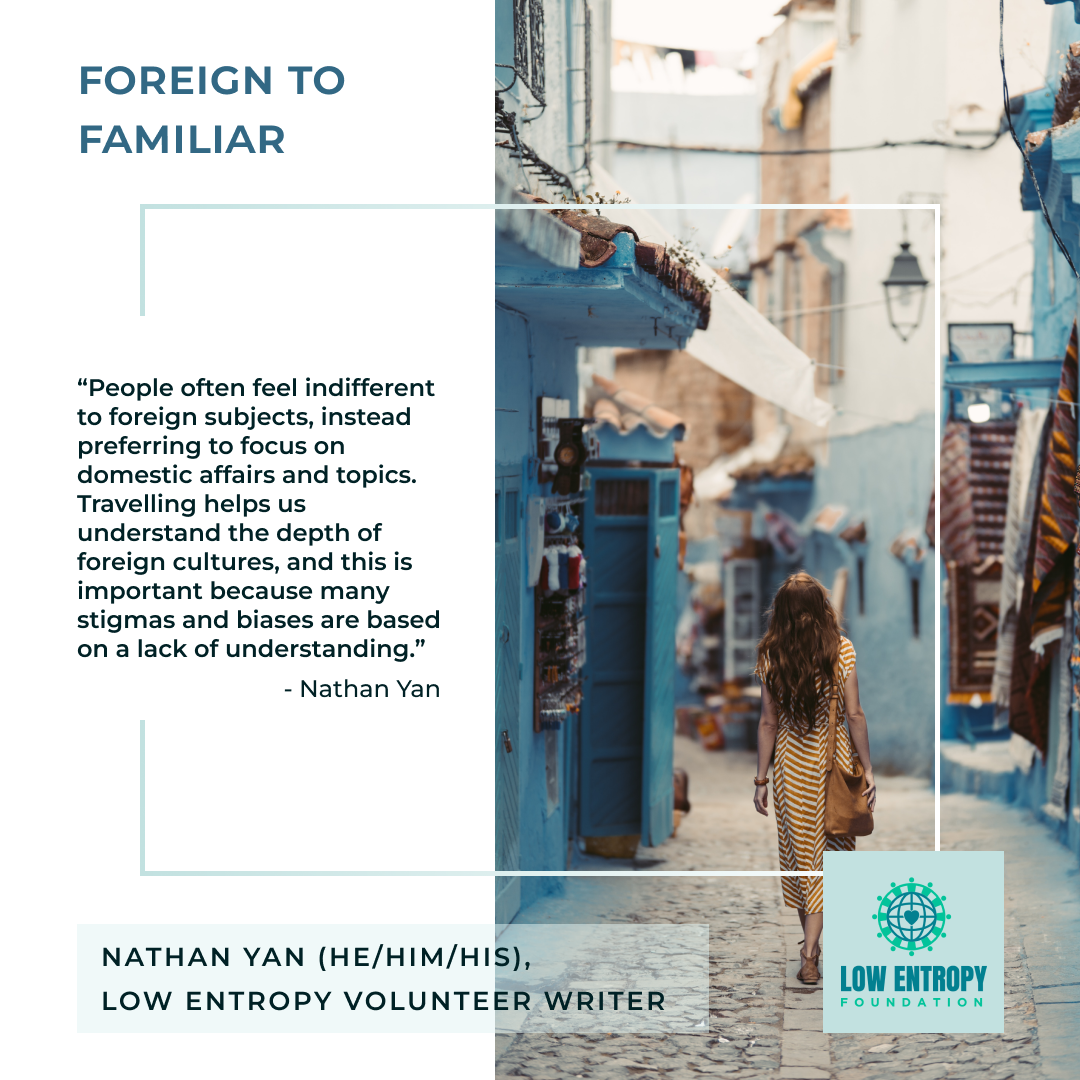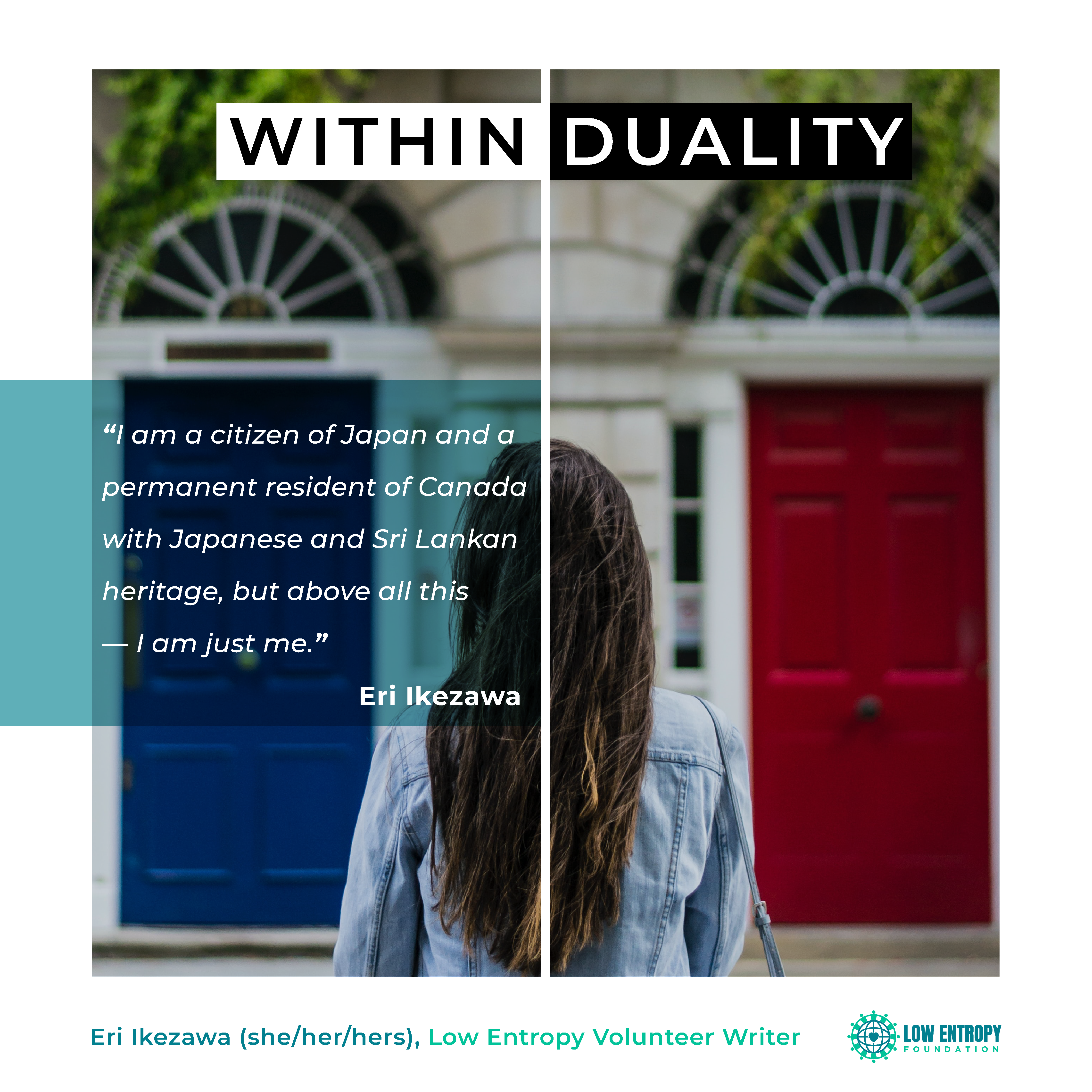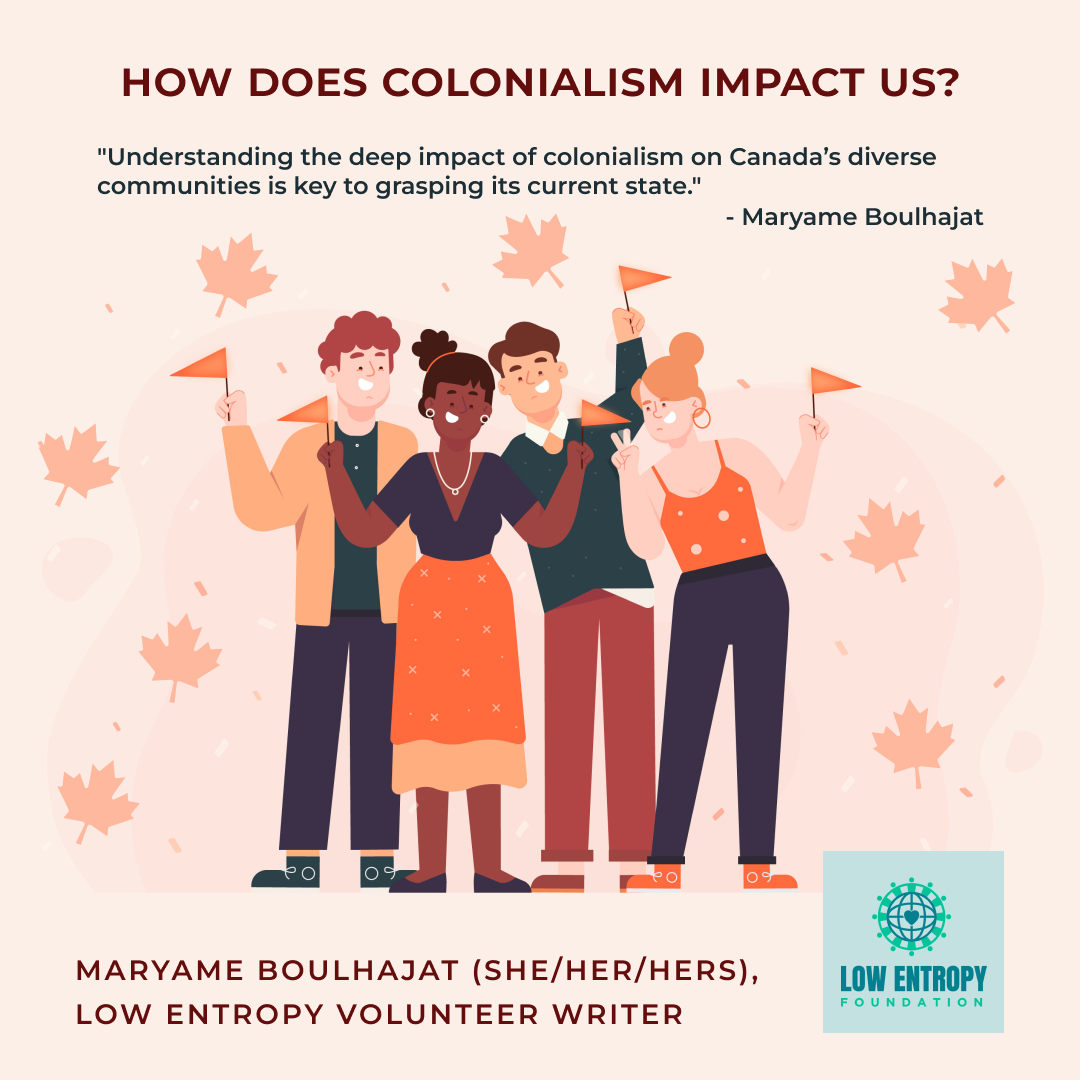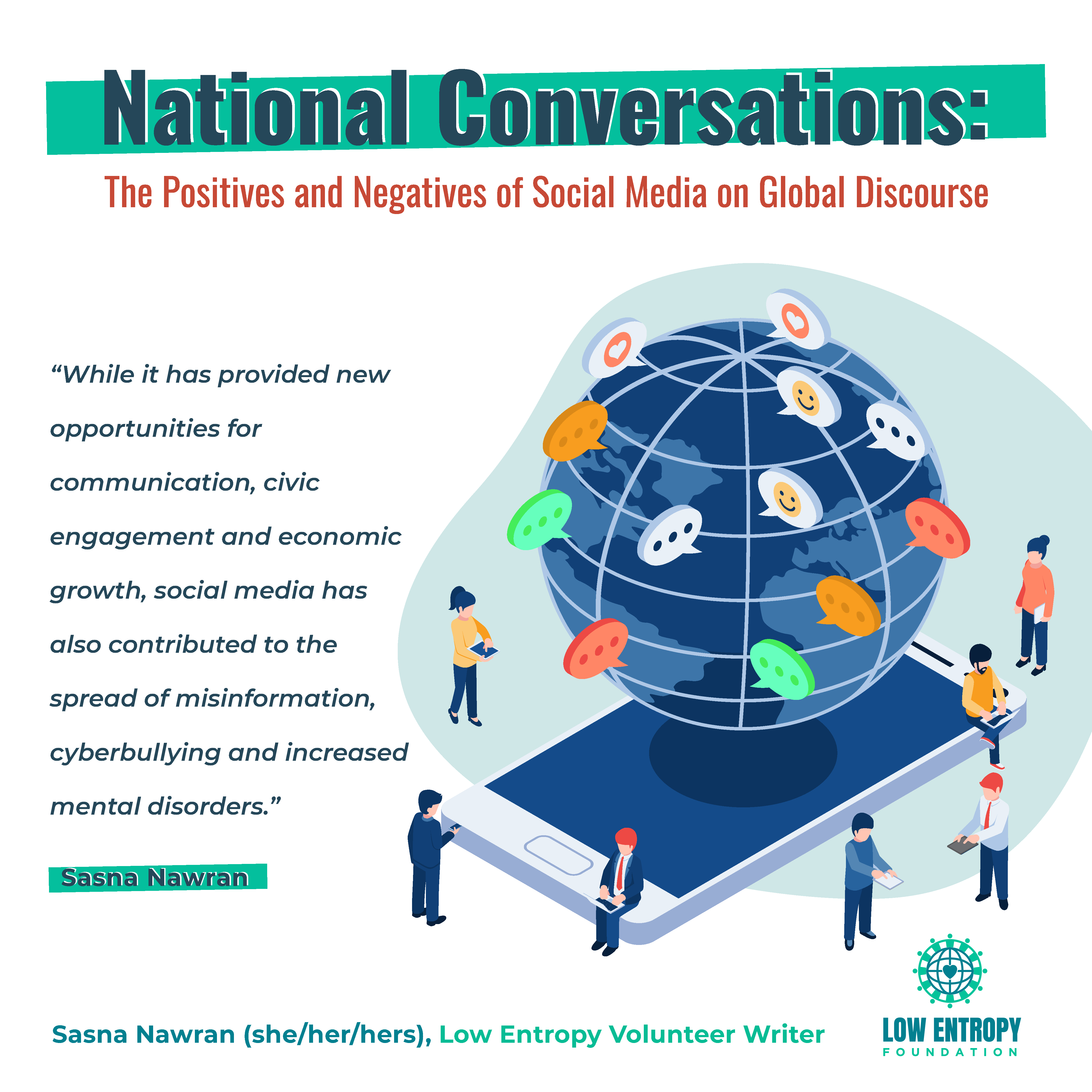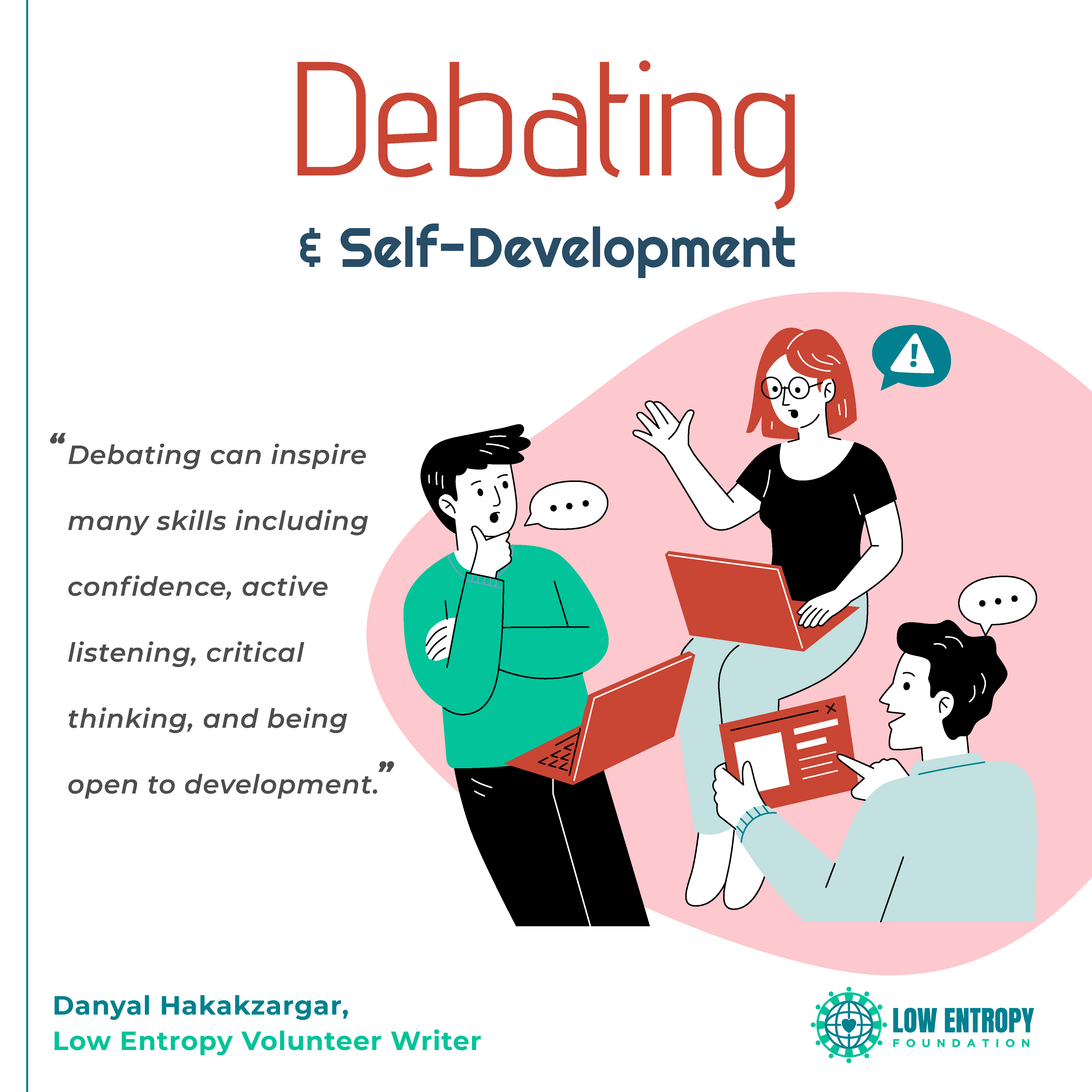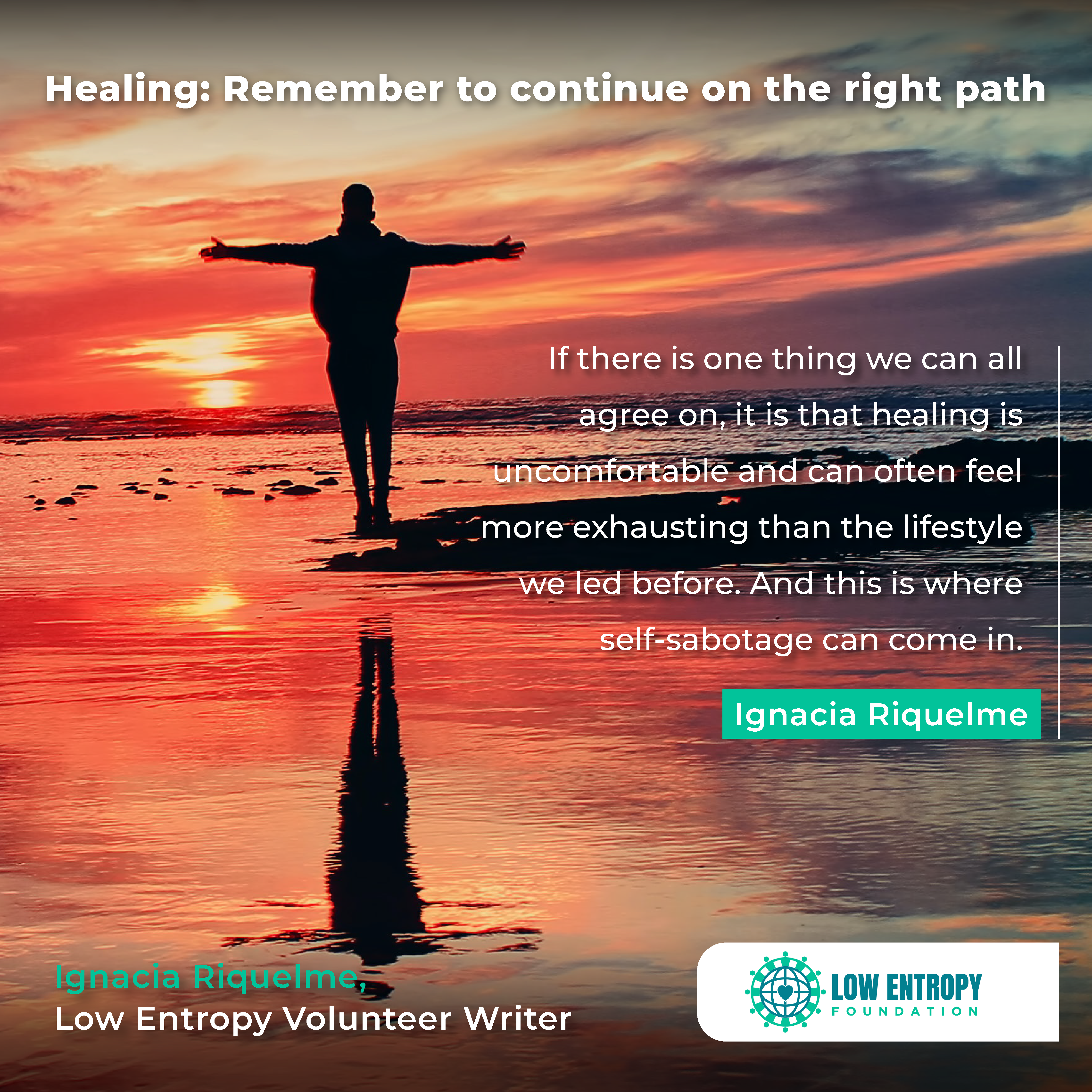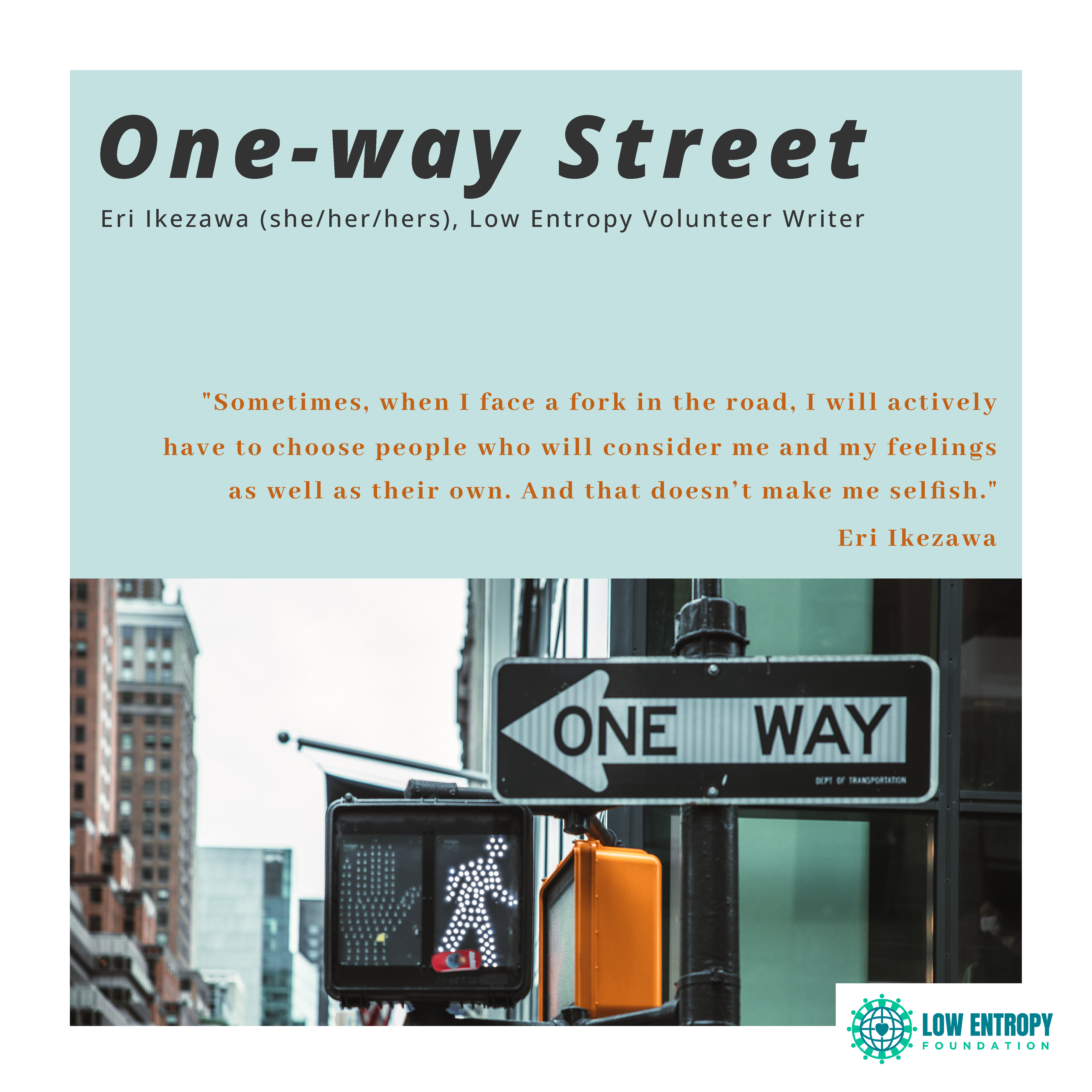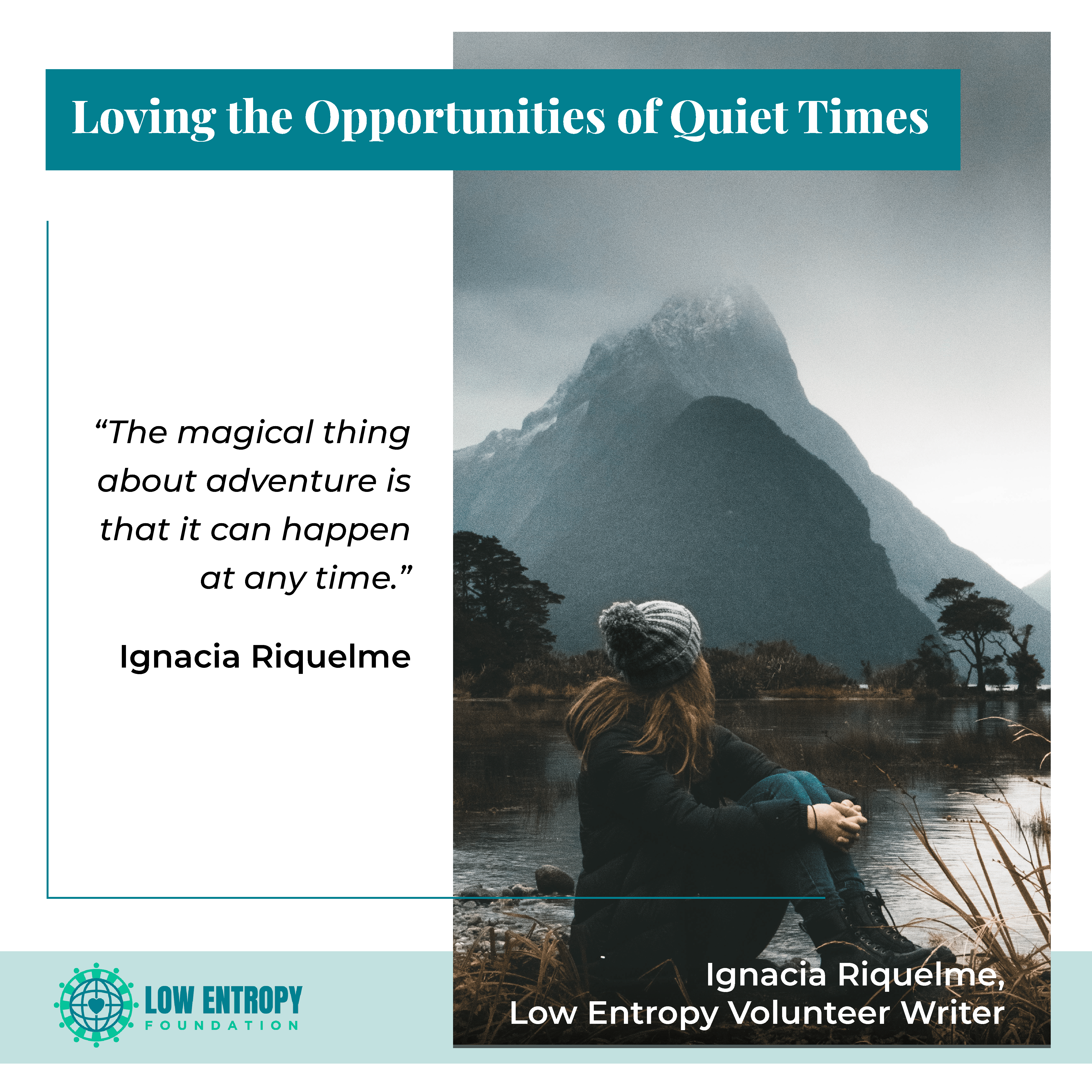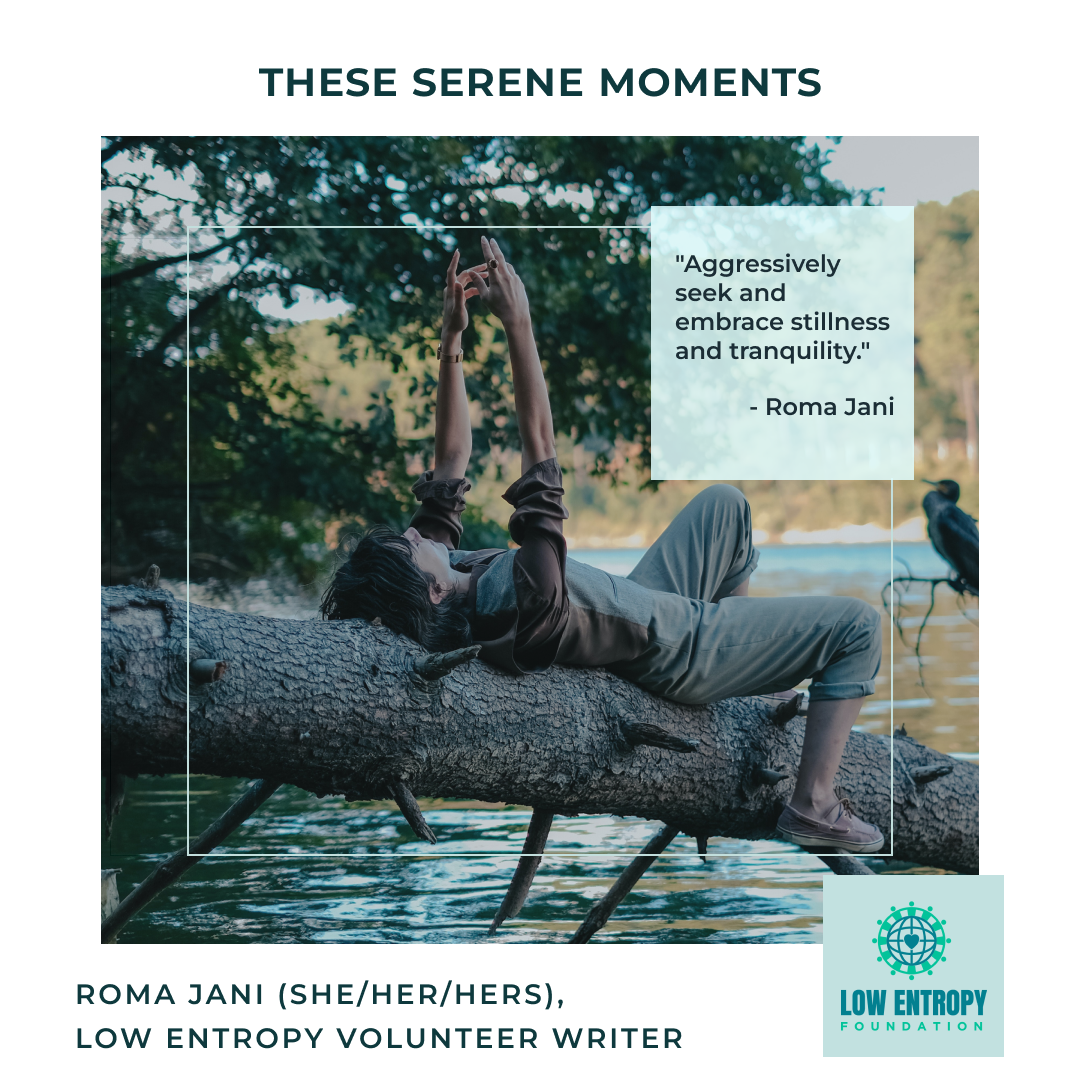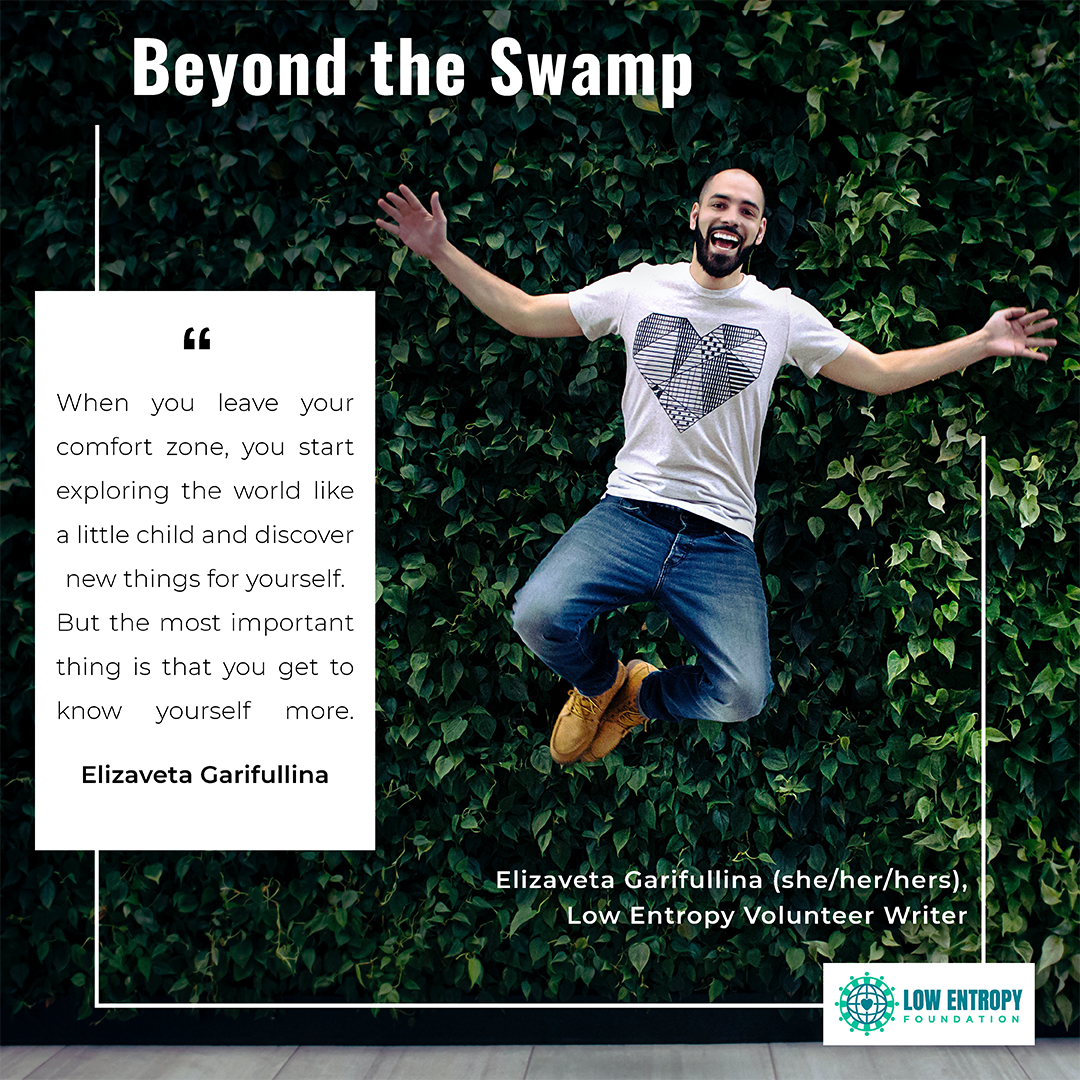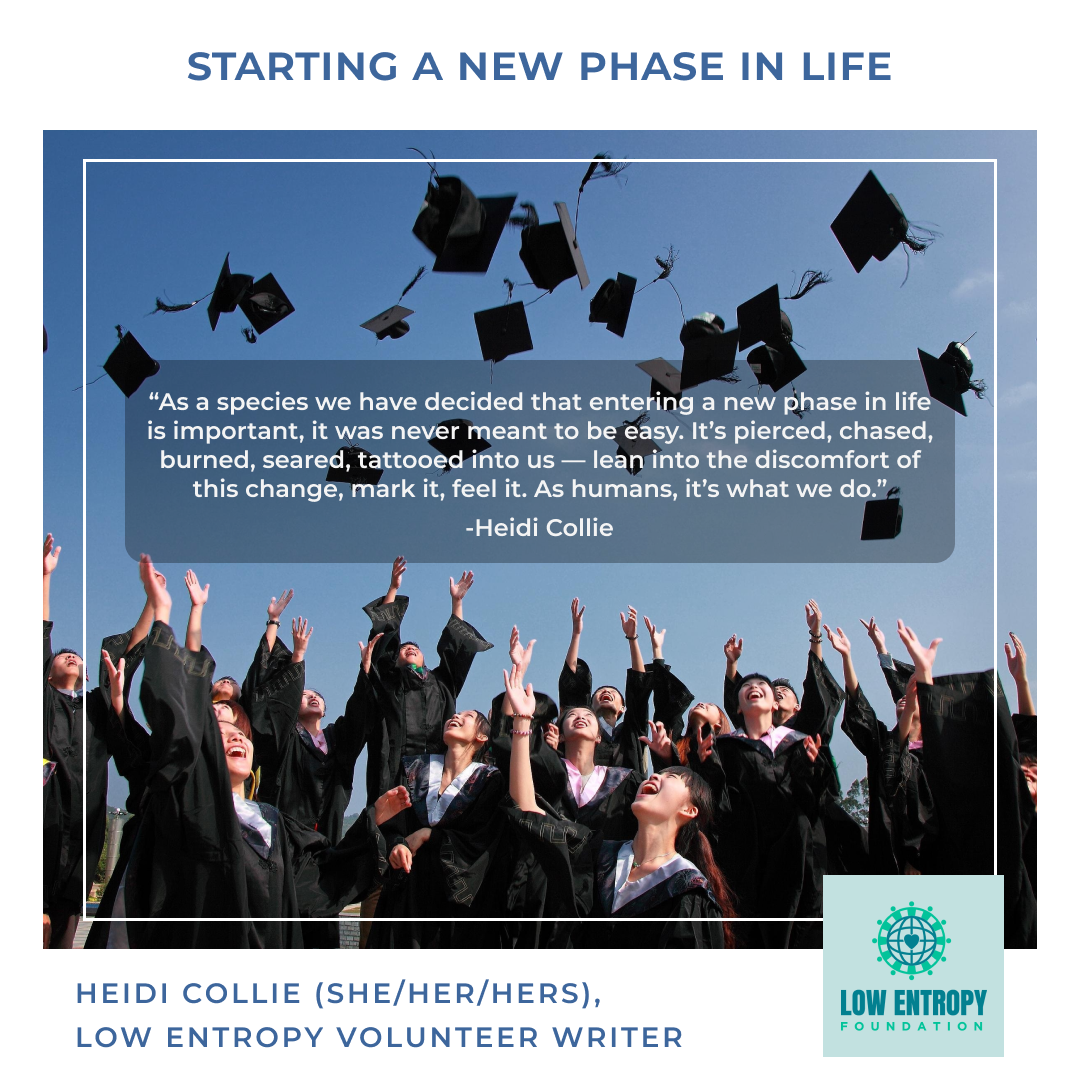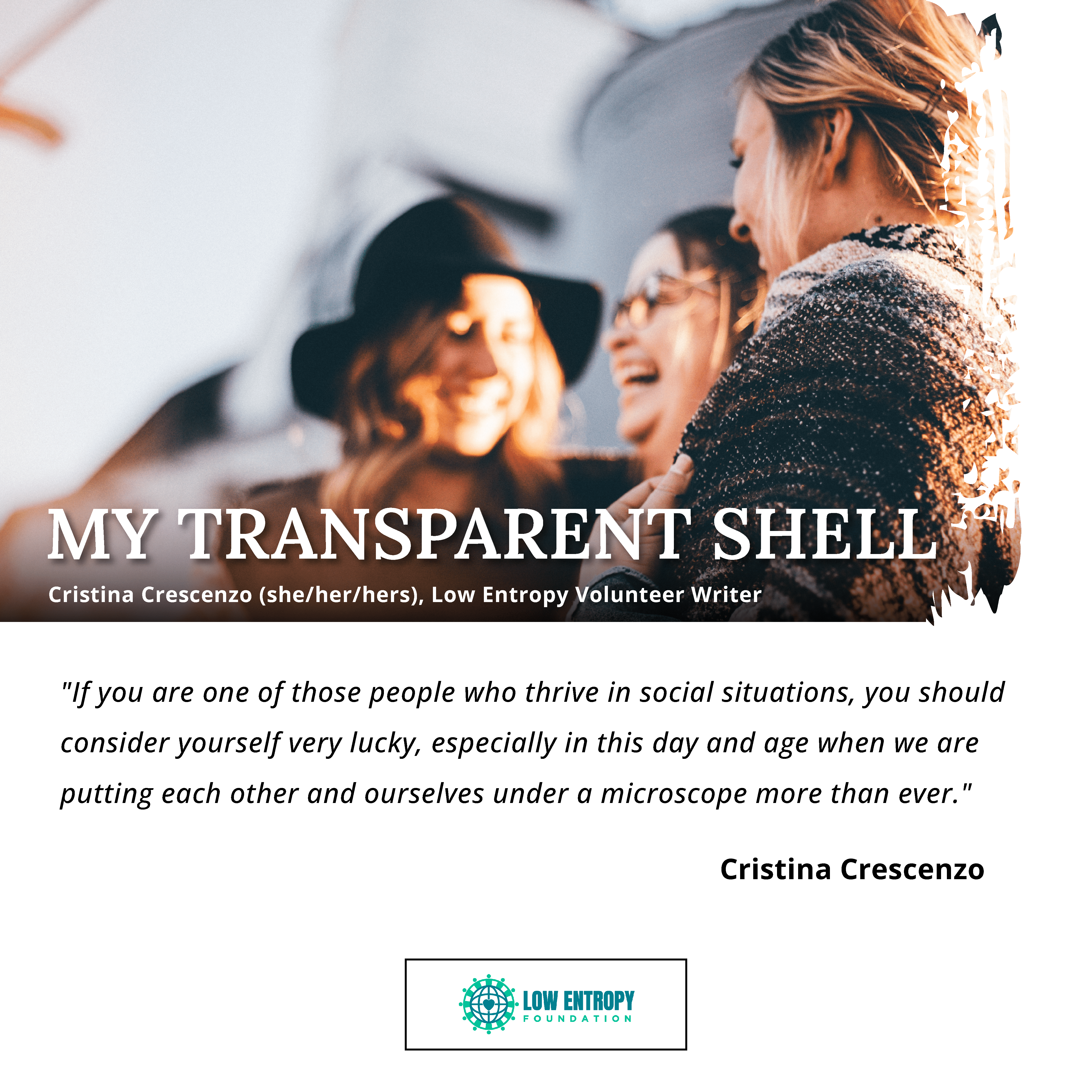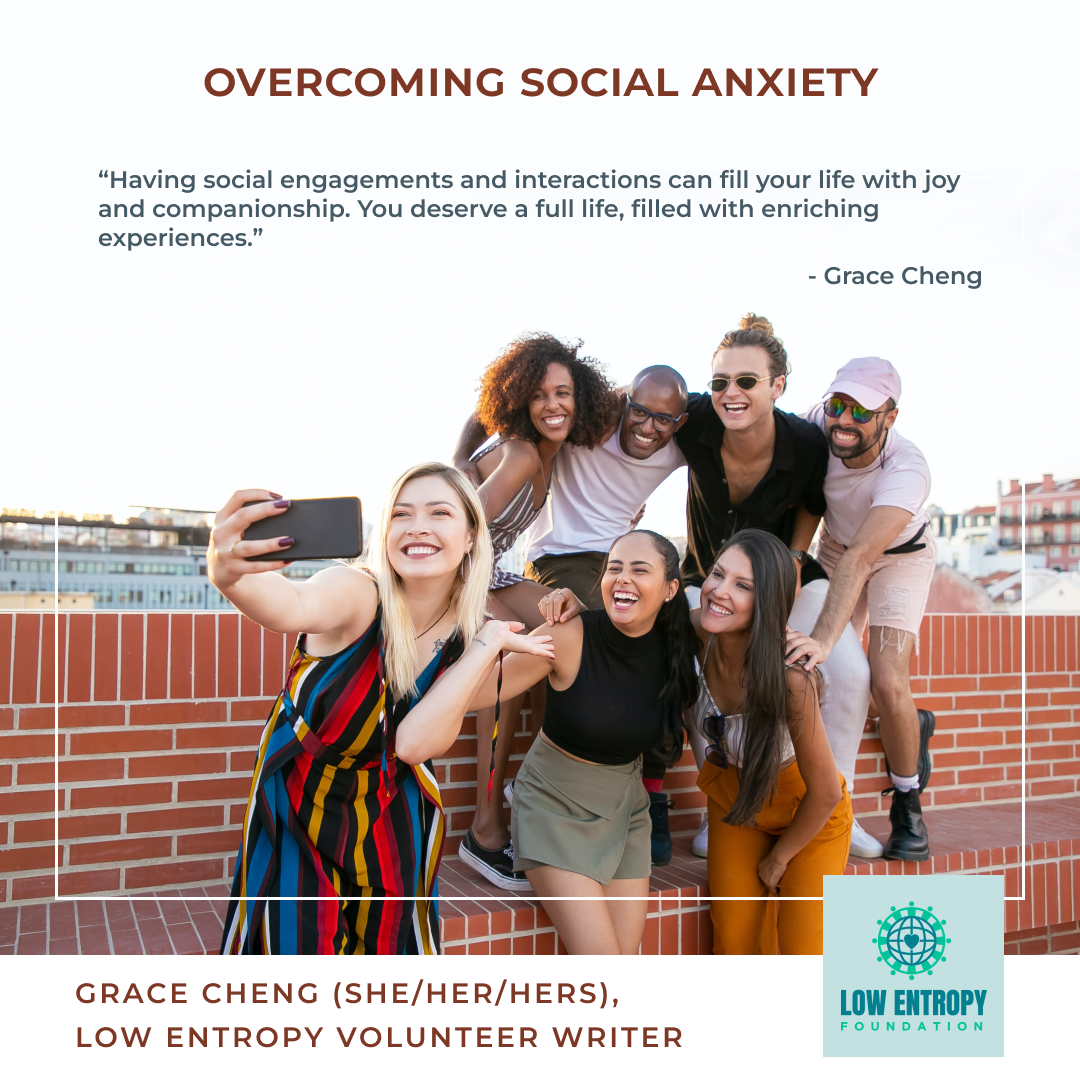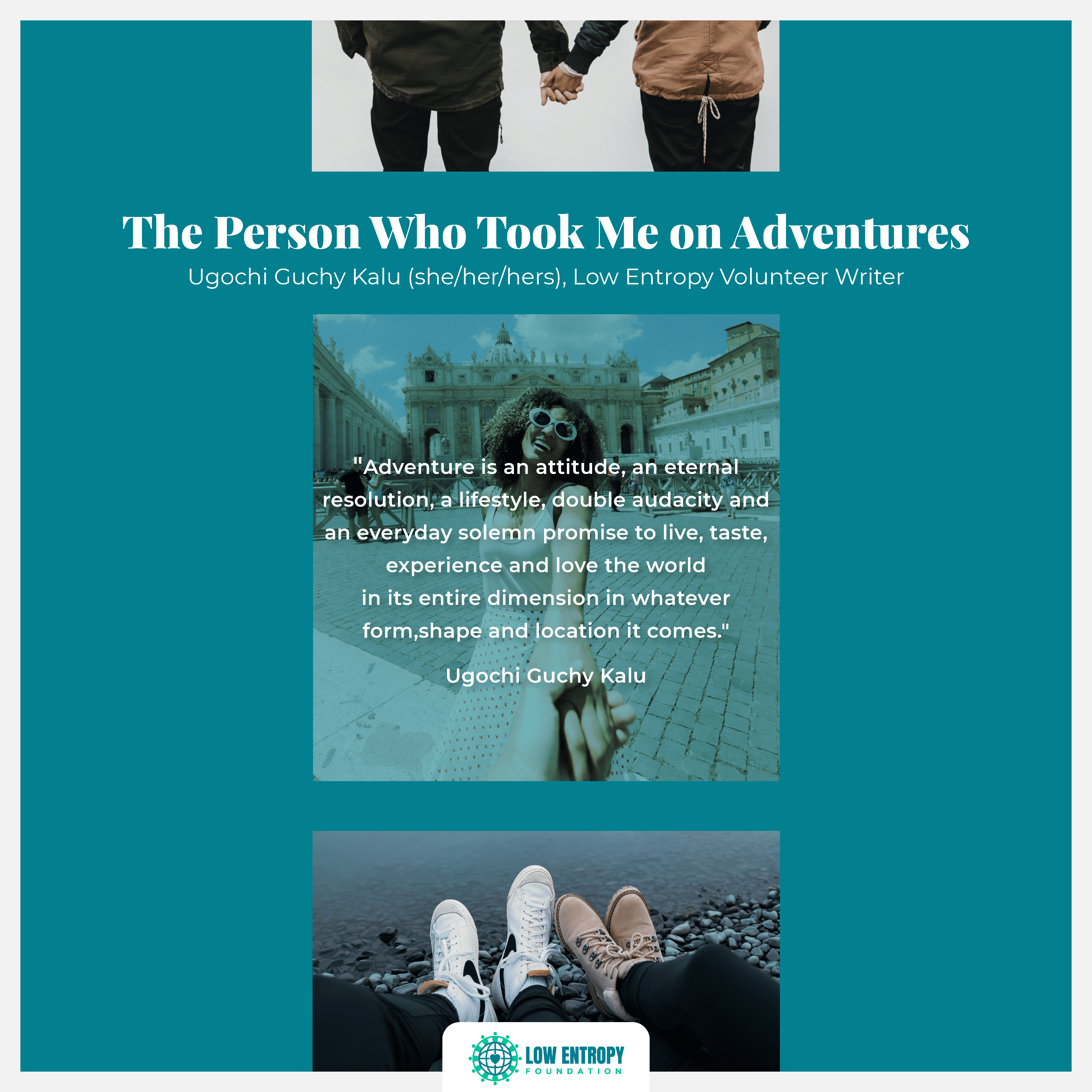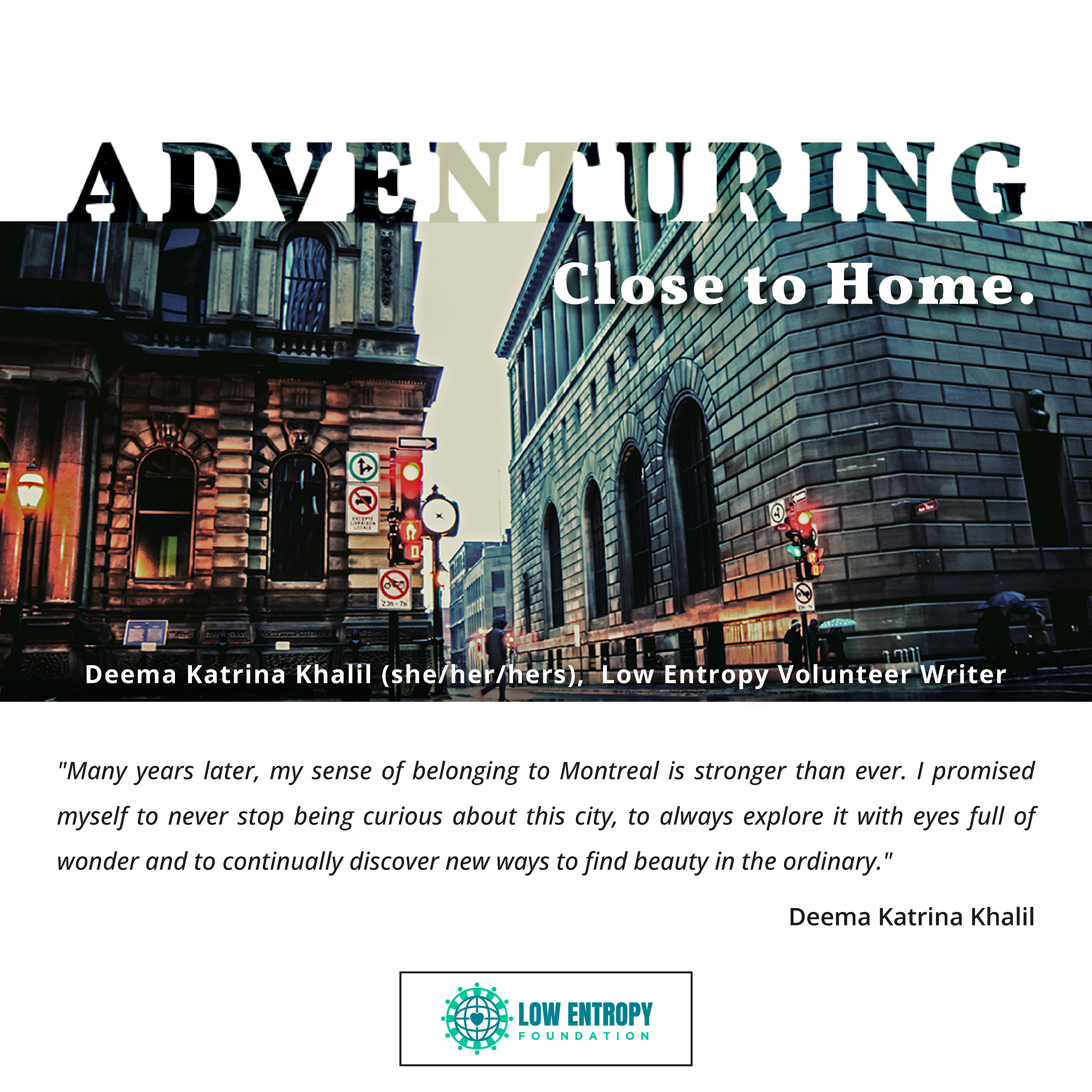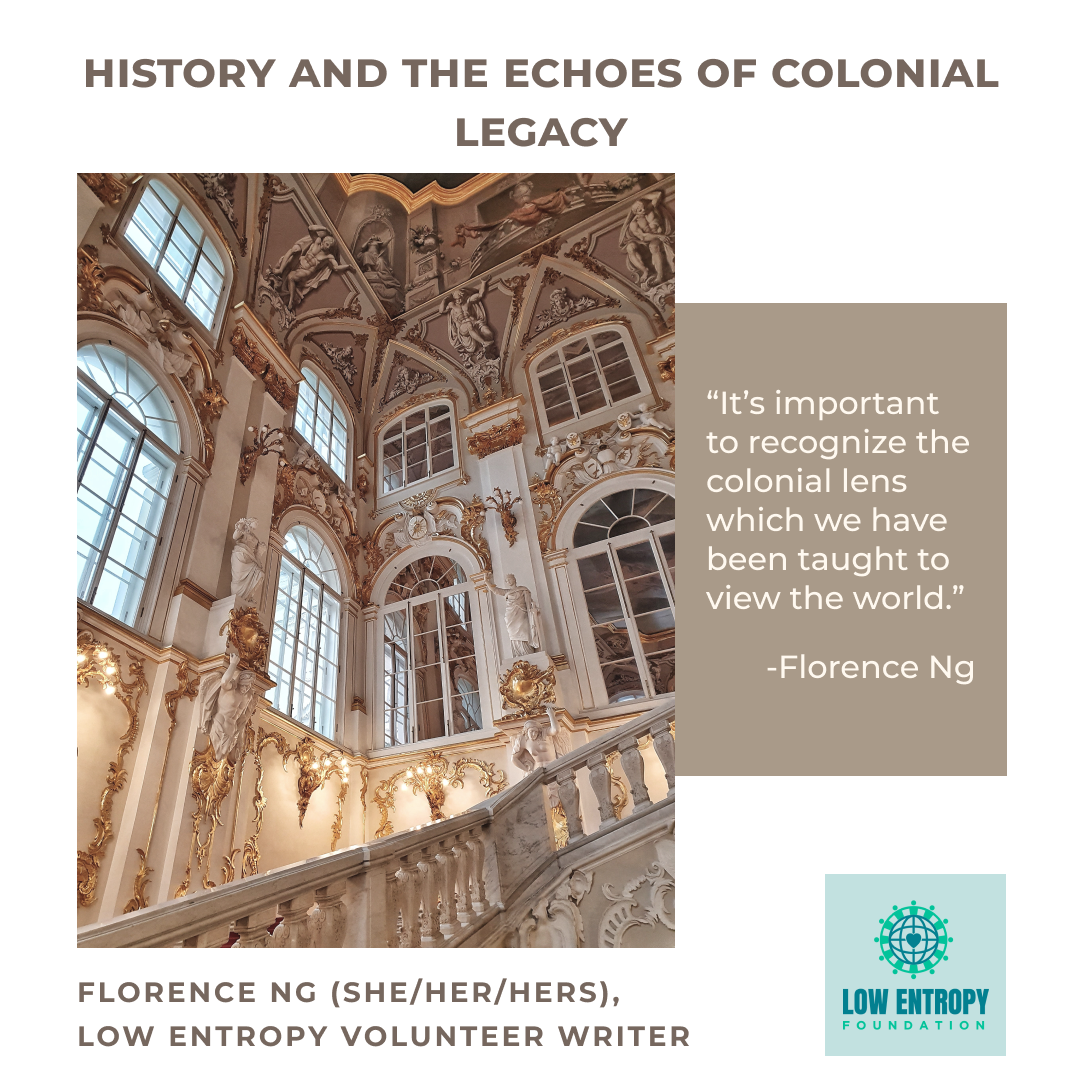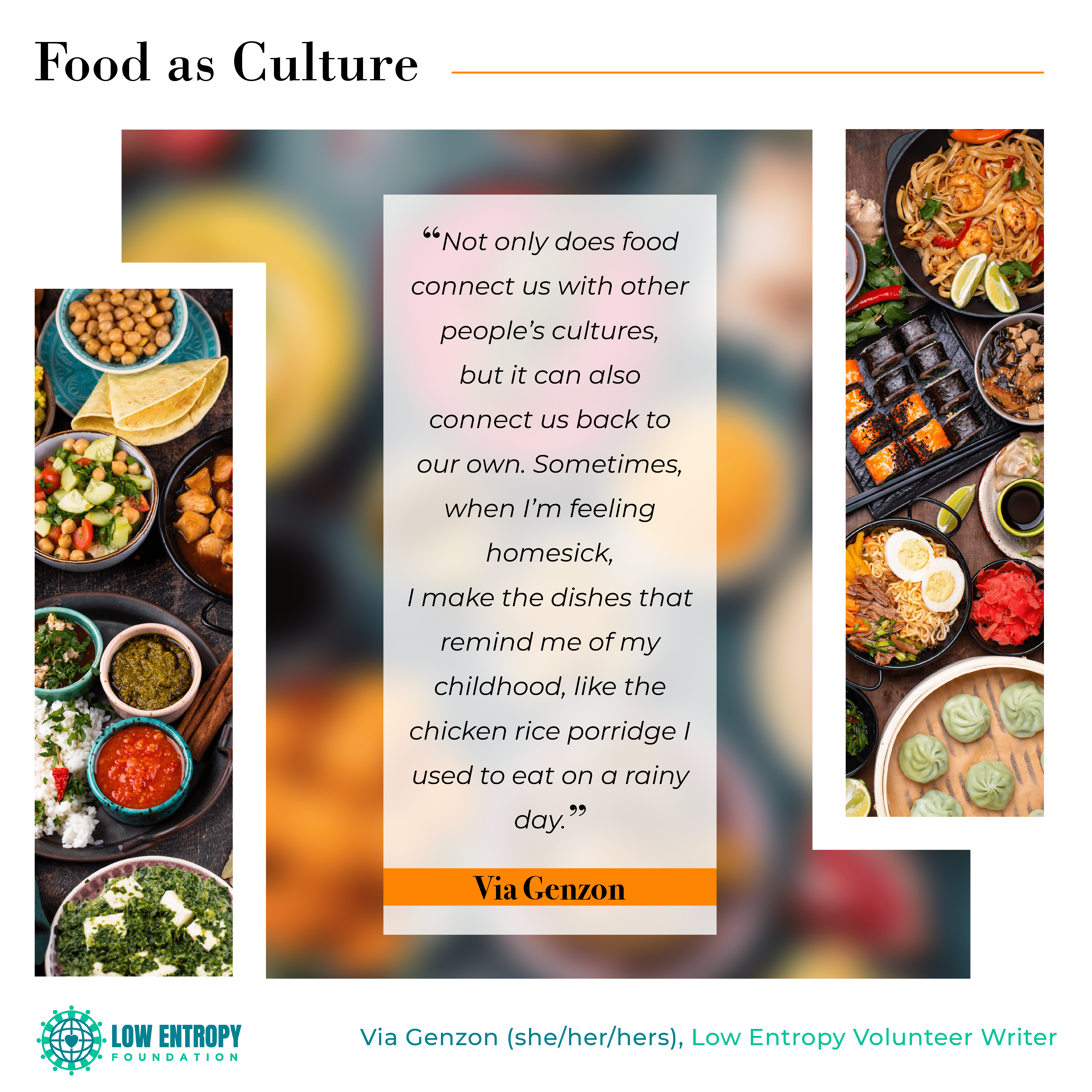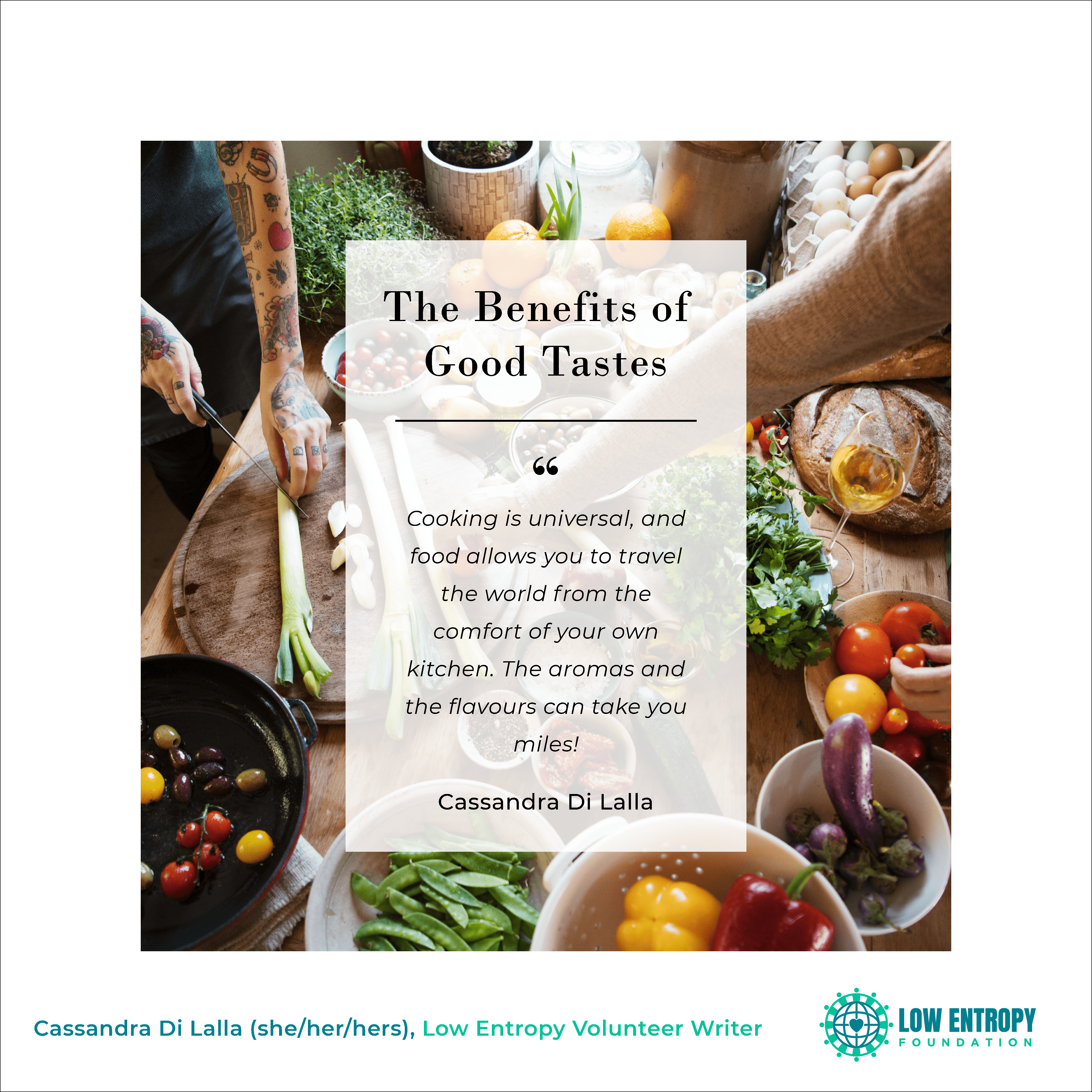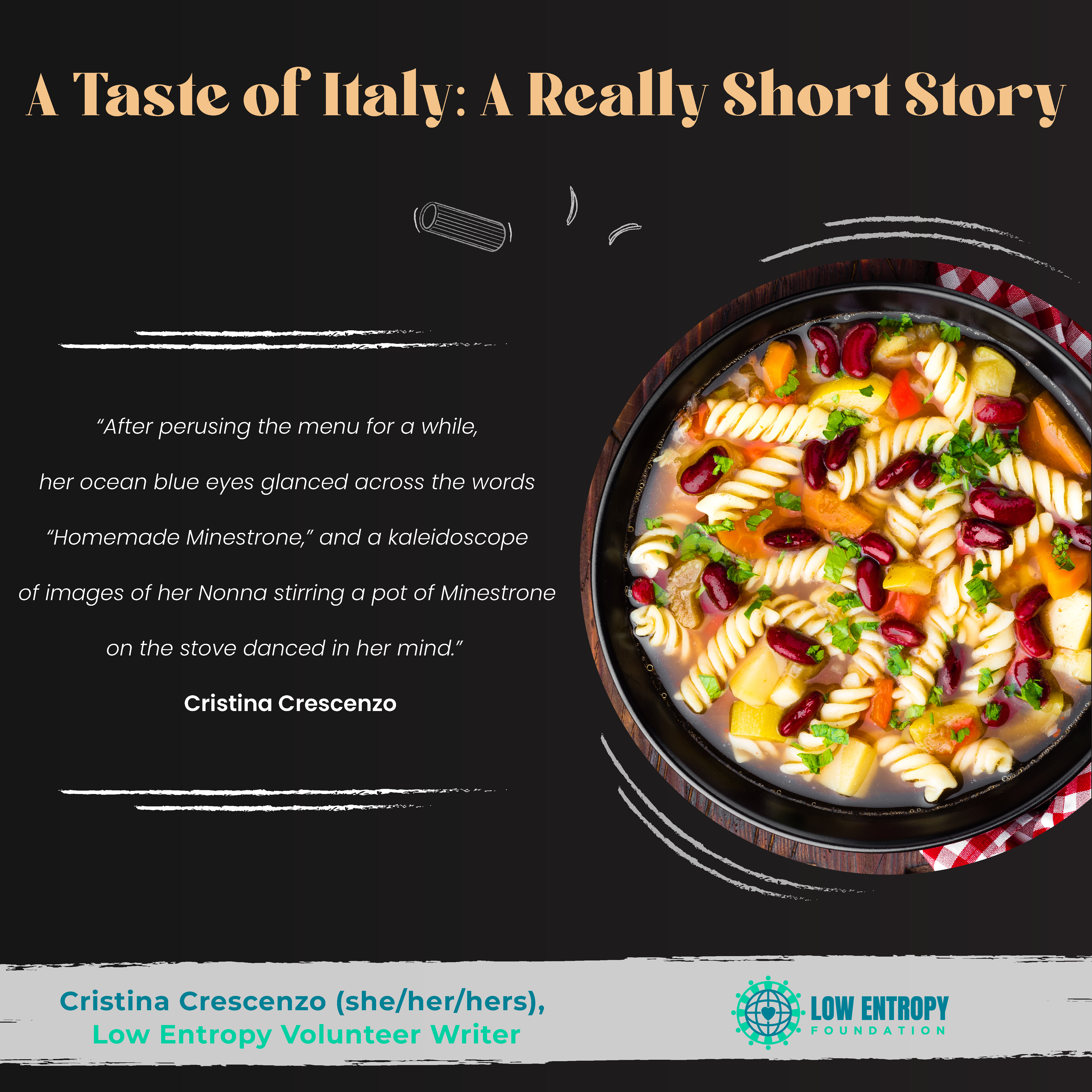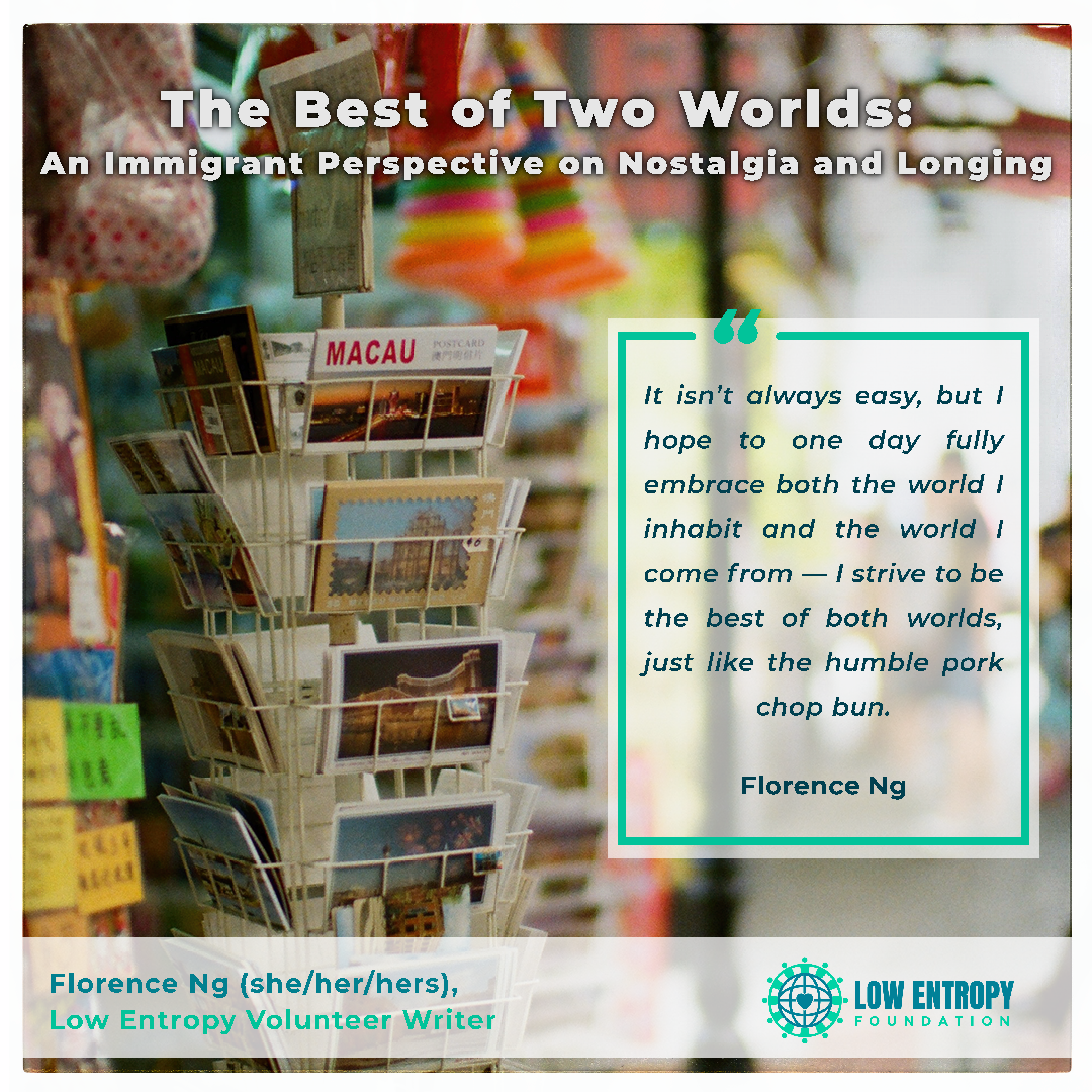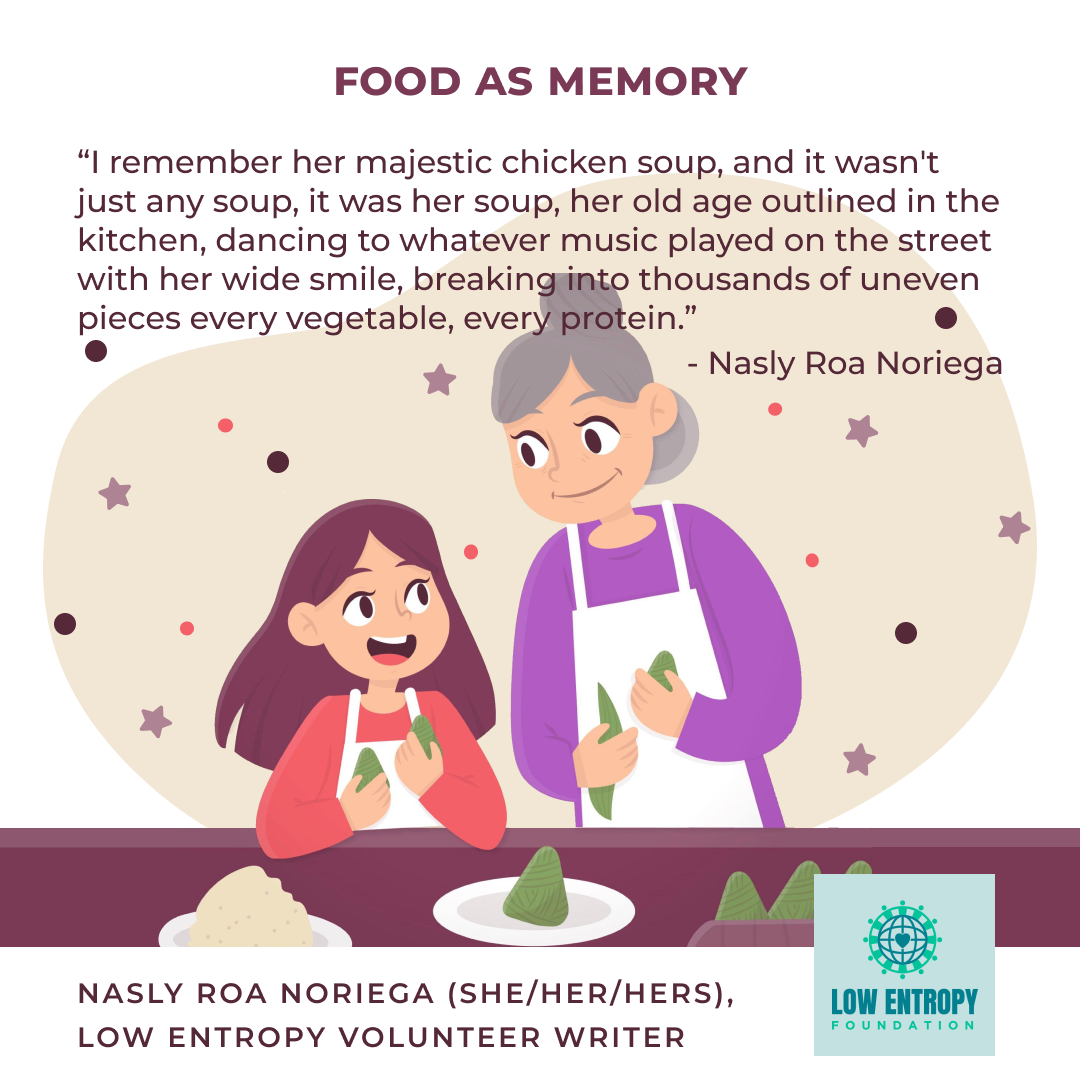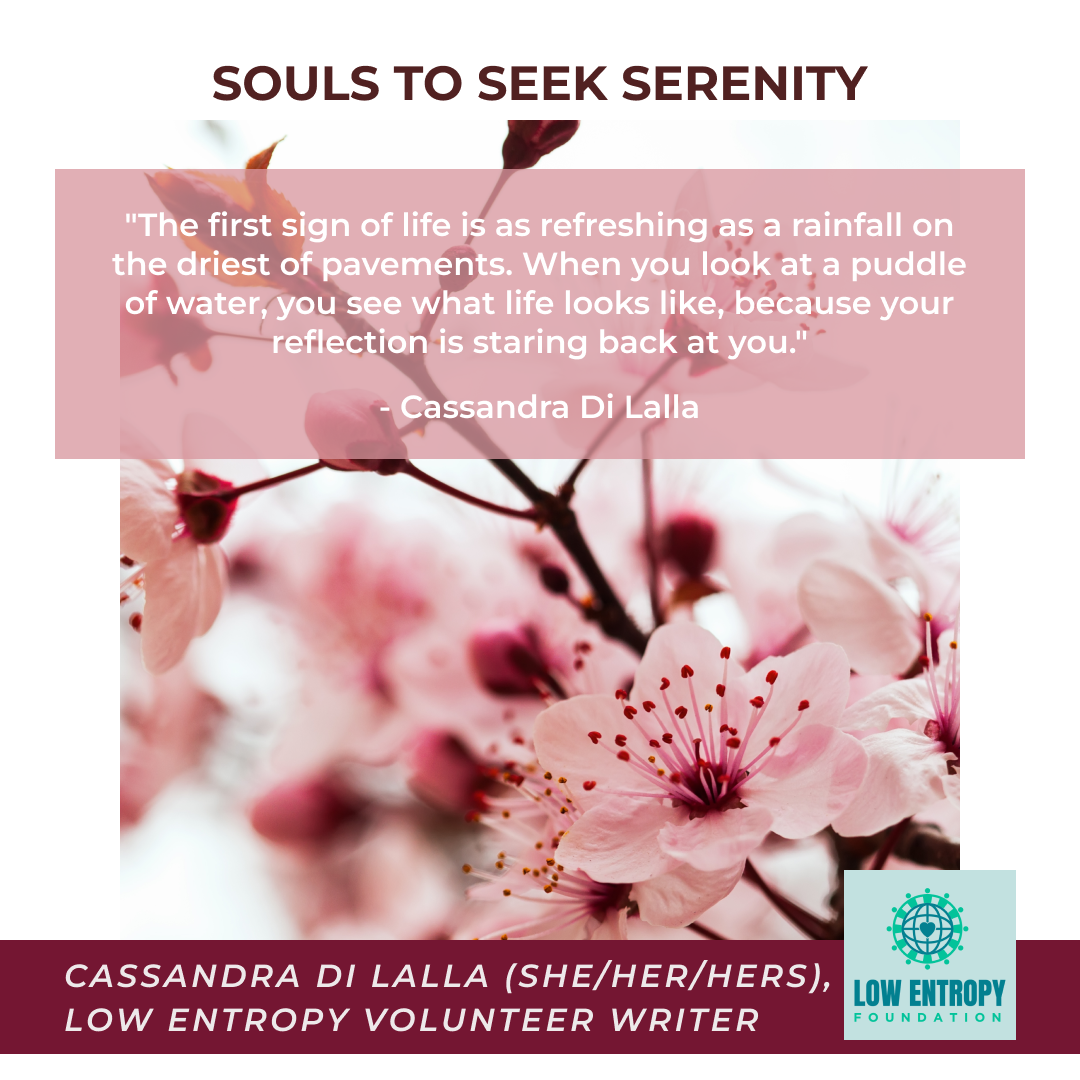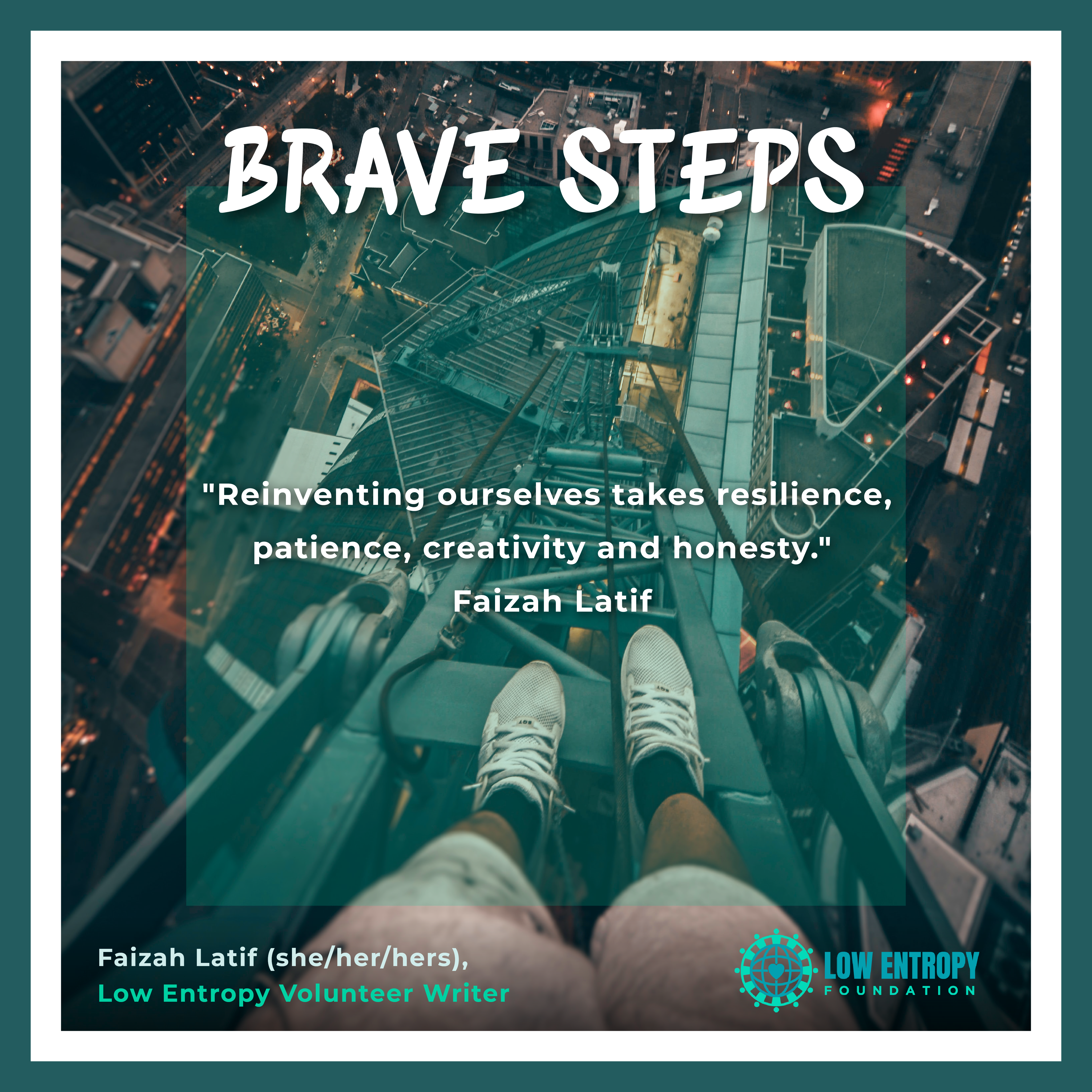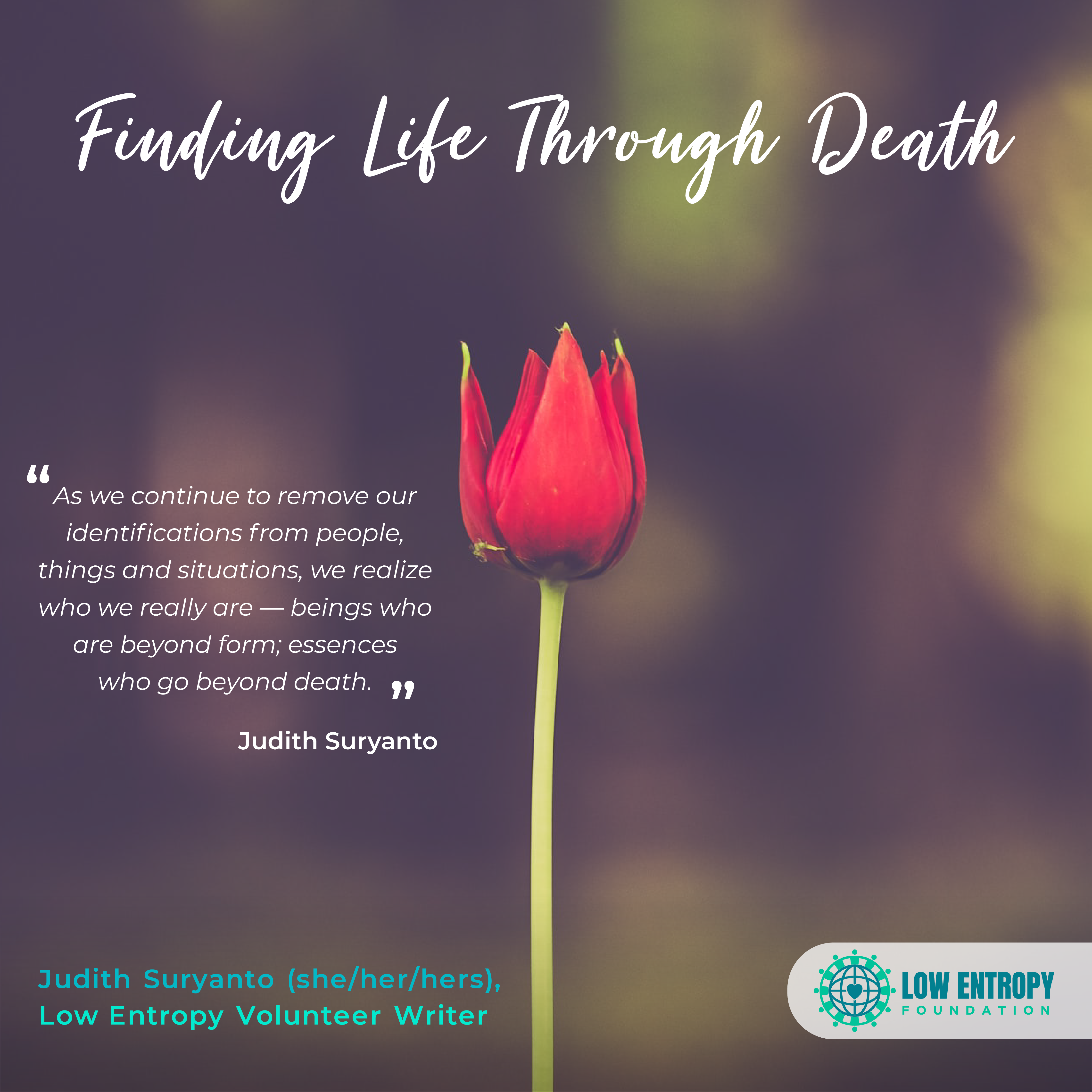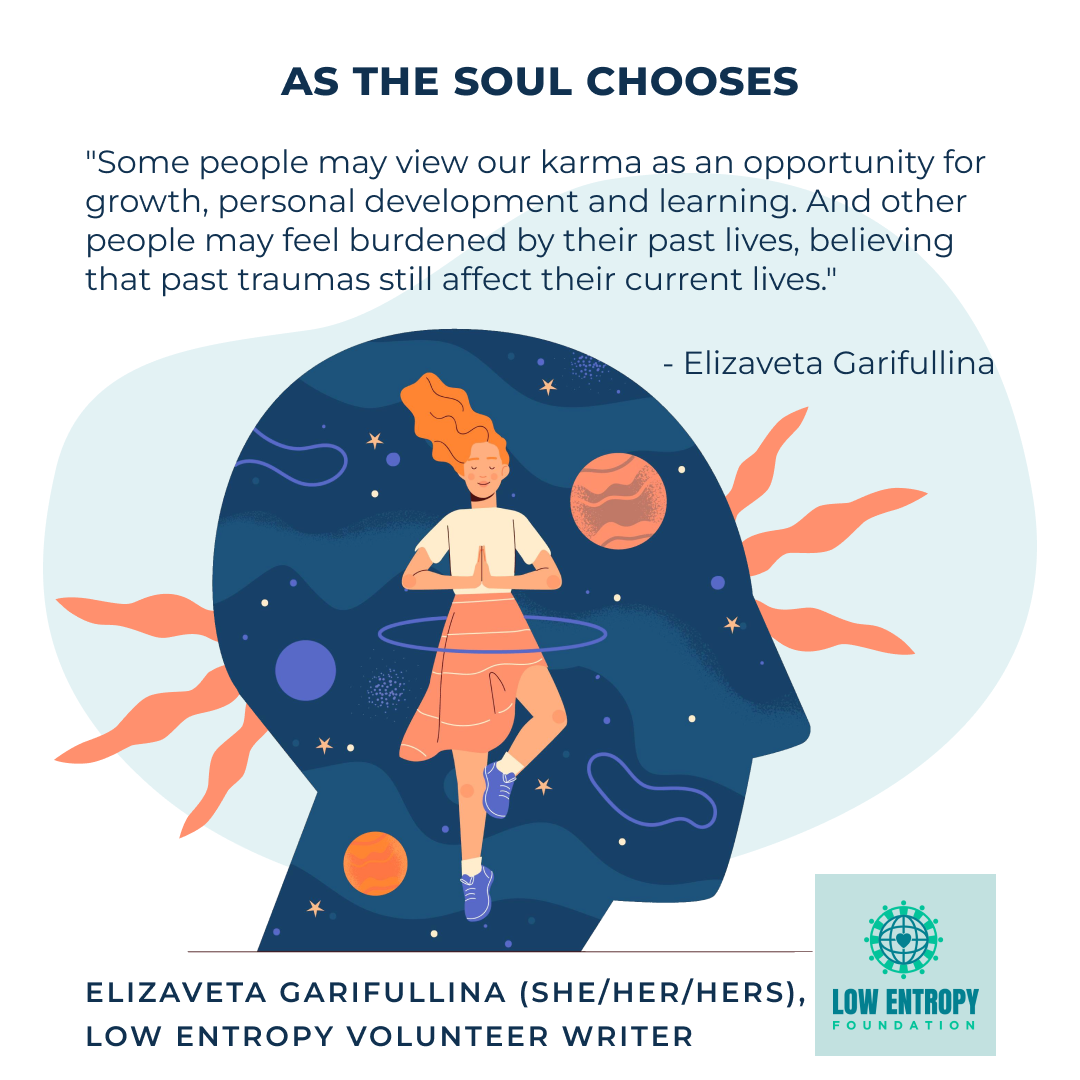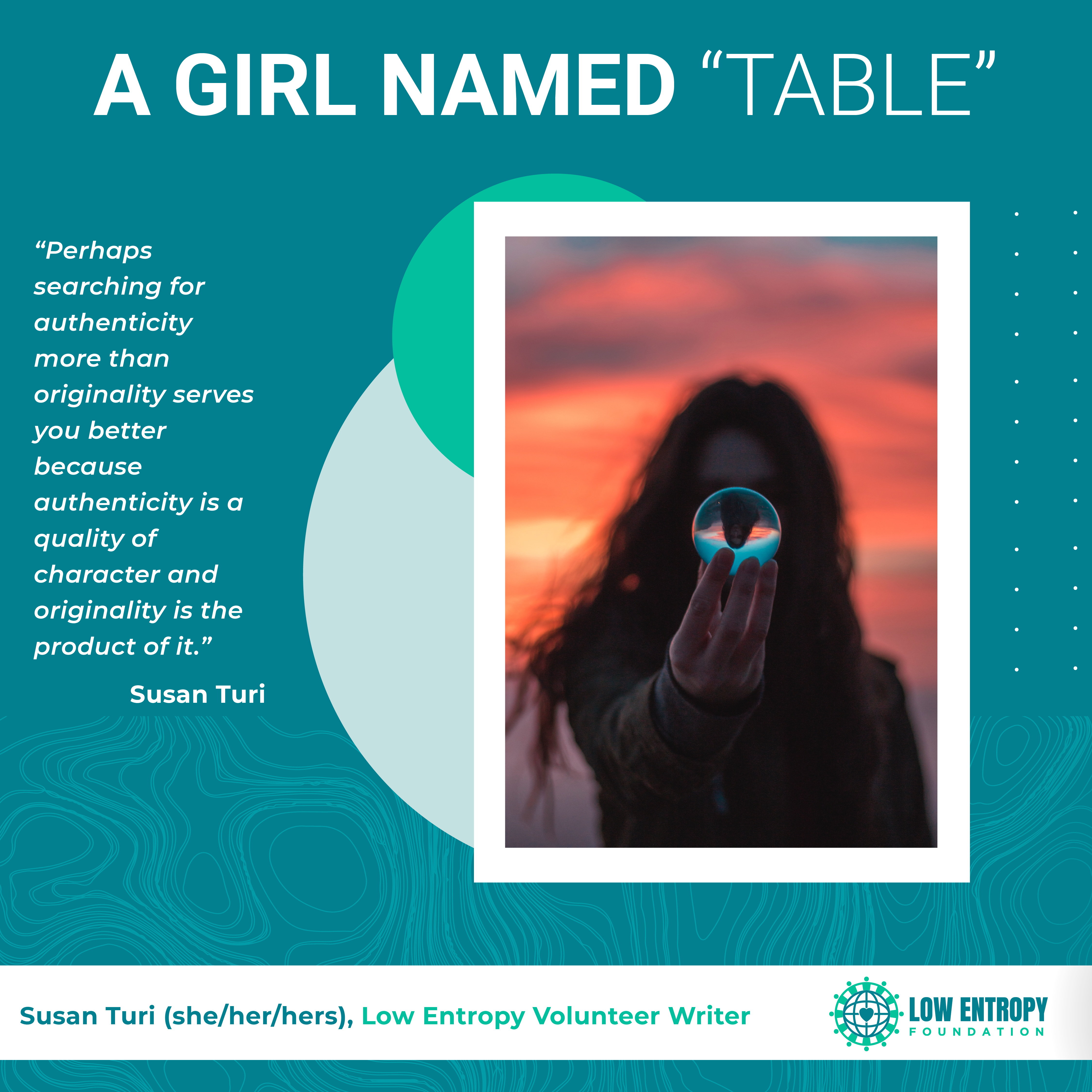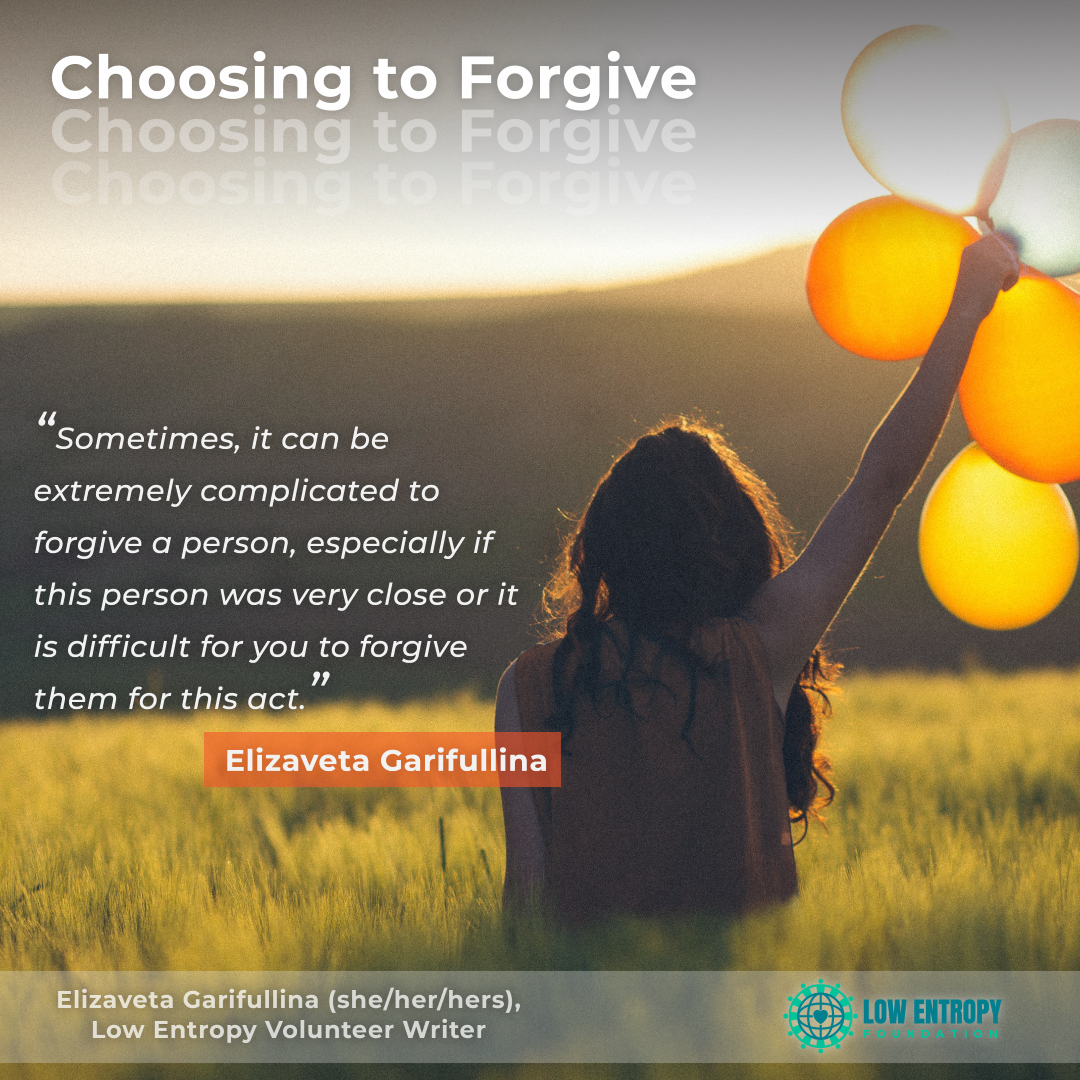Deema Katrina (she/her/hers), Low Entropy Volunteer Writer
What are your hobbies? This question made my mind go blank for the majority of my life. It wasn’t that I didn’t know what I enjoyed doing, but more that I couldn’t think of an answer that would accurately depict what I had imagined a hobby to be. When I thought of someone with a hobby, I envisioned them playing a sport or an instrument or painting or doing photography, etc. I envisioned their answer to this question being concrete and measurable. And I envisioned them having a defined interest they could proudly present to the world as a form of personal accomplishment.
This strict definition I had as a young adult led me to spend many years trying to be an idea rather than a person. I wanted to be good at things I presumed to be interesting to the world, instead of learning skills and finding activities that align with my personality. But in the process of looking for a conventional hobby, I learned many valuable lessons, which led me to discover some unconventional, yet truly fulfilling hobbies along the way.
In this blog, I will talk about the lessons I’ve learned and my advice on finding hobbies that you actually love and enjoy!
Acting
Growing up, arts occupied very little space in my life. I was focused on a practical educational path. I took lots of maths, chemistry, and physics. At university, I majored in Biochemistry, so science naturally fell into my life. But I always knew that I was just as much of a creative person as I was practical. I was happy with my major and saw it as the logical choice for my future, but every time my classmates talked about seeking internships or med school, my mind would start roaming on another planet. I couldn’t imagine having my life revolve around science, and I struggled to connect with people around me, which led me to develop anxiety shortly after my first year. I felt alone in my thoughts and was desperate for a creative outlet.
One day, as I was walking to get my morning coffee, I saw a poster advertising the Act Club. I hadn’t thought about acting before and didn’t necessarily see myself as an actor. But I needed a hobby; an interesting one of course! So, I signed up. Acting workshops every Wednesday became part of my life for the next two years. I met many people majoring in Theatre and I really wanted to fit in. I socialised and talked to students from different backgrounds. And I told myself that theatre was going to be part of my new identity, which was an exciting idea at the time.
But after two years of attending workshops and volunteering in the yearly play, I became increasingly aware of how indifferent I really felt. Theatre wasn’t something I felt strongly connected to. If acting was a shape, I would mould it into a hobby of mine, but as soon as I blinked its composition would seep through my fingers like liquid impermanence. Regardless, I learned so much during my time with the club and felt a strong sense of community, which is something I had never experienced before. I also met my closest friends and the only ones who stuck in my life to this day.
Would I recommend Acting as a hobby?
Absolutely!
If you find an opportunity to be part of a theatre club, or any creative club, take advantage of it. You may find your next passion in life. And even if you don’t, you’ll surely make some memories for your future self to look back on. It’s a win-win situation.
Who is this hobby ideal for?
Someone who likes theatre and wants to be part of a community of like-minded people.
Questions to ask yourself before joining a club:
1- What can I learn from joining this club? Is this knowledge valuable to me?
2- What positive outcomes do I foresee this club having on my life (or the life of others)?
Rating: 8/10
Playing an Instrument
This one seemed obvious. If you play an instrument, you get instant bonus points on the “interesting person” scale. So I naturally had to pick up my instrument. In a burst of excitement, I went to my local guitar shop and picked up an acoustic. I didn’t particularly see myself playing the guitar, but I imagined other people playing it, and it looked dreamy.
To be fair, in your early twenties, a lot of hobbies look dreamy. And it can be hard to tell whether your personality aligns with what you’re dreaming of, or if you’re just romanticising the idea of it. I sure did my fair share of romanticising in my early twenties, and I wish someone would have told me how true magic comes from within, or at least how to look within before I pursue things.
Needless to say, I picked up my guitar and spent the next eight months learning chords and songs. I even bought a guitar-learning app subscription to stay consistent with my learning. Time passed by and I was making progress, but the spark I had for my guitar was gradually fading. I then switched to playing the Ukulele to bring a sense of novelty into my learning, which it did for a while. But as time went by, practising my instruments began to feel more like a chore than anything else. So, I stored my instruments in their canvas case, indefinitely.
Would I recommend learning to play an instrument as a hobby?
Yes and no.
Anyone who plays or played an instrument will tell you that consistency is key. You have to block time in your schedule to practise your instrument. You have to be focused. And you have to maintain a balanced ratio of learning to practising what you’ve learned. If you like sticking to a routine and want to strengthen your self-discipline, picking up an instrument is a great way to do so!
However, since the process of learning an instrument is innerly-driven, that makes it the least social. Another downside is that if you leave your instrument to collect dust in your room, you’ll soon lose all the knowledge you’ve worked so hard to build.
Who is this hobby ideal for?
Someone who loves a particular instrument and is self-motivated.
Questions to ask yourself before learning an instrument:
1- Do I enjoy listening to the music that is played by the instrument I’m seeking to learn?
2- When I imagine my future-self playing that instrument, what does that look and feel like?
Remember that your motivation for learning should come from a desire to be, and not from a desire to fulfil a social role.
Rating: 6/10
Photography
In summer 2019 I bought my first ever professional camera and was super excited to take photos. I walked all over the city and explored very interesting locations on my journey to capture the perfect shot. Throughout this process, I realised how much I like to walk and to explore different neighbourhoods. Walking increased my calmness and self-awareness. It made me feel more in-tune with myself and the world surrounding me. And it made me develop a strong sense of belonging to the city I lived in. I would walk for miles, tirelessly. My camera was there to accompany me, but I was more excited for my walks than I was to take photos. I eventually stopped worrying about taking the perfect shot, but I never stopped exploring new places.
Would I recommend photography as a hobby?
Yes, but it comes with a cost.
While doing photography, you’ll build your knowledge of camera specifications. You’ll learn what an aperture and shutter speed and ISO are, and how to tweak those specifications to take the perfect shot. You’ll learn about photo editing apps and software and may discover your unique style of editing. Whether you end up being a professional photographer or remain an amateur, the knowledge you’ll gain from doing photography will not go to waste.
However, cameras and lenses can get quite expensive. Editing software such as Photoshop and Lightroom also come with a subscription cost, making this hobby not the most cost-efficient. So keep that in mind if you’re a person on a budget.
Who is this hobby ideal for?
Someone who is a perfectionist, imaginative, and creative.
Questions to ask yourself before learning photography:
1- Do I tend to take many photos looking for the optimal lighting and angles?
2- Am I intrigued by photo-editing and want to learn more about it?
Rating: 7/10
Realisations leading to current hobbies
After trying these conventional hobbies and a few others, the pandemic hit. The change in my life was drastic and I felt a huge mindset shift, like many others. I spent a lot of time self-reflecting through journaling. I also meditated daily, which helped me in developing a clearer headspace and a better understanding of what makes me me.
Through meditation and journaling, I discovered the top three things that would bring me happiness and fulfillment. Those were digital art, reading articles, and taking walks.
I discovered my love for digital art by observing my natural reactions to traditional vs. digital art forms. I was fascinated by digital mediums, especially illustrations. So I picked up Procreate in 2020 and I still draw digitally to this day. I also discovered my passion for reading articles. I liked the variety of topics I got to explore and the personal insight writers added to their blogs. The knowledge I gained from articles felt introspective. It held immense value in a condensed piece of text. And it recently inspired me to write my own blogs. Lastly, I found that taking walks made me calmer and more perceptive of my surroundings and of other people. It improved my physical health, my mental health, my awareness, and my sense of gratitude.
By sharing this, I want you to know that your hobby doesn’t have to be a fancy headline. All it takes for an activity to be your hobby is for you to feel calm and connected while doing it.
If you enjoy drinking coffee and trying out different blends, that could be your hobby. If you listen to podcasts or audiobooks while doing house chores, that could be your hobby. If you spend a lot of time decorating your apartment, decorating can be your hobby. Think of things that you truly enjoy doing when no one is watching.
Some of your hobbies may be complex and require building skills over time, while some of them can be very simple and might make you question whether they’re really worth talking about. But remember! What makes you unique and exciting as a person are the very things you’re excited about. When you talk about elements that bring you joy, the people around you will feel it through your expressions and body language. And you can add your personal touch to those seemingly simple things in a way that no one has ever done before.
Questions for your hobby-discovery journal:
1- Is there a topic that makes my brain light up?
2- What activity makes me feel engaged and lose track of time?
3- Am I ready to schedule time to practise something new?
4- What do I find meaningful in life?
5- What does failure look like to me? Am I ready to try and fail?
6- Who am I, really? (Write a list of your unique personality traits and core values)
7- How can I shape something I do well naturally into a hobby?
8- What do I pretend to like but really don’t?
9- If I won 10K and was only allowed to spend it on leisure items, what would I buy?
10- Am I holding onto a false representation of myself? What steps can I take to change that? (Here, you can think about authenticity and whether the ways in which you navigate the world – your interests and self-expressions – are true to you.)
These are some prompts to help you get started. But you can always come up with your own prompts along the way.
Happy hobby searching!
—
Deema Katrina is a Blogger from Montreal, Canada. She comes from a science background and currently works in the drug development industry, but her interests go beyond that. Some of the topics she passionately explores are self-awareness, personal development, and financial literacy. She believes that every person has the capacity to succeed when given the right tools and resources. Her goal is to share the knowledge she learned from delving into these topics, and to help others become a better version of themselves.







